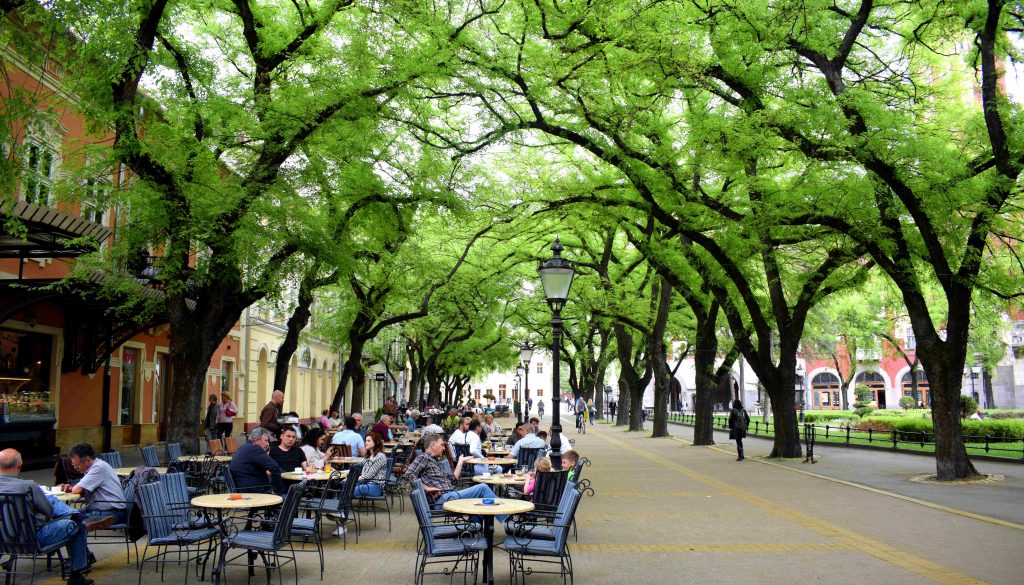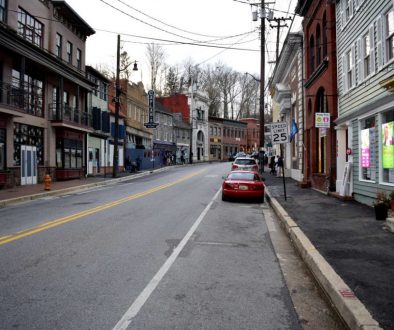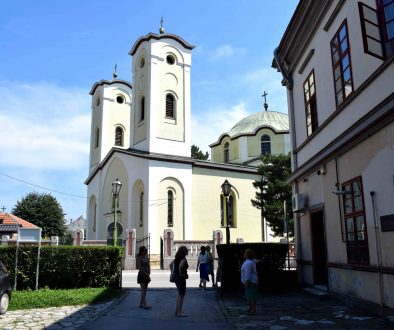Living in the city often means living without trees.
It’s the unfortunate and inevitable result of urbanization and development.
Trees get chopped to build buildings. Trees get chopped to expand roads. Trees get chopped because they get too old. In any city in any country, trees get chopped.
The net effect is that people get stuck living in cities with little greenery or nature.
But there is a city hidden up in the north of Serbia right on the border with Hungary where this process of chopping down trees seems miraculously to have been skipped over.
The city is called Subotica. And despite being Serbia’s fifth largest city and at one time the third largest city in the former Yugoslavia, few people visit or have heard of it.
It’s a shame. Because not only does the city have stunning architecture, it has greenery that the most advanced capitals of Europe could only hope to dream of.
Forget London. Forget Paris. Forget all those German cities that focus on sustainable development.
They have nothing on Subotica.
If ever there was a city that demonstrated the need for cities to preserve their greenery and plant trees wherever possible, then Subotica is it.
These photos were taken in late April 2018. Spring was in full swing in the Balkans, and the trees had already turned a lush green color. A beautifully renovated building welcomes you at the start of Subotica’s central pedestrian street.
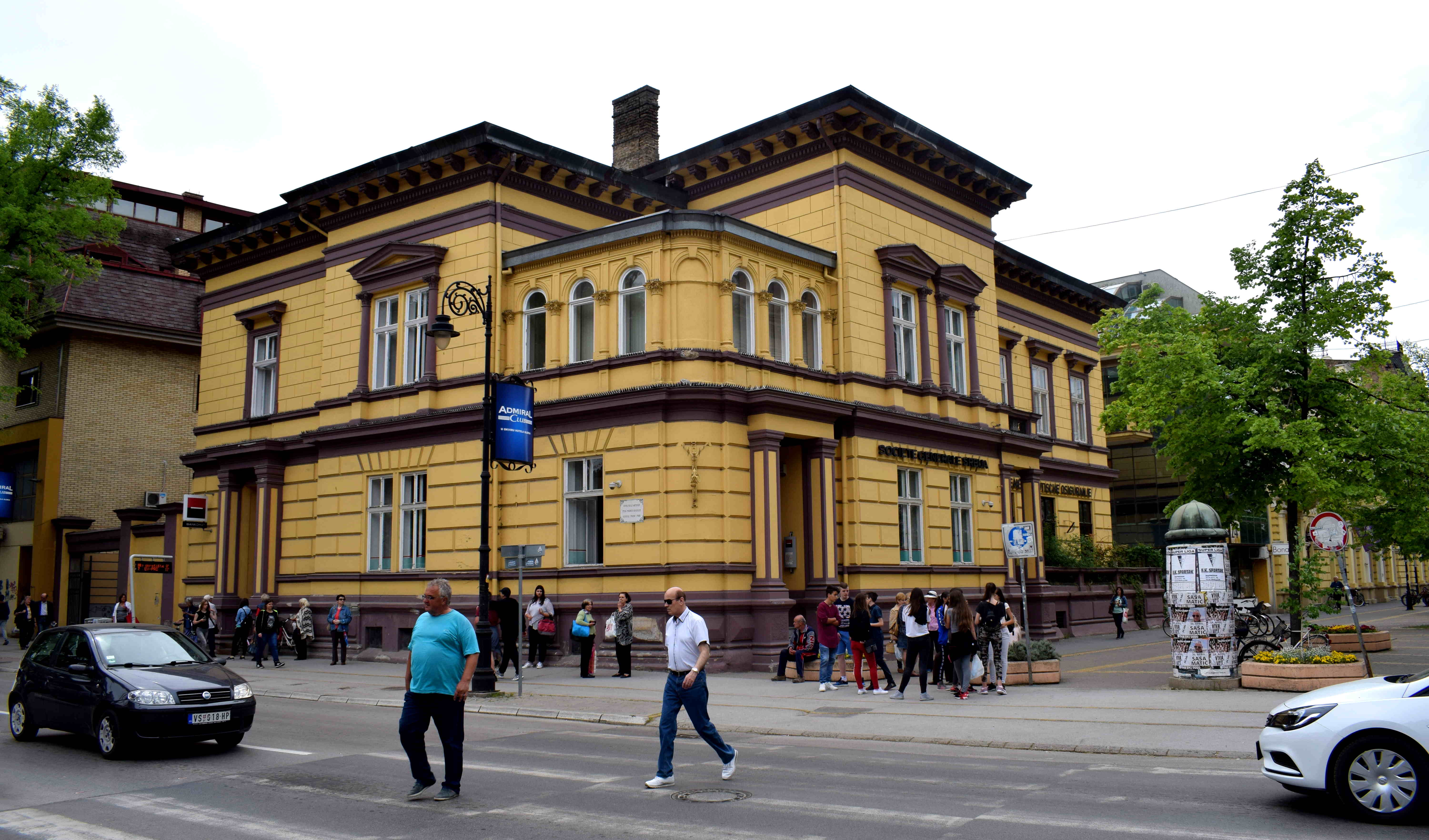 On the other side of the street there is a small little park called Rajhl Ferenca.
On the other side of the street there is a small little park called Rajhl Ferenca.
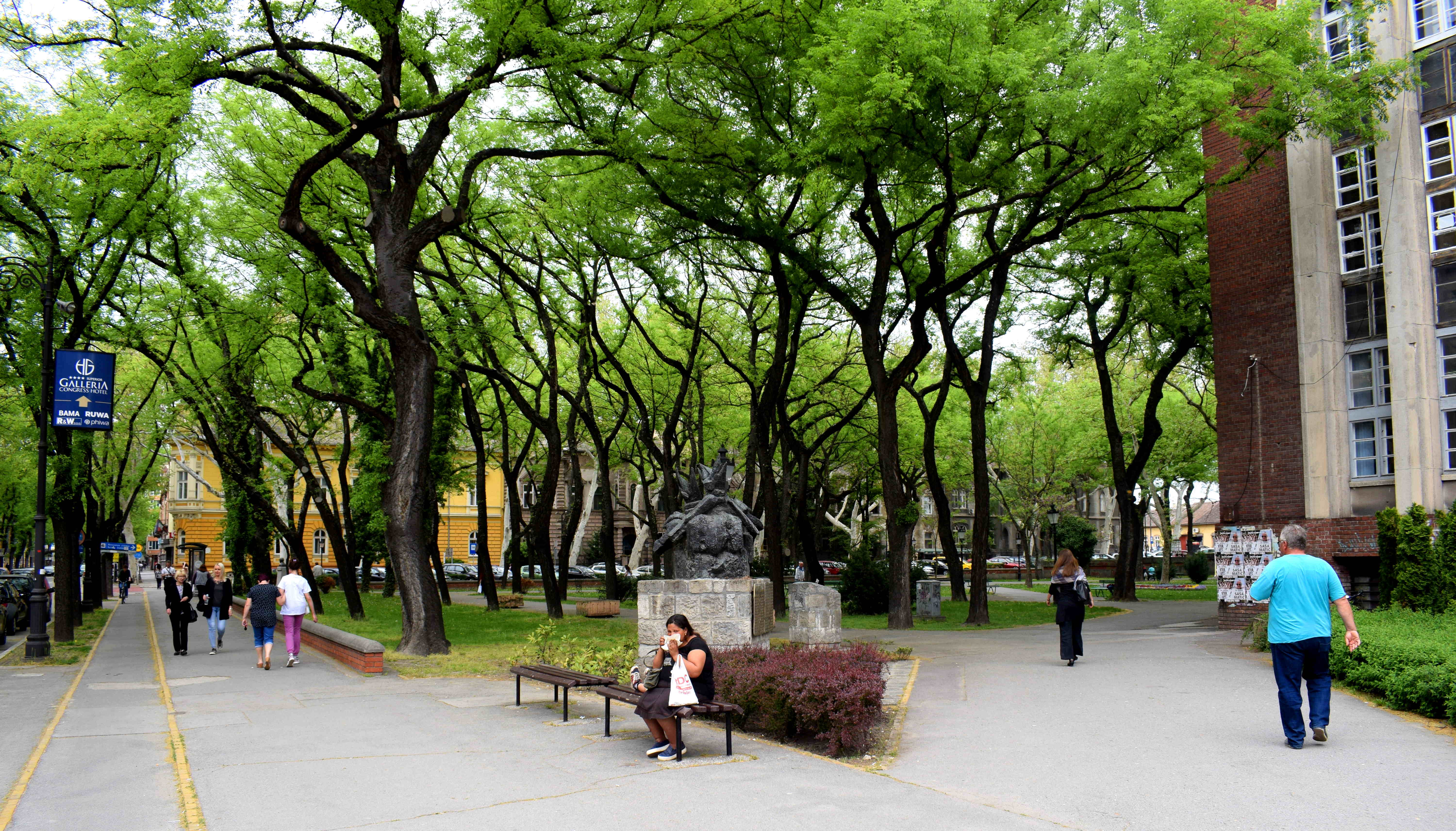 In most cities, just some green grass and benches would be enough to declare it a park. Here you get century-old trees hovering over you.
In most cities, just some green grass and benches would be enough to declare it a park. Here you get century-old trees hovering over you.
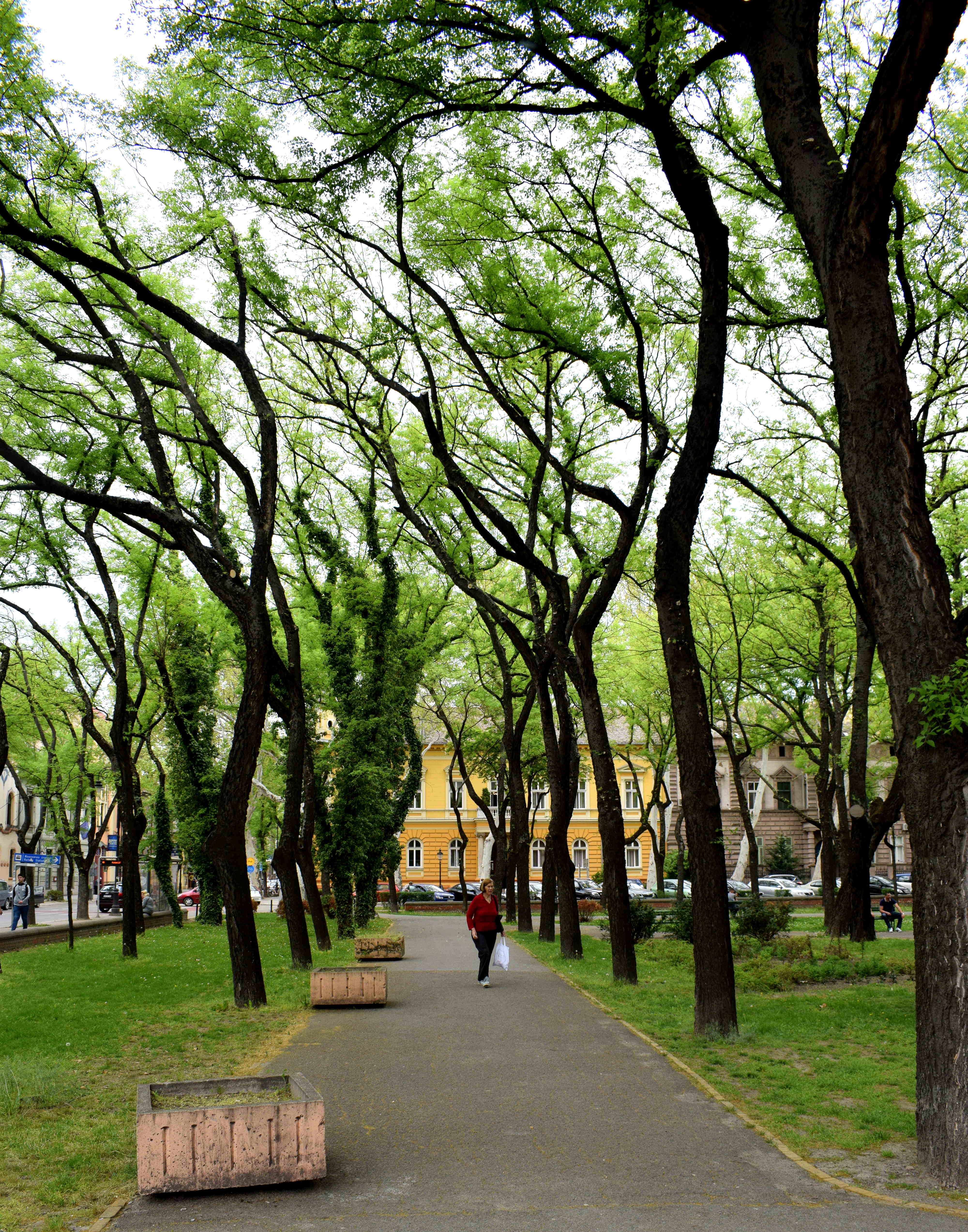 Subotica had no shortage of beautiful architecture too.
Subotica had no shortage of beautiful architecture too.
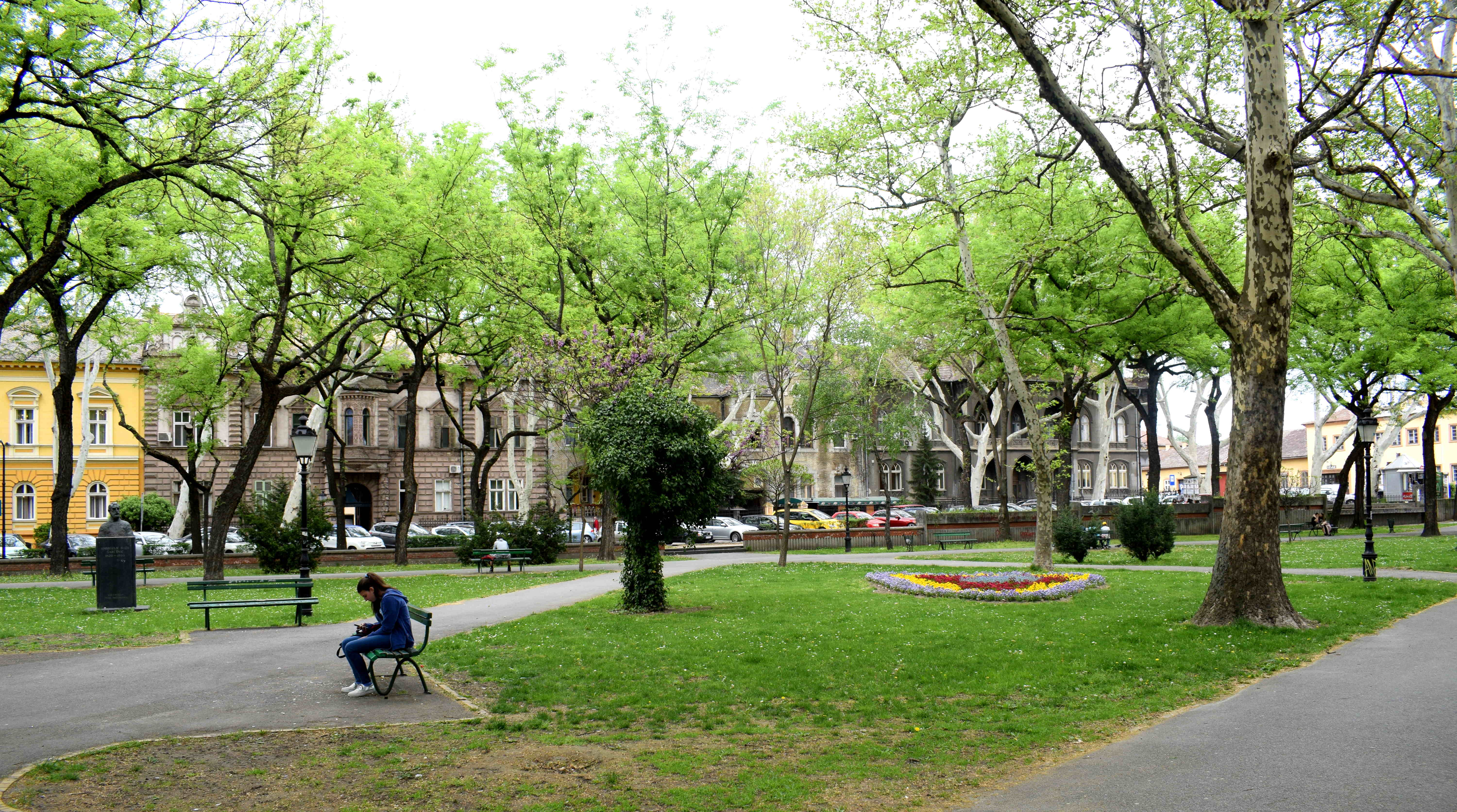 But the greedy trees were in the way and made it impossible to take a photo.
But the greedy trees were in the way and made it impossible to take a photo.
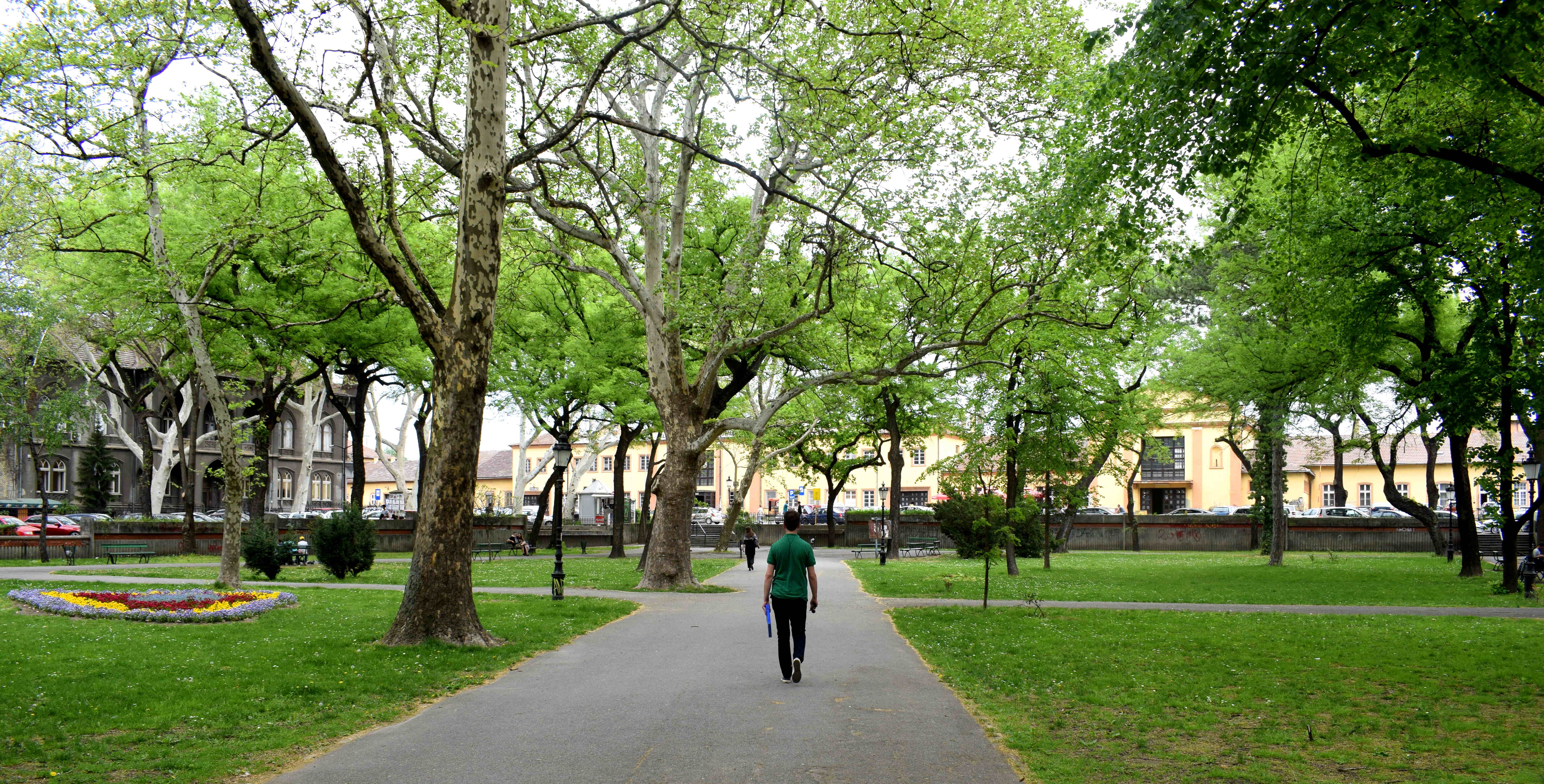 Many cities would have torn down all these trees long ago. In Subotica they stand tall and proud, forming an integral part of the city.
Many cities would have torn down all these trees long ago. In Subotica they stand tall and proud, forming an integral part of the city.
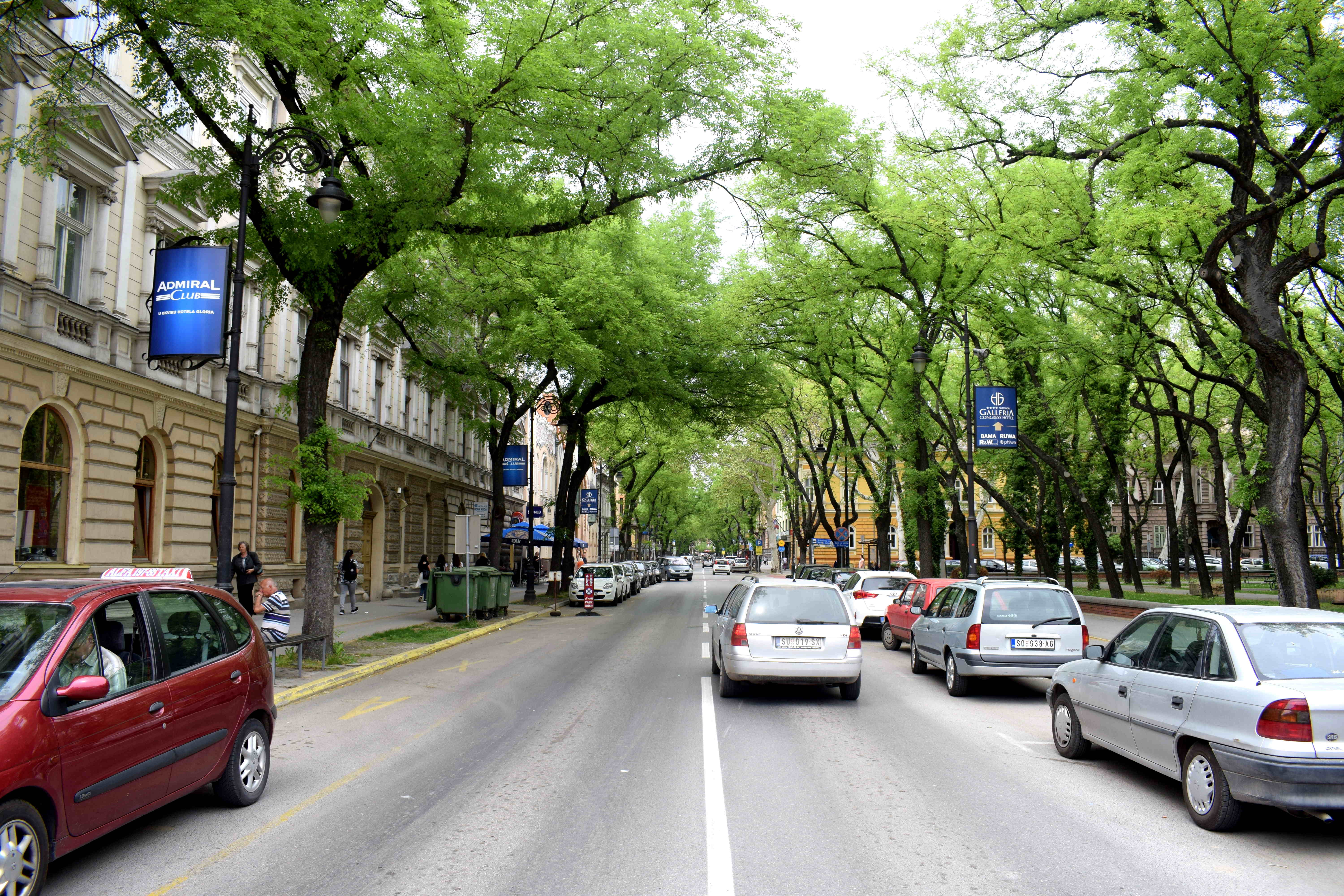 Subotica’s main pedestrian street is called Korzo and is filled with 19th century neo-classical architecture.
Subotica’s main pedestrian street is called Korzo and is filled with 19th century neo-classical architecture.
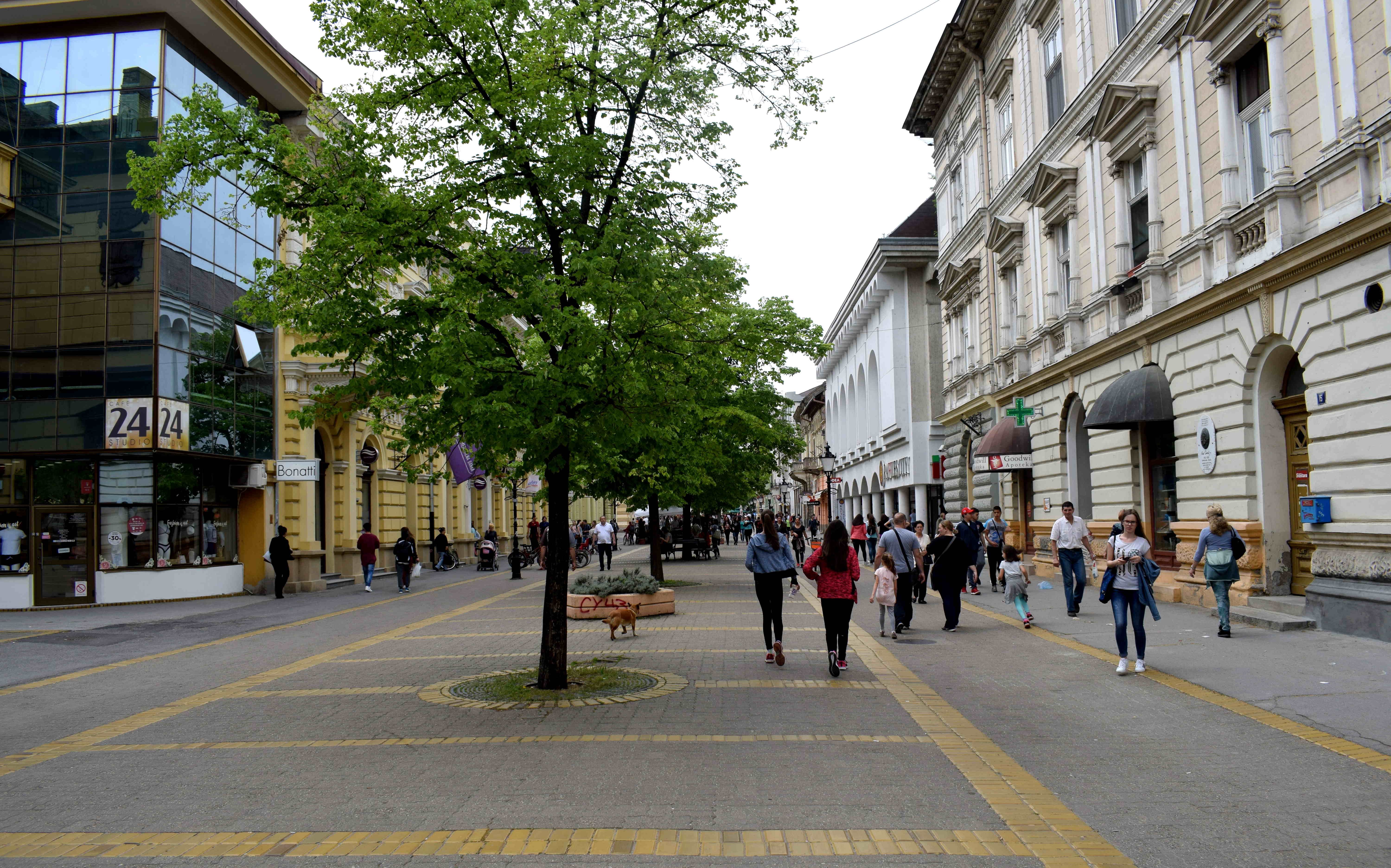 The city had its fair share of cyclists, though not as much as its Hungarian neighbor Szeged across the border. Part of the reason is the infrastructure was a lot worse. Szeged had dedicated bike lanes throughout most of the city, Subotica did not. Hopefully this will change soon and Subotica can follow in the footsteps of Szeged.
The city had its fair share of cyclists, though not as much as its Hungarian neighbor Szeged across the border. Part of the reason is the infrastructure was a lot worse. Szeged had dedicated bike lanes throughout most of the city, Subotica did not. Hopefully this will change soon and Subotica can follow in the footsteps of Szeged.
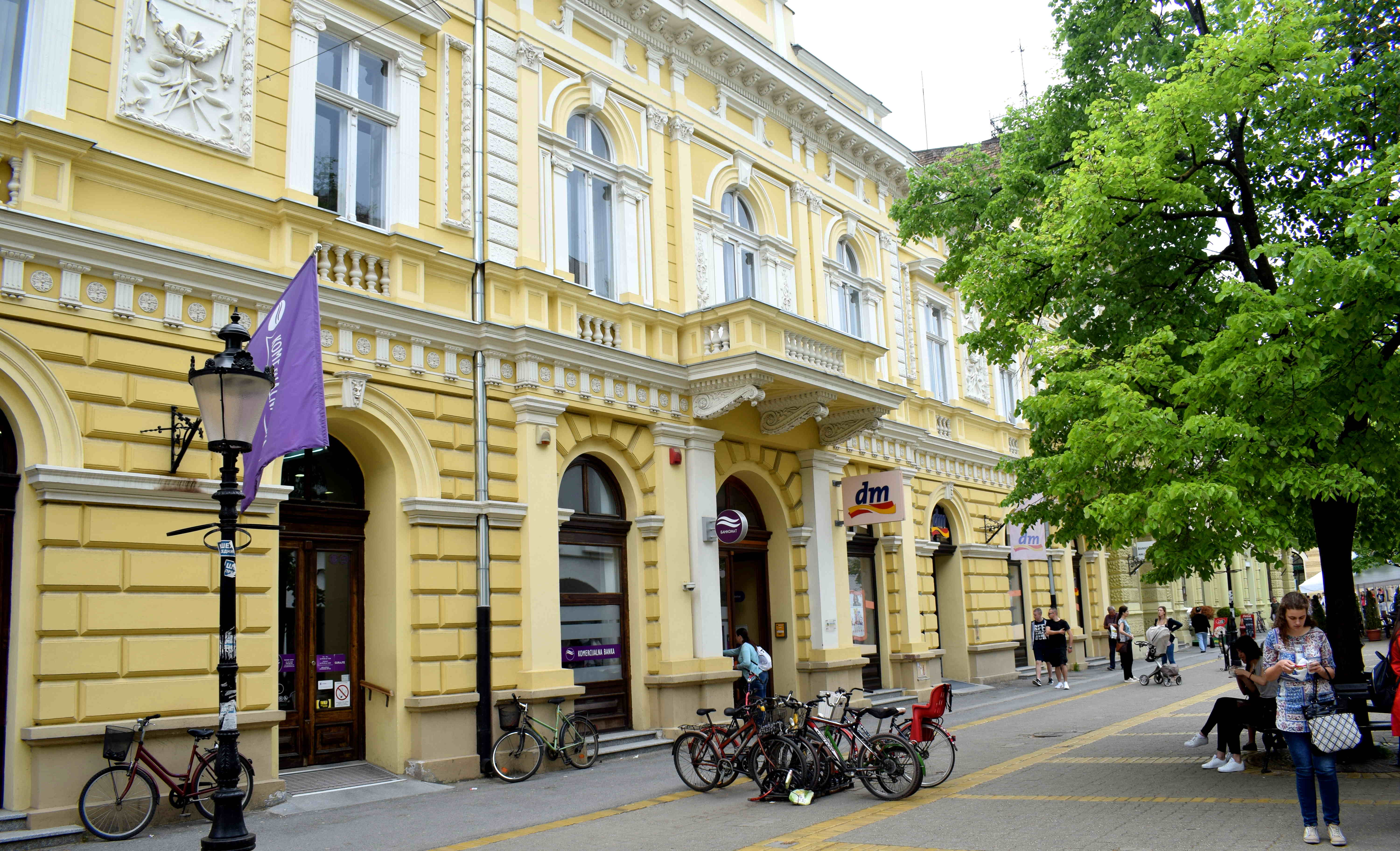 The center is filled with narrow side streets where cars are prohibited.
The center is filled with narrow side streets where cars are prohibited.
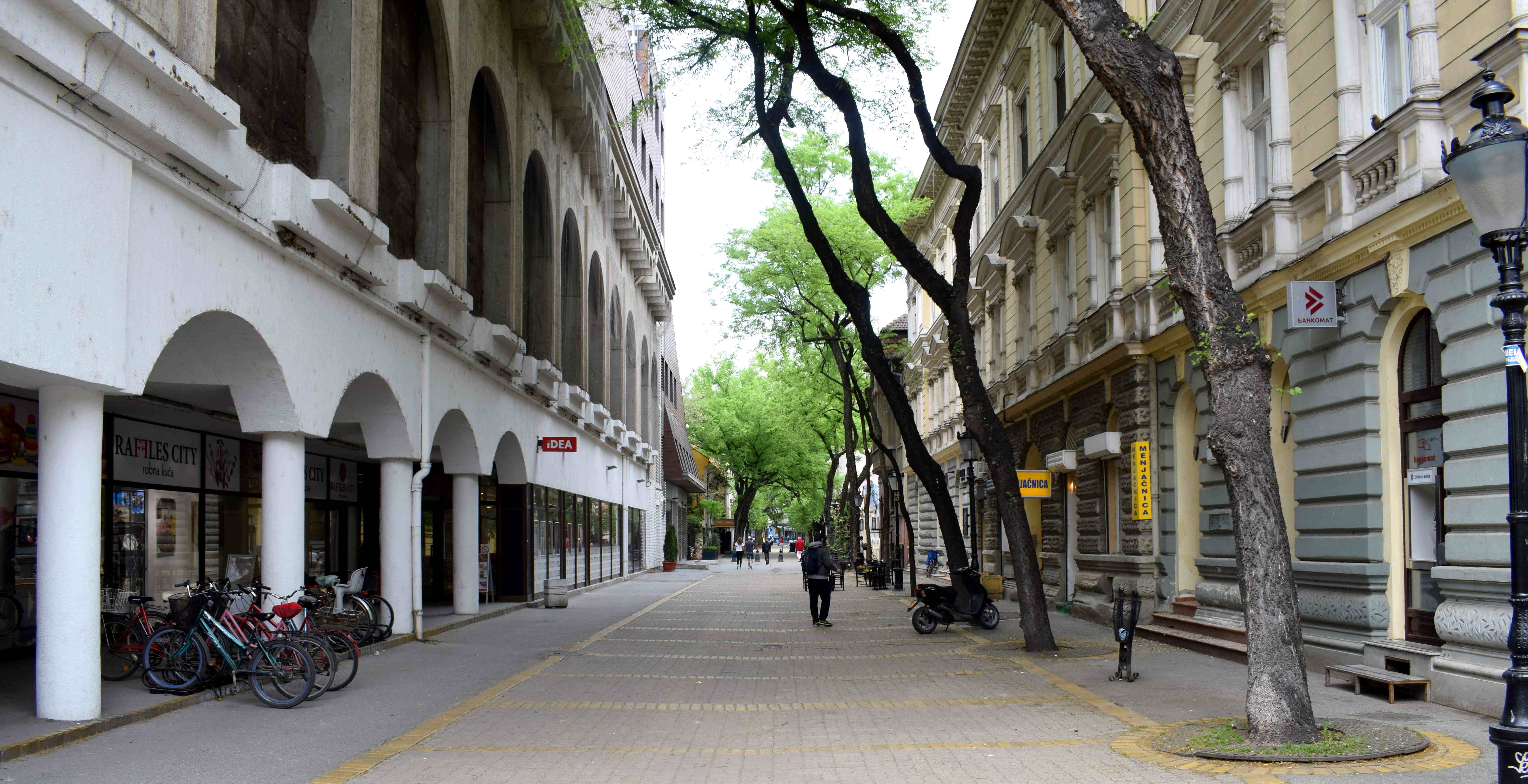 One of the best burgers I have ever had was at Fabrika Burger Bar in Subotica. Highly recommended.
One of the best burgers I have ever had was at Fabrika Burger Bar in Subotica. Highly recommended.
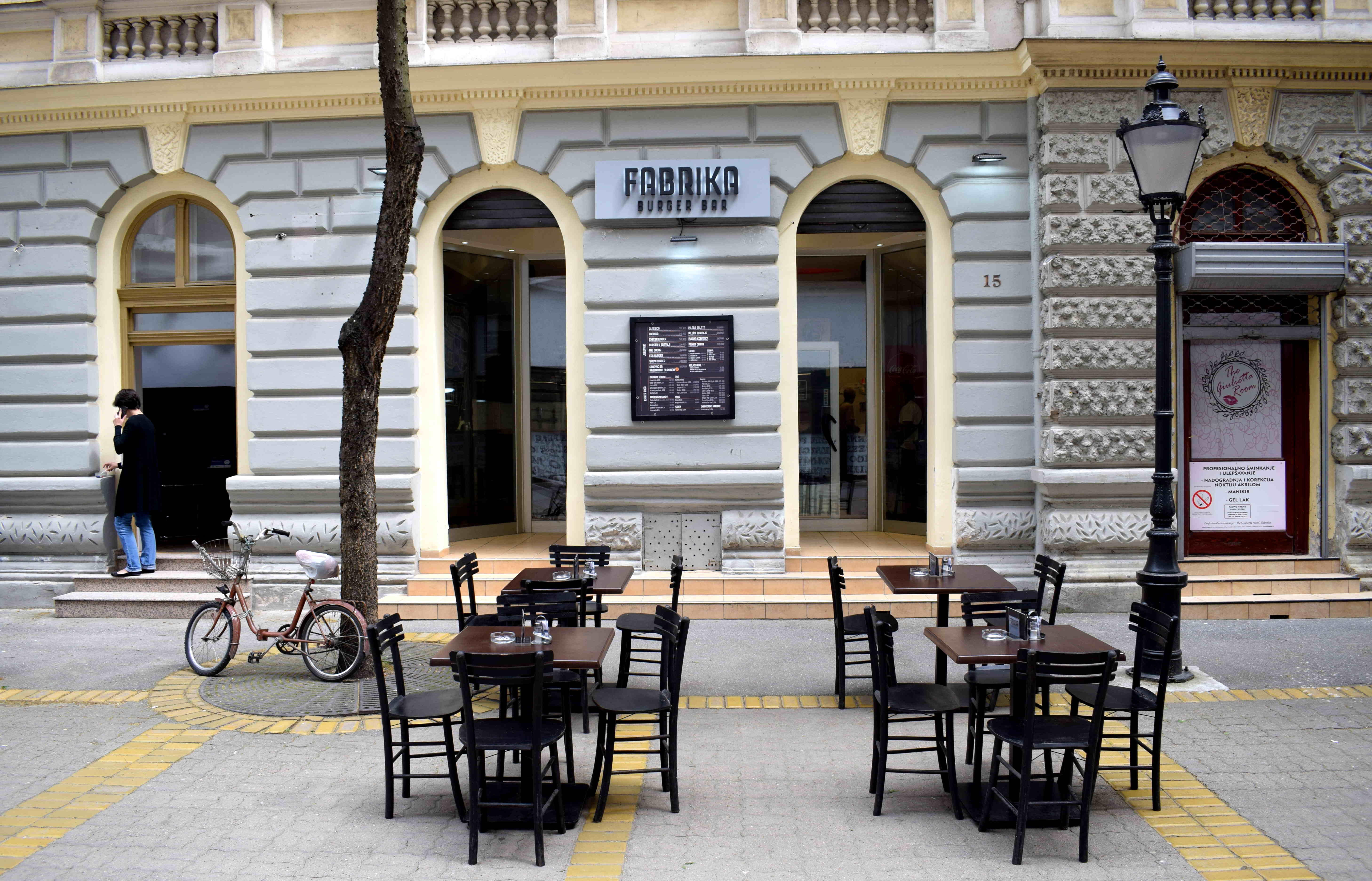 More trees in the center.
More trees in the center.
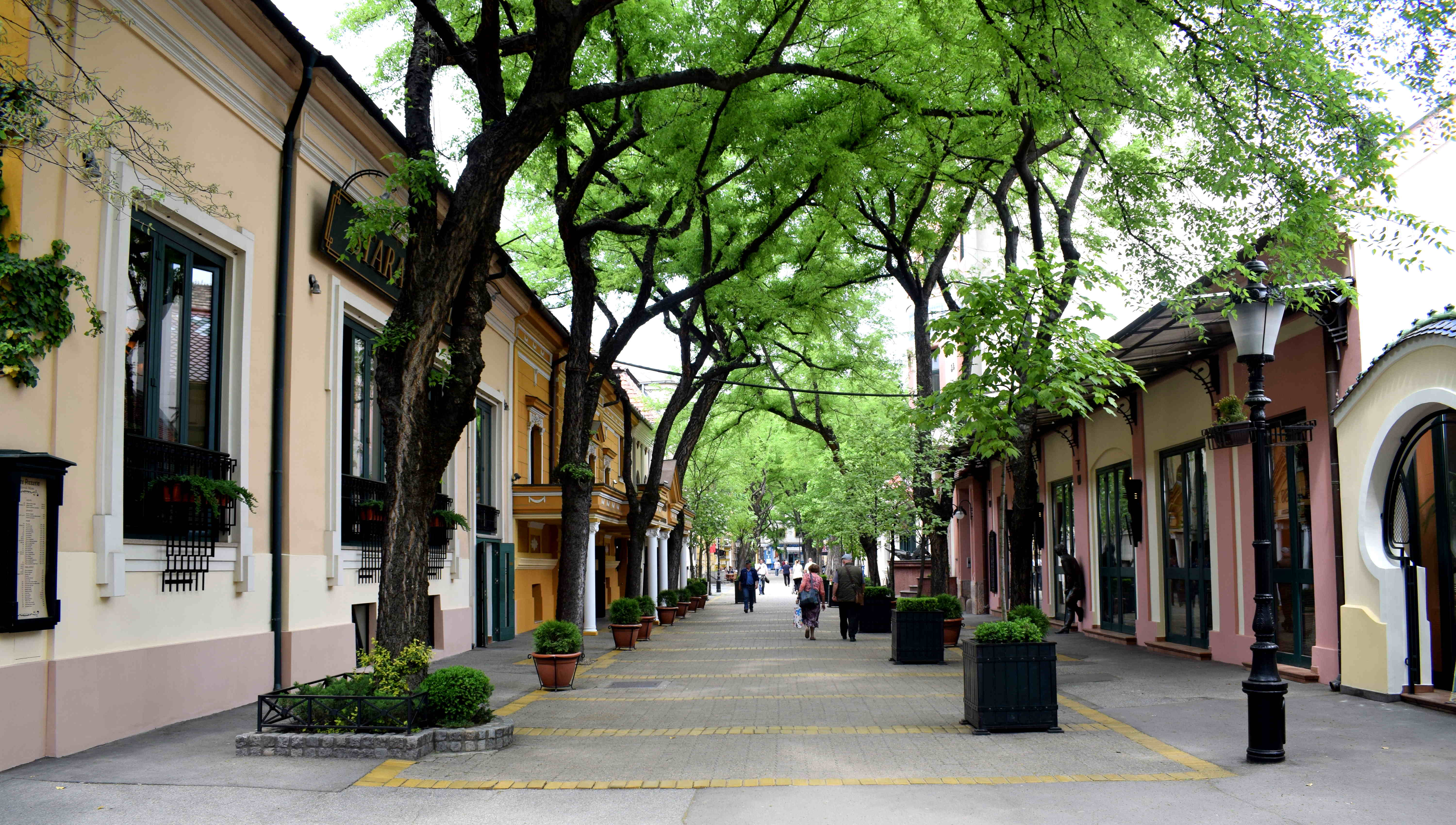 Subotica has a population of 97,910 according to the last Serbian census in 2011, making it the fifth largest city in Serbia. If you add in the adjacent urban settlement Palic, the population gets pushed up to 105,681. At one time however, Subotica was the third largest city in the former Yugoslavia shortly after WWI ended in 1918. The Serbian army occupied large parts of southern Hungary after the war which were populated by Serbs and South Slavs, an area now known as Vojvodina.
Subotica has a population of 97,910 according to the last Serbian census in 2011, making it the fifth largest city in Serbia. If you add in the adjacent urban settlement Palic, the population gets pushed up to 105,681. At one time however, Subotica was the third largest city in the former Yugoslavia shortly after WWI ended in 1918. The Serbian army occupied large parts of southern Hungary after the war which were populated by Serbs and South Slavs, an area now known as Vojvodina.
Initially Serbia wanted to claim not just Subotica, but push the Yugoslav border further north and incorporate the cities of Timisoara and Arad in today’s Romania and the Hungarian cities of Pecs, Baja and Szeged. But the great powers decided this was too much at the Paris Peace Conference in 1919 and limited Serbian claims to Subotica.
Although South Slavs formed a majority of the population in large parts of southern Hungary, the area was ethnically mixed, with large Hungarian, German and Romanian minorities, along with smaller pockets of Slovaks, Rusyns and Ukrainains. This multi-ethnic nature of Vojvodina remains to this day. Hungarians, in fact, are the biggest ethnic group in Subotica making up 33% of the population, followed by Serbs at 30% and Croats at 9%.
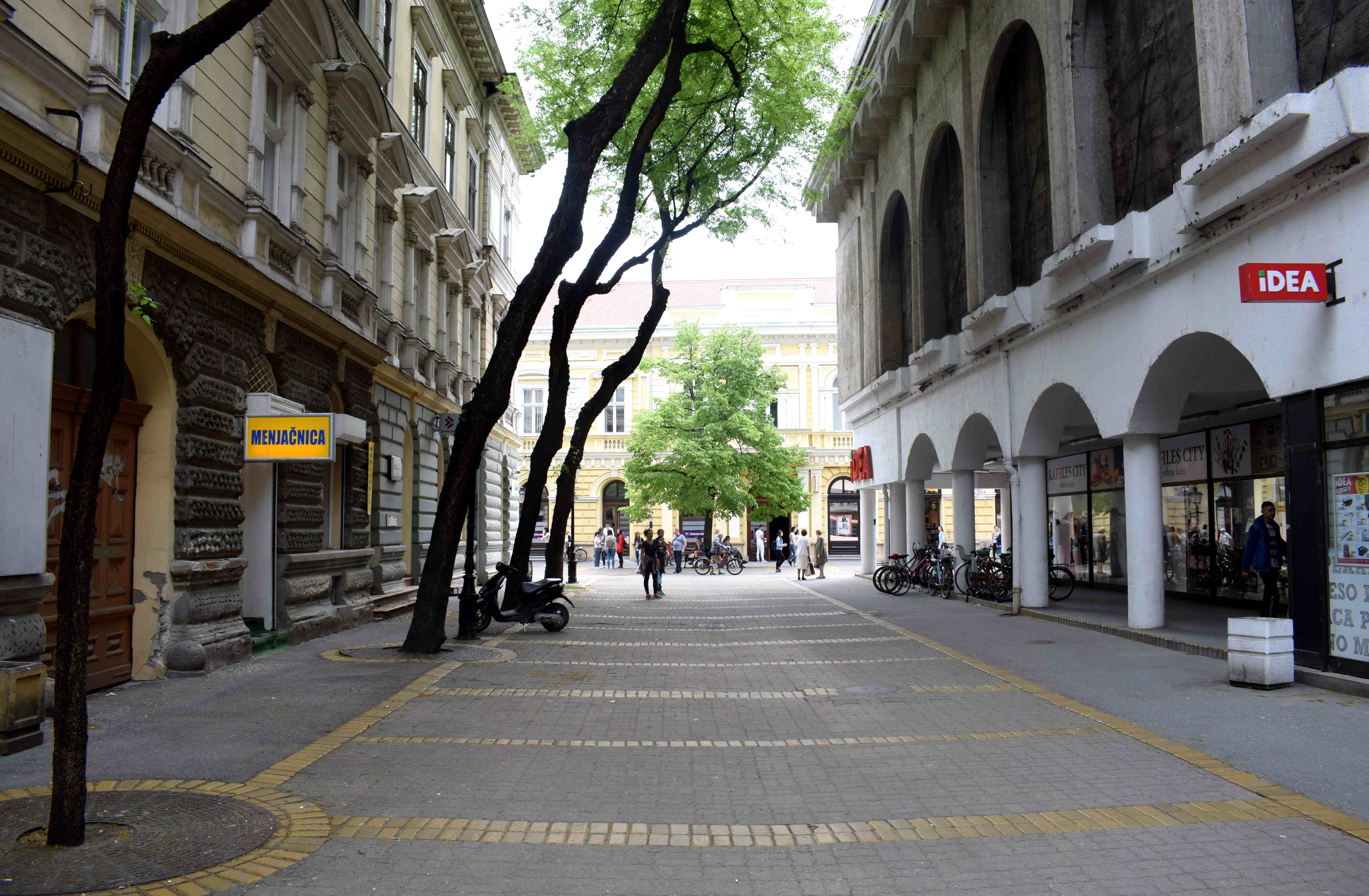 Restaurants with beautiful patios were sprinkled throughout the city.
Restaurants with beautiful patios were sprinkled throughout the city.
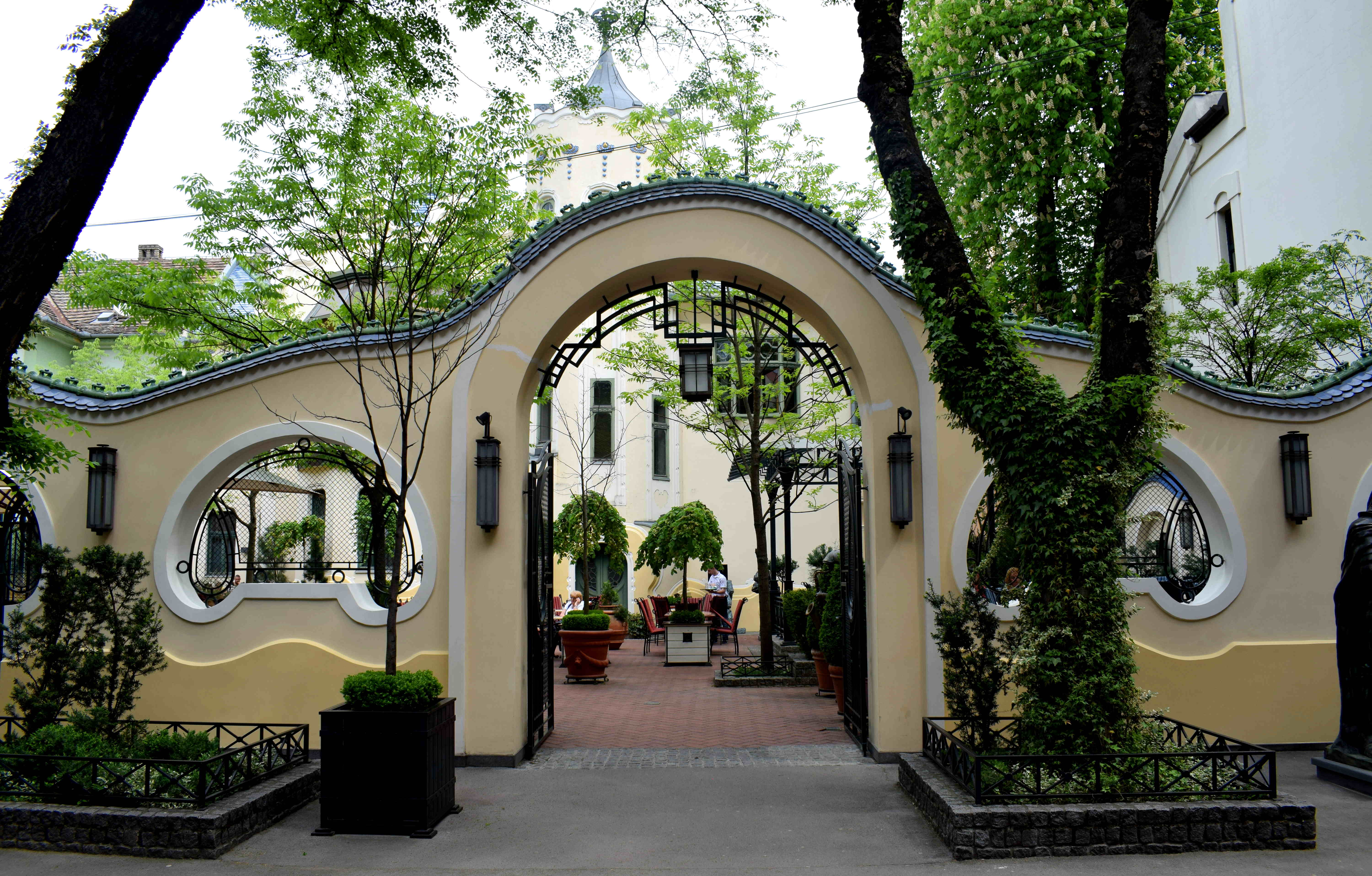 A tribute to the saxaphone.
A tribute to the saxaphone.
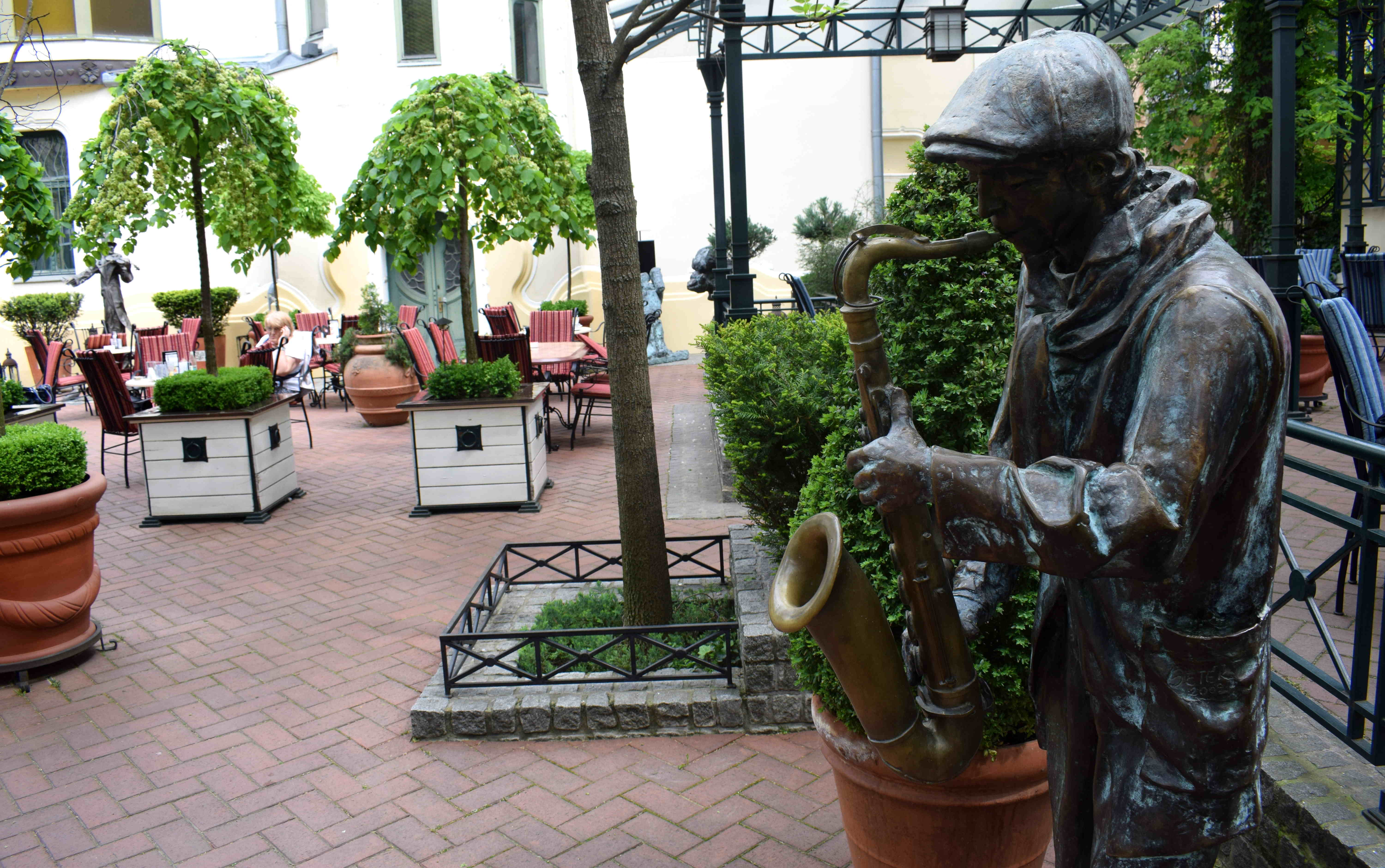 I can only imagine how nice this place must be in the evening when the tables fill up with people.
I can only imagine how nice this place must be in the evening when the tables fill up with people.

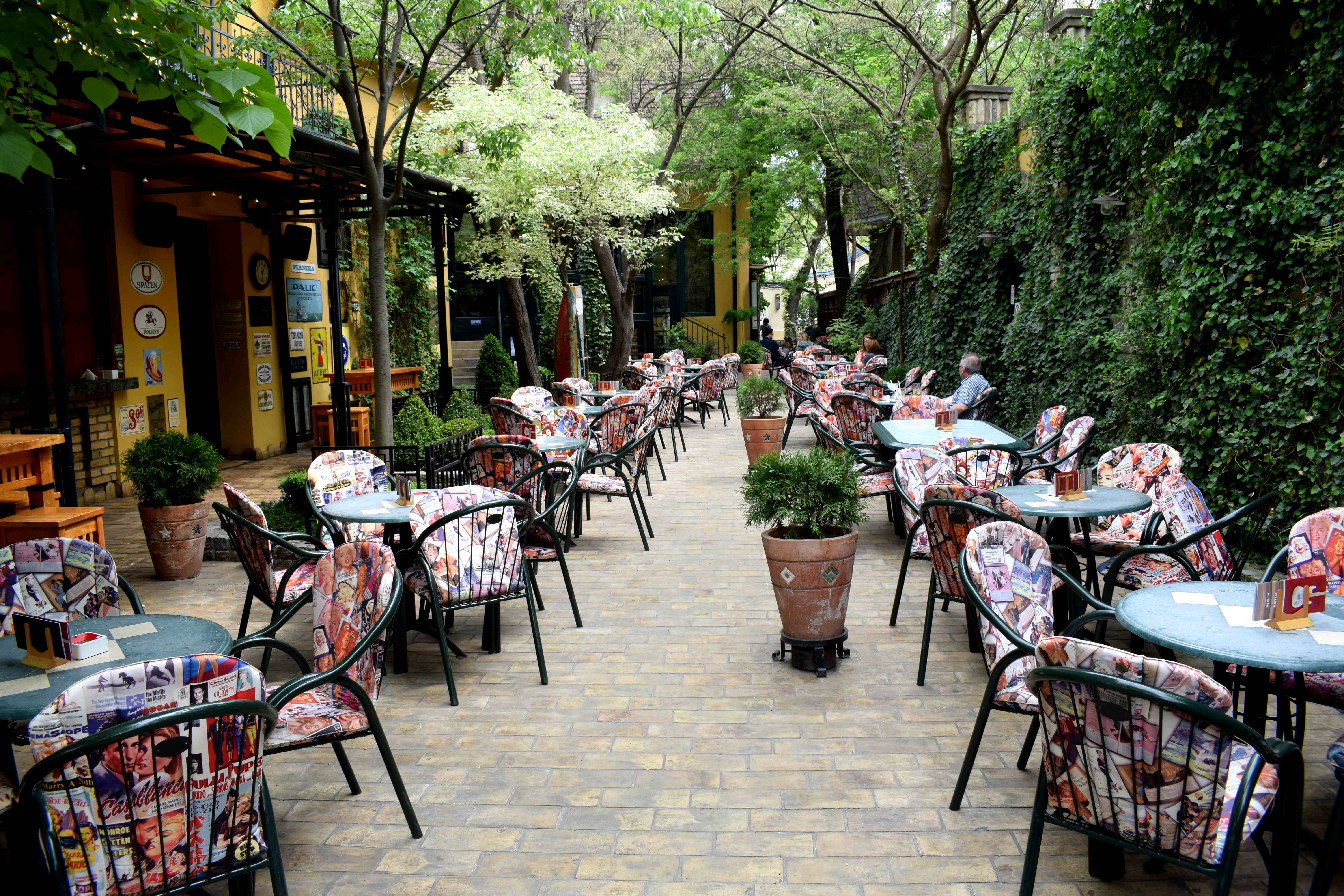 Looking back out onto the street.
Looking back out onto the street.
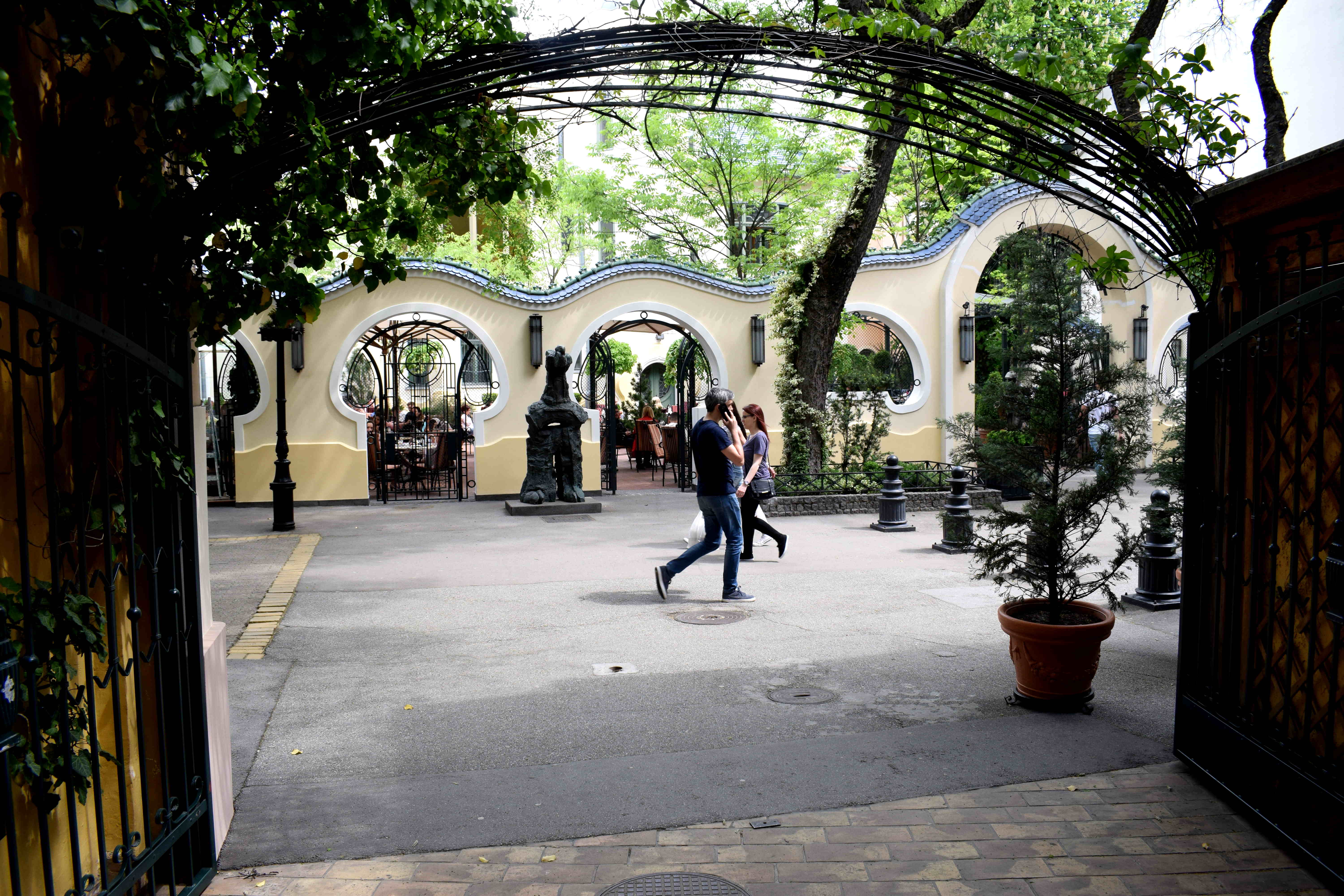 A pizzeria in an old renovated building.
A pizzeria in an old renovated building.
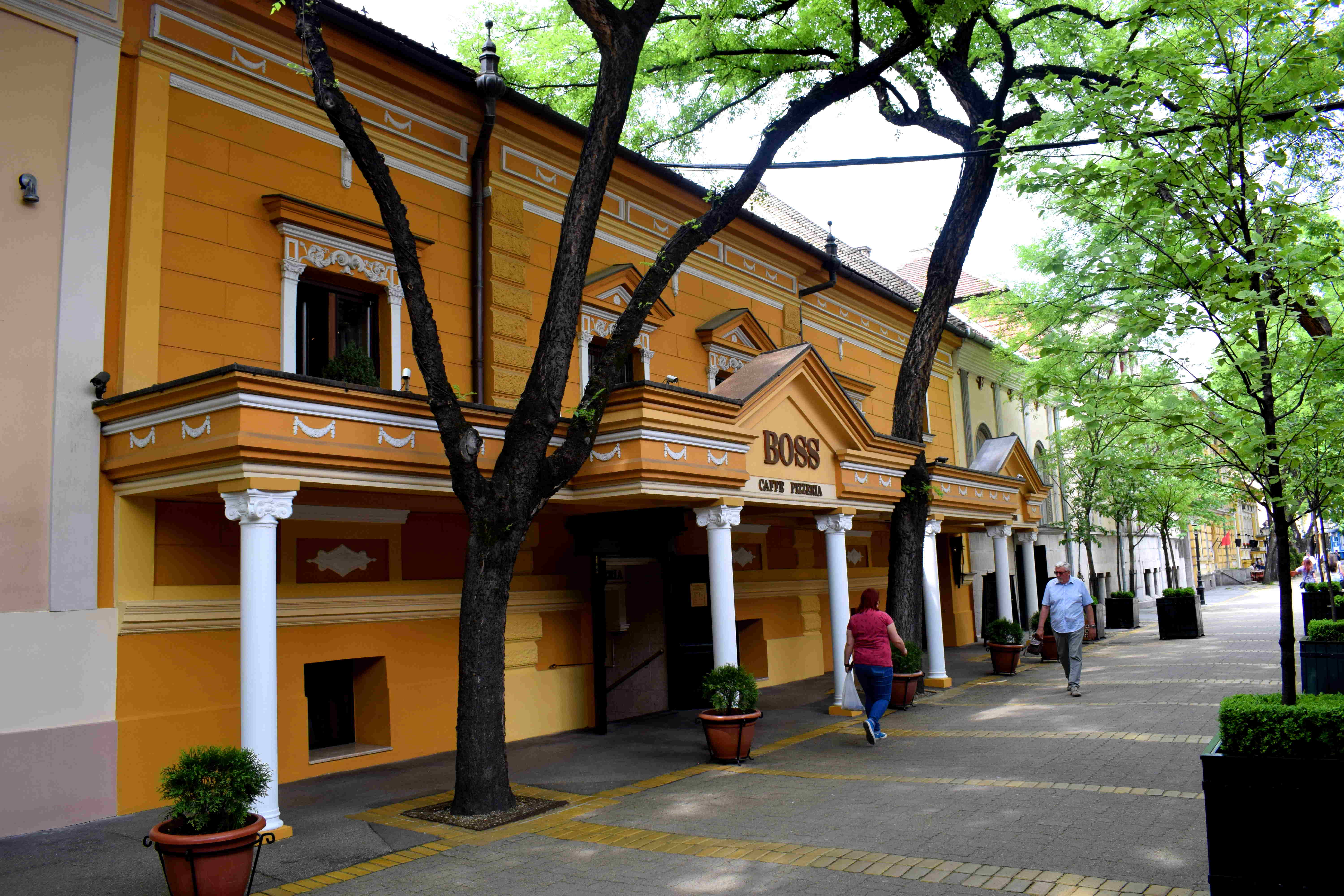 When the Ottoman Empire conquered Hungary, Subotica remained under the Turks for almost 150 years from 1542-1686. After the majority of the local population fled, the Ottomans settled the area largely with Orthodox Serbs who lived deeper south in the empire. The city was reconquered by the Habsburgs in 1687 and in subsequent centuries the Habsburgs would often encourage local Christian populations to rise up in Serbia which remained under the Ottomans. When these rebellions were suppressed, Christian Serbs would flee north to Hungary to seek refuge. In this way, as the centuries past, the southern part of Hungary came to dominated by Serbs.
When the Ottoman Empire conquered Hungary, Subotica remained under the Turks for almost 150 years from 1542-1686. After the majority of the local population fled, the Ottomans settled the area largely with Orthodox Serbs who lived deeper south in the empire. The city was reconquered by the Habsburgs in 1687 and in subsequent centuries the Habsburgs would often encourage local Christian populations to rise up in Serbia which remained under the Ottomans. When these rebellions were suppressed, Christian Serbs would flee north to Hungary to seek refuge. In this way, as the centuries past, the southern part of Hungary came to dominated by Serbs.
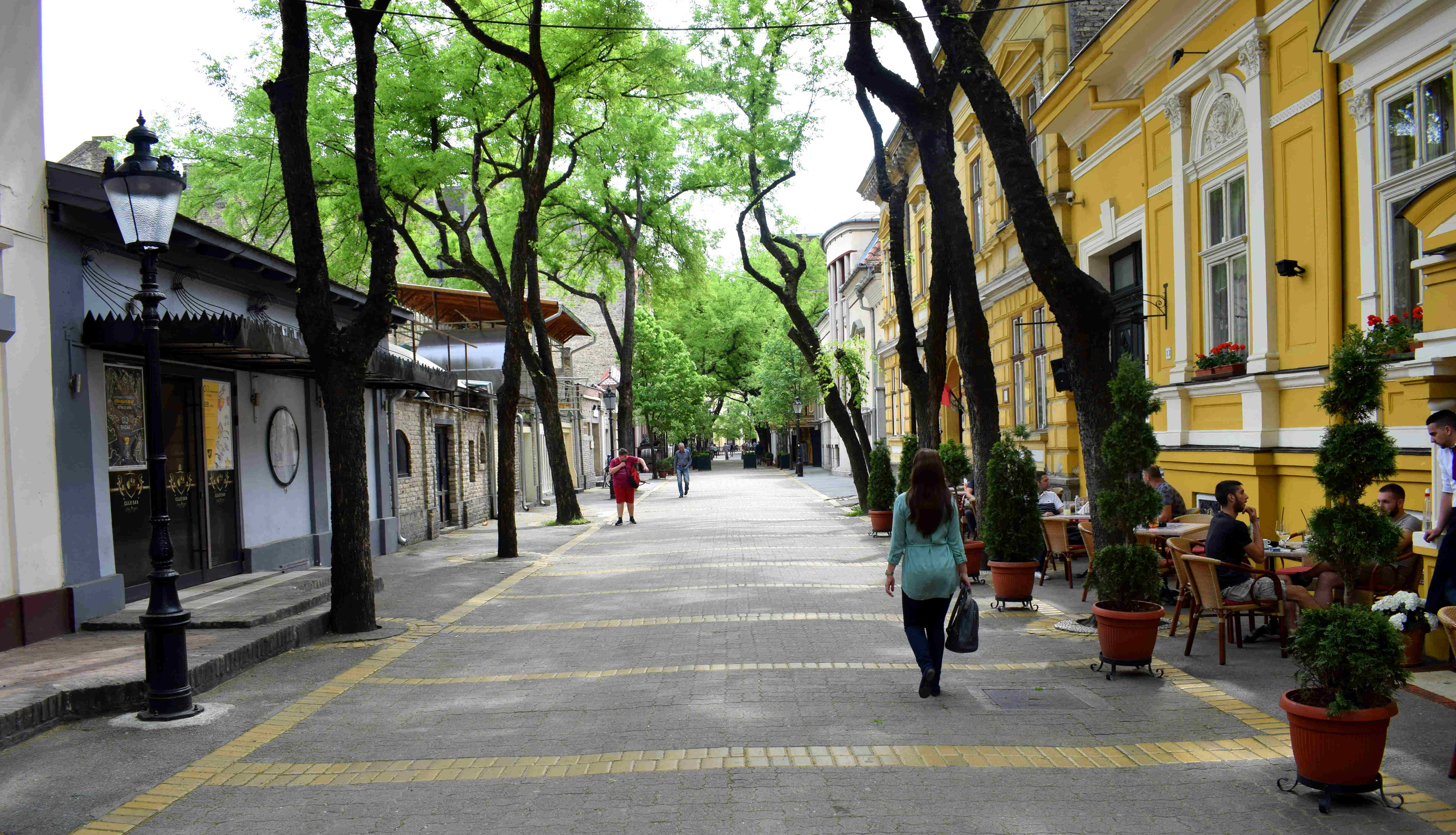 Subotica developed rapidly in the 19th century under Habsburg rule. The 1848-1849 revolutions that rocked the empire affected Subotica as well, with Serb leaders claiming the city to be included in their Serbian Vojvodship. After Russian and Habsburg troops quashed the rebellion, the city was included in a newly formed province of the empire called the Voivedeship of Serbia and Banat of Temeschwar. The capital was the city of Timisoara and the province existed from 1849-1860. It was during this time that Subotica got its impressive theatre in 1853, which was barbarically destroyed by local authorities in 2007. More on that later.
Subotica developed rapidly in the 19th century under Habsburg rule. The 1848-1849 revolutions that rocked the empire affected Subotica as well, with Serb leaders claiming the city to be included in their Serbian Vojvodship. After Russian and Habsburg troops quashed the rebellion, the city was included in a newly formed province of the empire called the Voivedeship of Serbia and Banat of Temeschwar. The capital was the city of Timisoara and the province existed from 1849-1860. It was during this time that Subotica got its impressive theatre in 1853, which was barbarically destroyed by local authorities in 2007. More on that later.
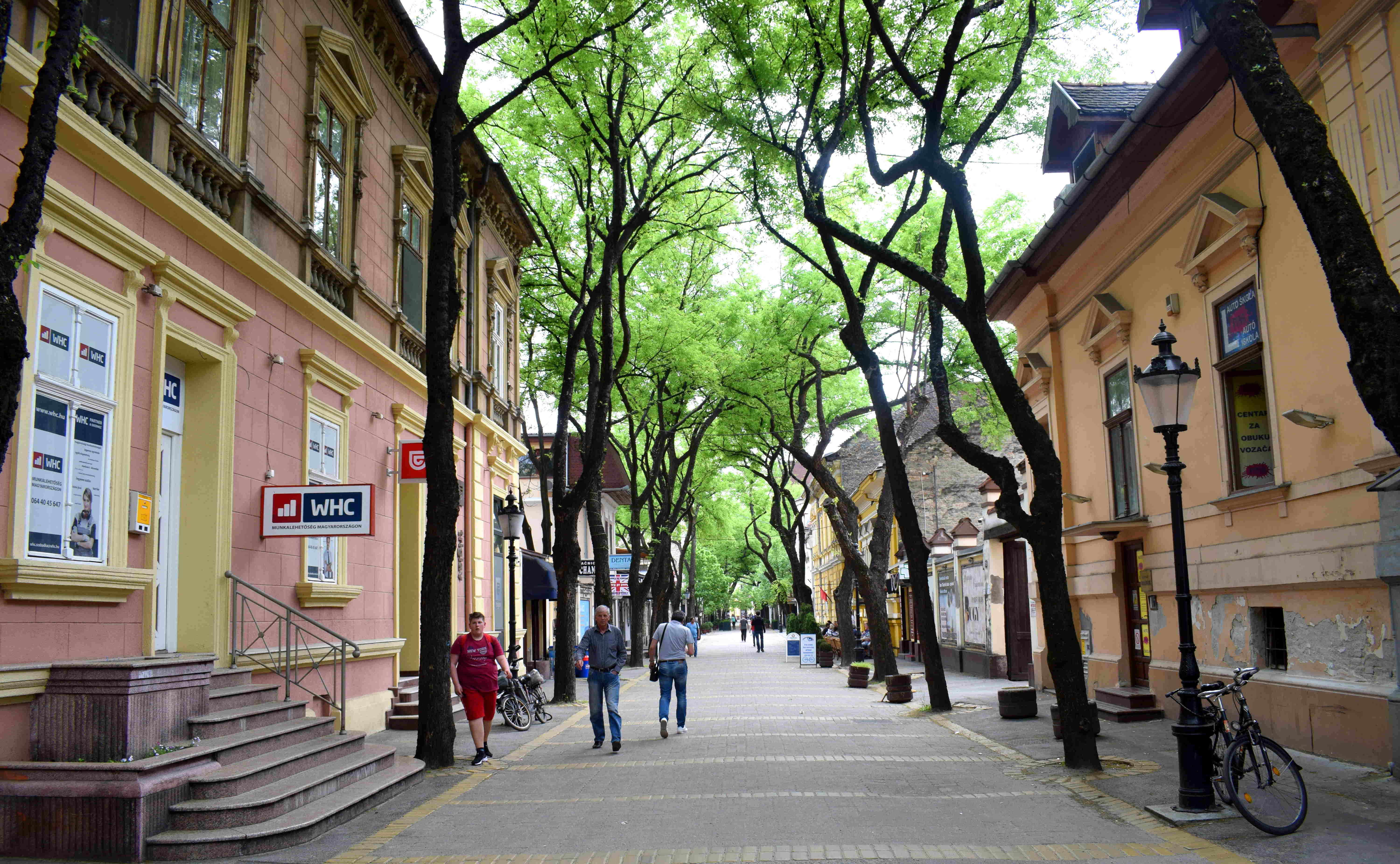 Today the city has a distinct Austro-Hungarian feel to it.
Today the city has a distinct Austro-Hungarian feel to it.
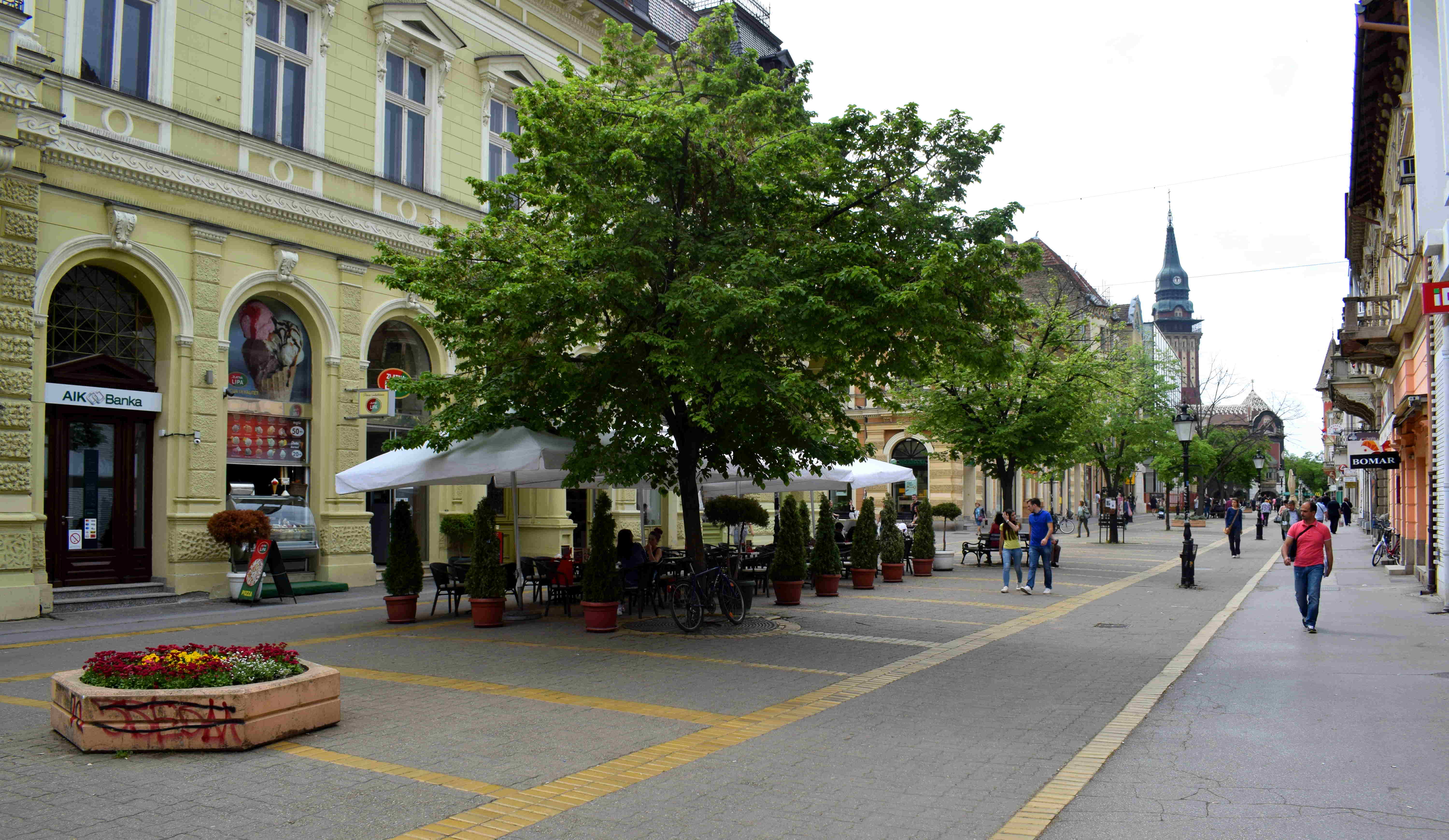 There are, however, places where the Ottoman legacy can be felt, particularly with some courtyard balconies that resemble Turkish buildings.
There are, however, places where the Ottoman legacy can be felt, particularly with some courtyard balconies that resemble Turkish buildings.
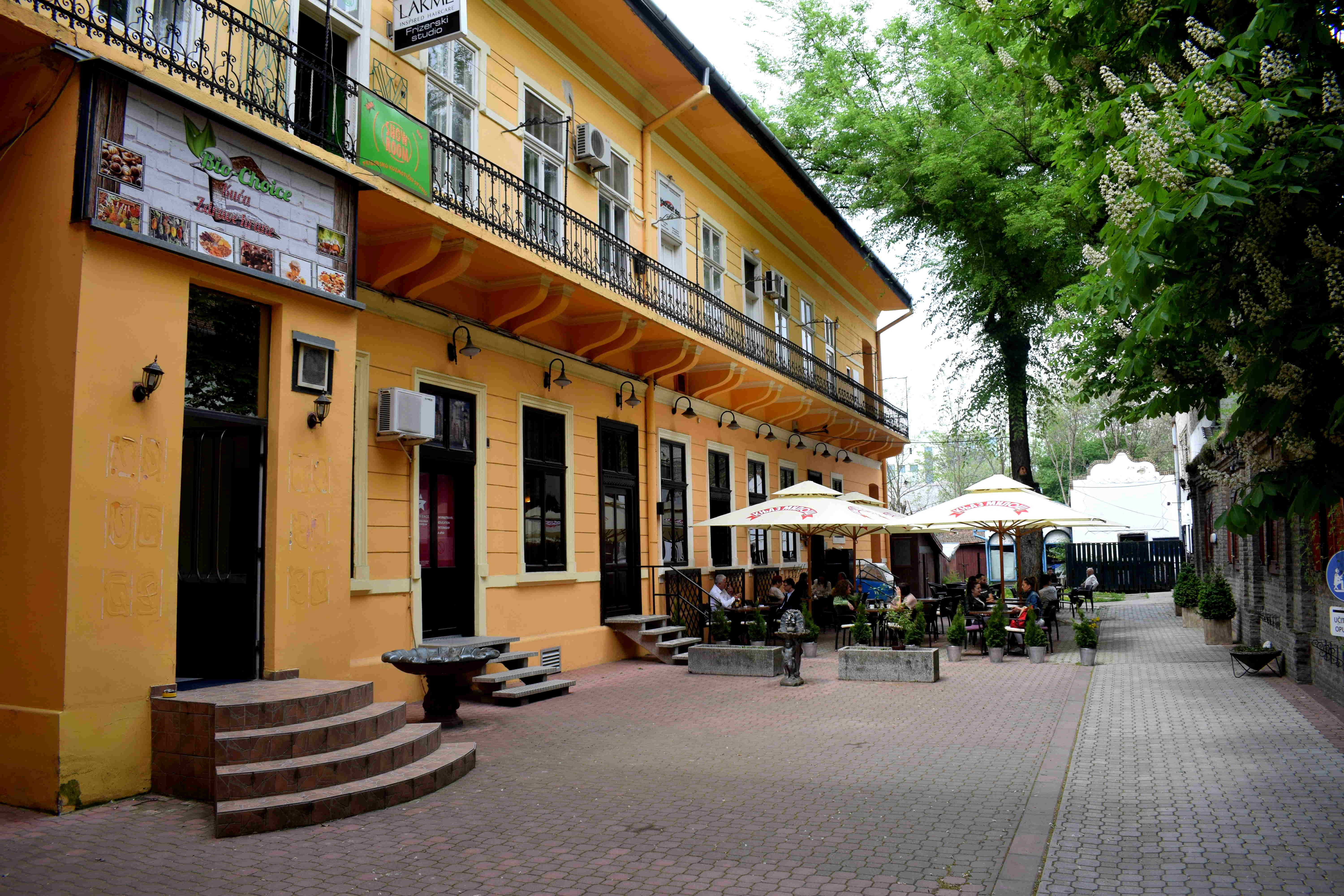 Subotica was connected by railway in 1869 and received its first tram system in 1897. At the close of the 19th century, the town reached its peak of cultural development. The majority of Subotica’s neo-classical buildings were constructed during this time.
Subotica was connected by railway in 1869 and received its first tram system in 1897. At the close of the 19th century, the town reached its peak of cultural development. The majority of Subotica’s neo-classical buildings were constructed during this time.
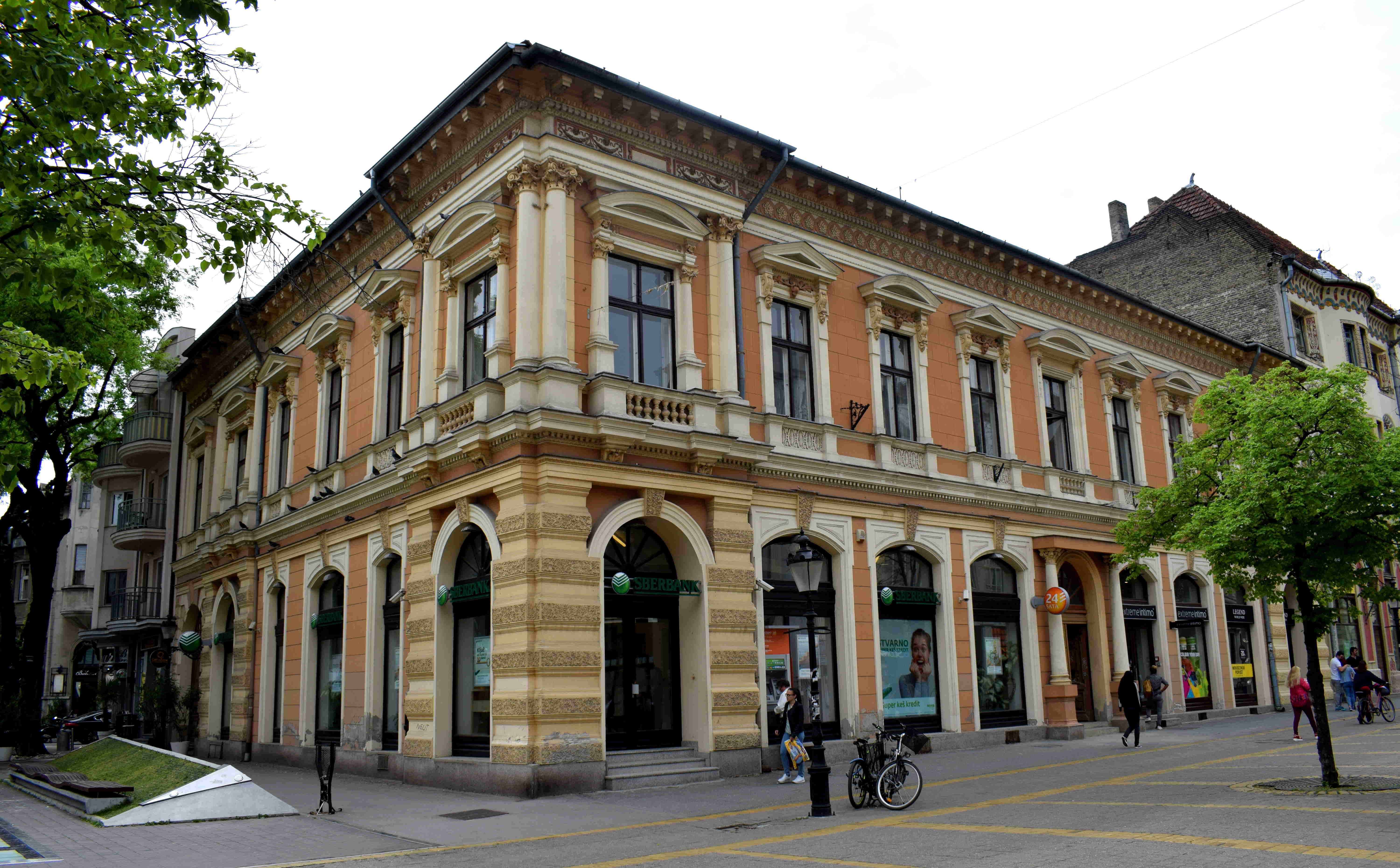 Subotica remained part of Austro-Hungary until the end of WWI when the country was defeated by allied armies. Serbian and French troops entered Subotica on November 13, 1918. Shortly after on November 25, a national assembly in Novi Sad declared the unification of Backa, Banat and Baranja with Serbia. Eventually the city became part of the newly formed Kingdom of Serbs, Croats and Slovenes, later renamed Yugoslavia. In WWII Hungary joined the Axis and retook the city on April 12, 1941. Serbs and Jews were expelled from the city during the war and when Yugoslav and Soviet troops liberated the city on October 10, 1944 the opposite happened to Hungarians and Germans.
Subotica remained part of Austro-Hungary until the end of WWI when the country was defeated by allied armies. Serbian and French troops entered Subotica on November 13, 1918. Shortly after on November 25, a national assembly in Novi Sad declared the unification of Backa, Banat and Baranja with Serbia. Eventually the city became part of the newly formed Kingdom of Serbs, Croats and Slovenes, later renamed Yugoslavia. In WWII Hungary joined the Axis and retook the city on April 12, 1941. Serbs and Jews were expelled from the city during the war and when Yugoslav and Soviet troops liberated the city on October 10, 1944 the opposite happened to Hungarians and Germans.
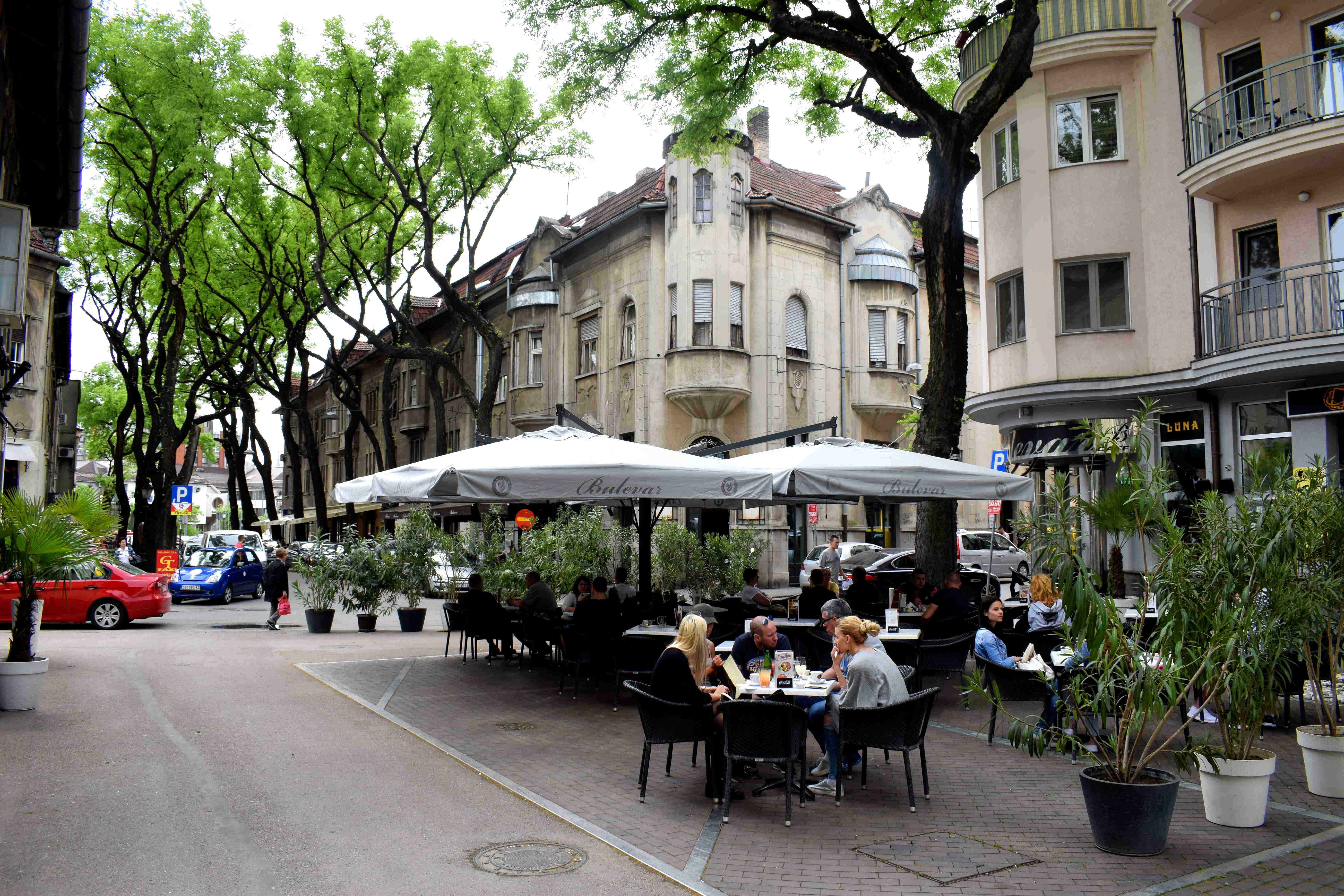 Luckily most of Subotica’s buildings survived WWII in tact and today the city’s pedestrianized center makes it possible to easily enjoy them. But there are a few more streets the city could pedestrianize, such as Vladimir Nazora Street.
Luckily most of Subotica’s buildings survived WWII in tact and today the city’s pedestrianized center makes it possible to easily enjoy them. But there are a few more streets the city could pedestrianize, such as Vladimir Nazora Street.
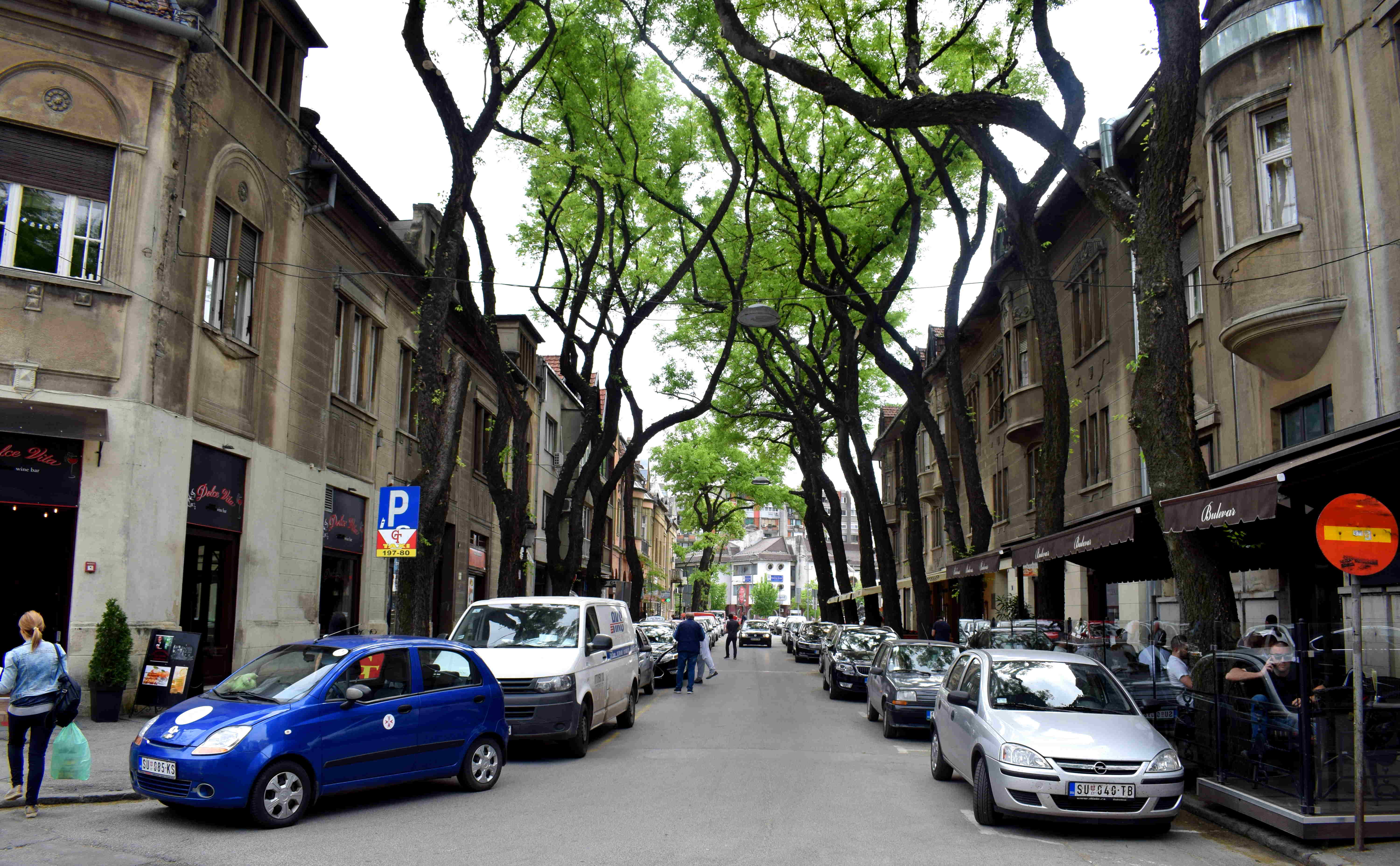 As things currently stand, the street is essentially a parking area for people who want to visit the center. Imagine how much nicer Vladimir Nazor street would look if it were closed off to traffic.
As things currently stand, the street is essentially a parking area for people who want to visit the center. Imagine how much nicer Vladimir Nazor street would look if it were closed off to traffic.
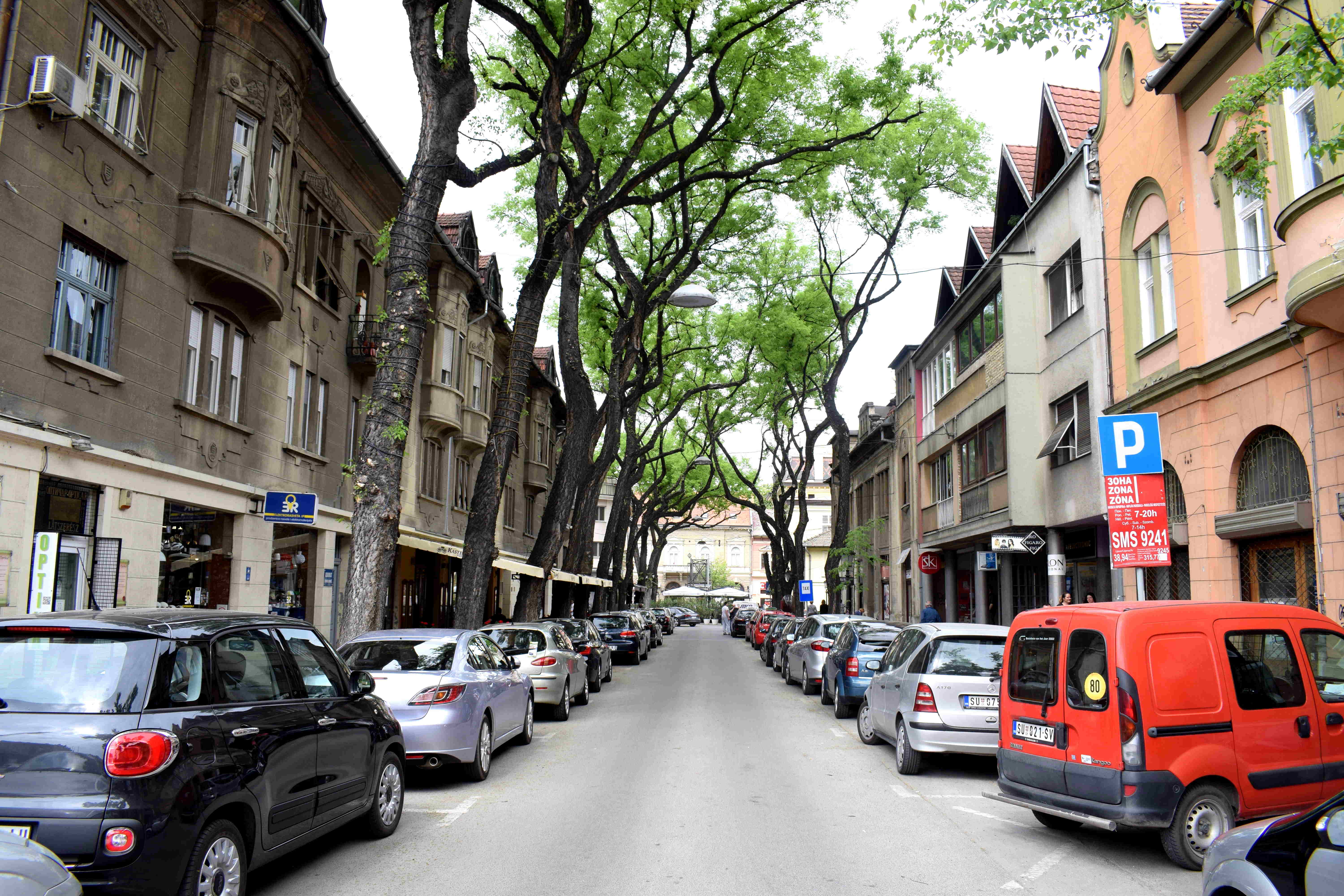 The street contains a series of buildings that are some of the oldest and most beautiful in the city. Observe the details above the windows.
The street contains a series of buildings that are some of the oldest and most beautiful in the city. Observe the details above the windows.
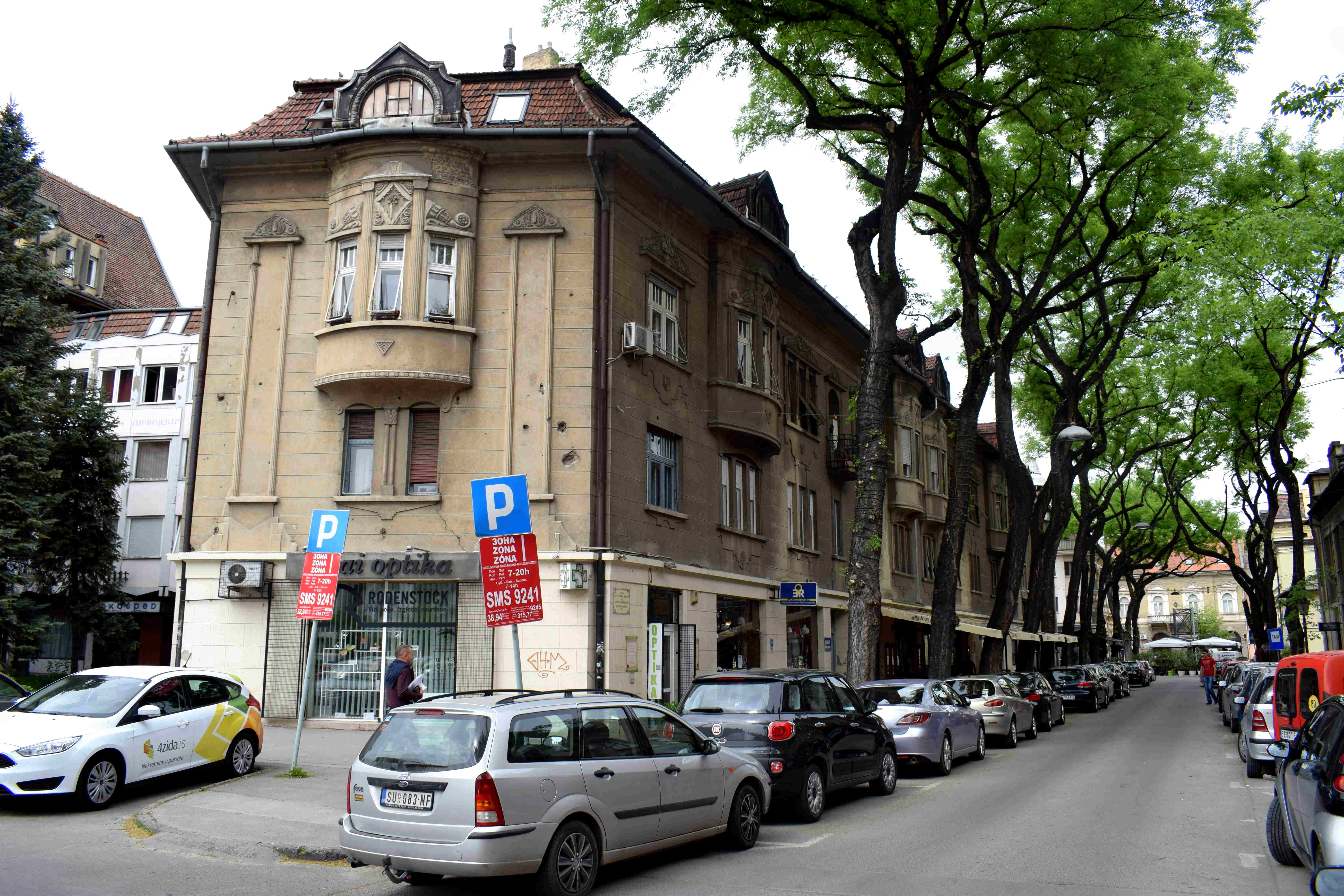 A picturesque balcony with a small chair and table outside. This is how balconies are supposed to look, not like what often happens in Russia and Ukraine where they are covered with plastic windows.
A picturesque balcony with a small chair and table outside. This is how balconies are supposed to look, not like what often happens in Russia and Ukraine where they are covered with plastic windows.
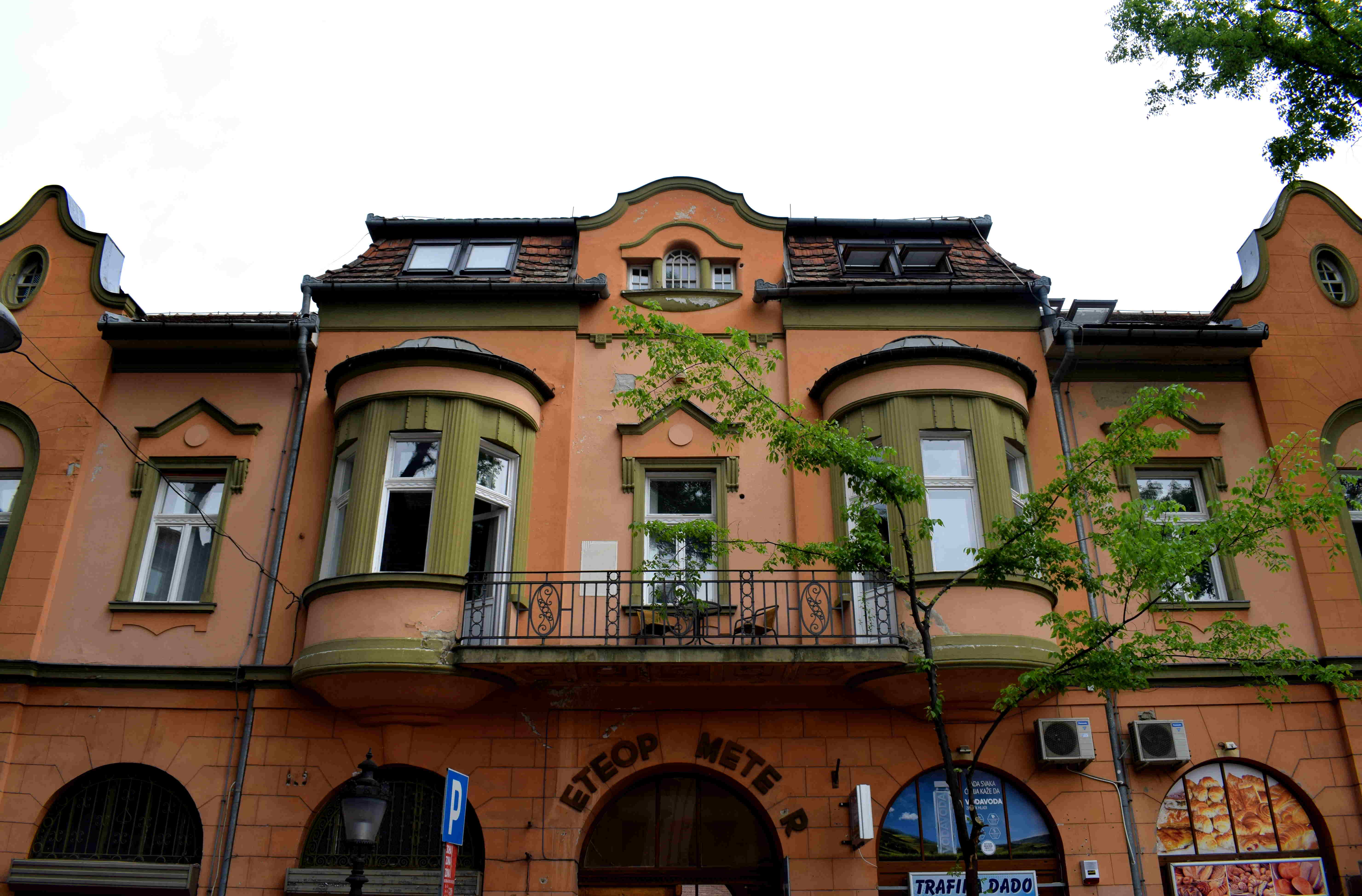 Restaurants on Vladimir Nazor street would be first to benefit from its pedestrianization. There is outdoor seating for only a few tables right now.
Restaurants on Vladimir Nazor street would be first to benefit from its pedestrianization. There is outdoor seating for only a few tables right now.
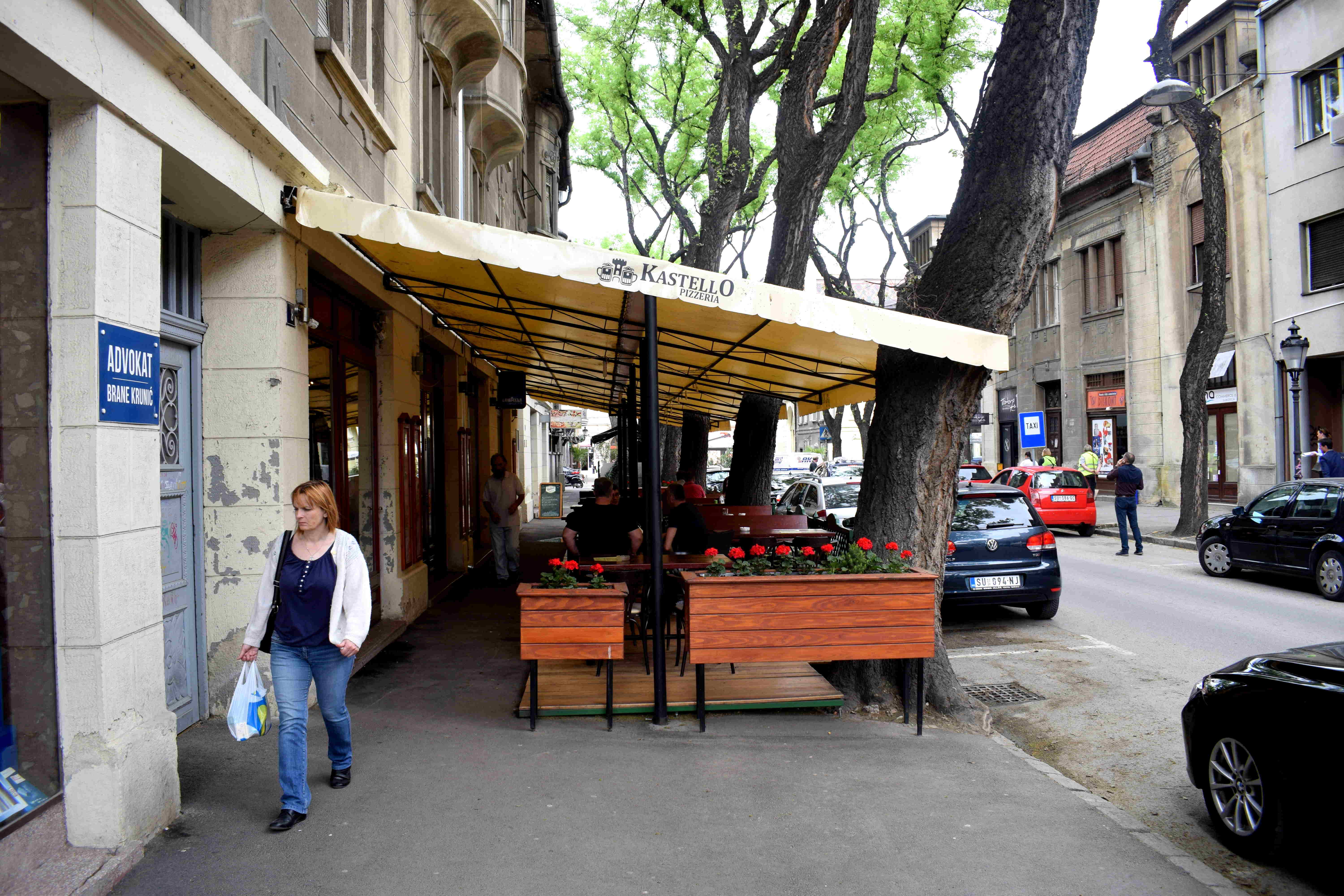 Pedestrians walking by are forced to pass through the restaurant to get to the other side. Cyclists can forget about comfortably riding through the area.
Pedestrians walking by are forced to pass through the restaurant to get to the other side. Cyclists can forget about comfortably riding through the area.
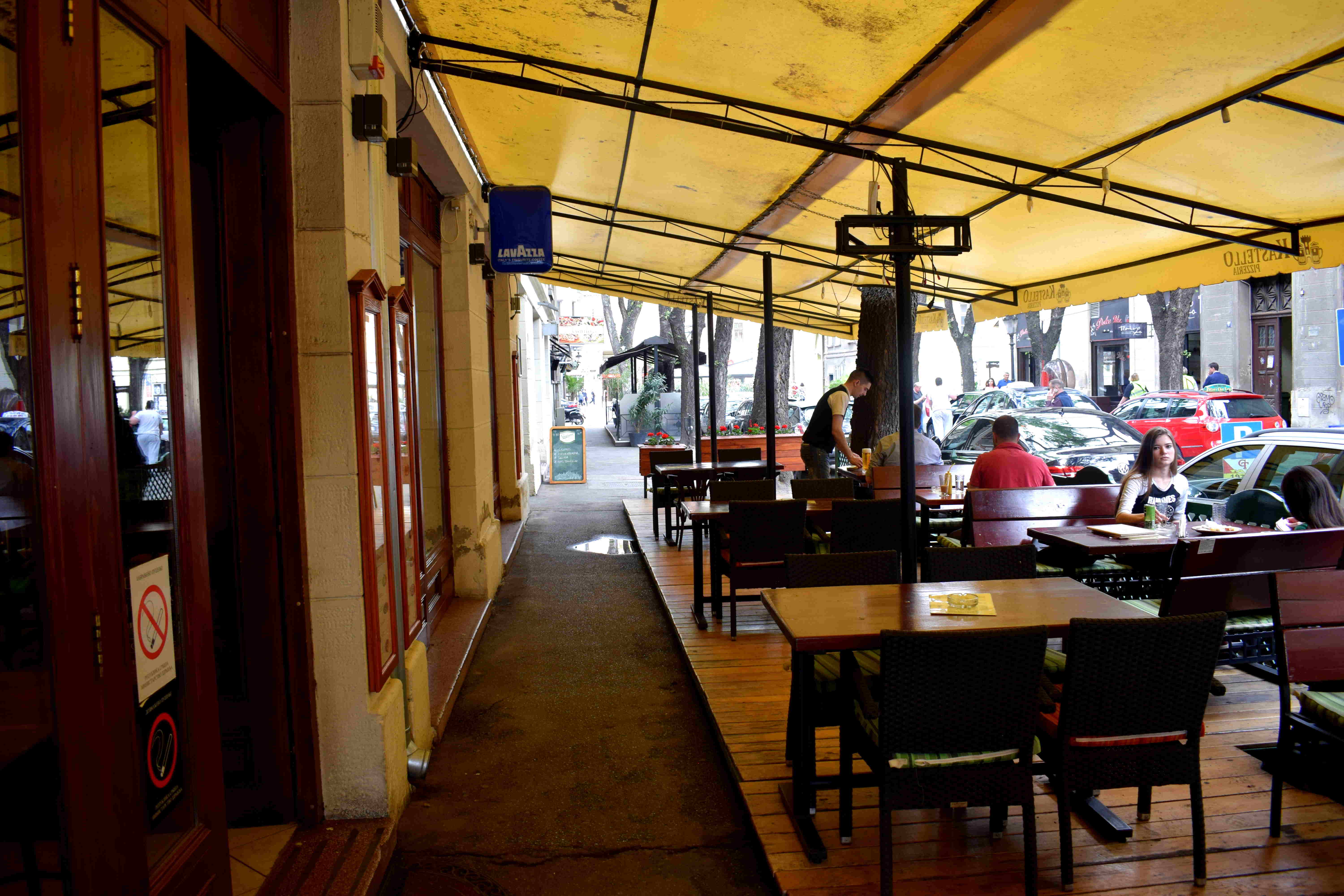 Instead parked cars take up the majority of the urban space.
Instead parked cars take up the majority of the urban space.
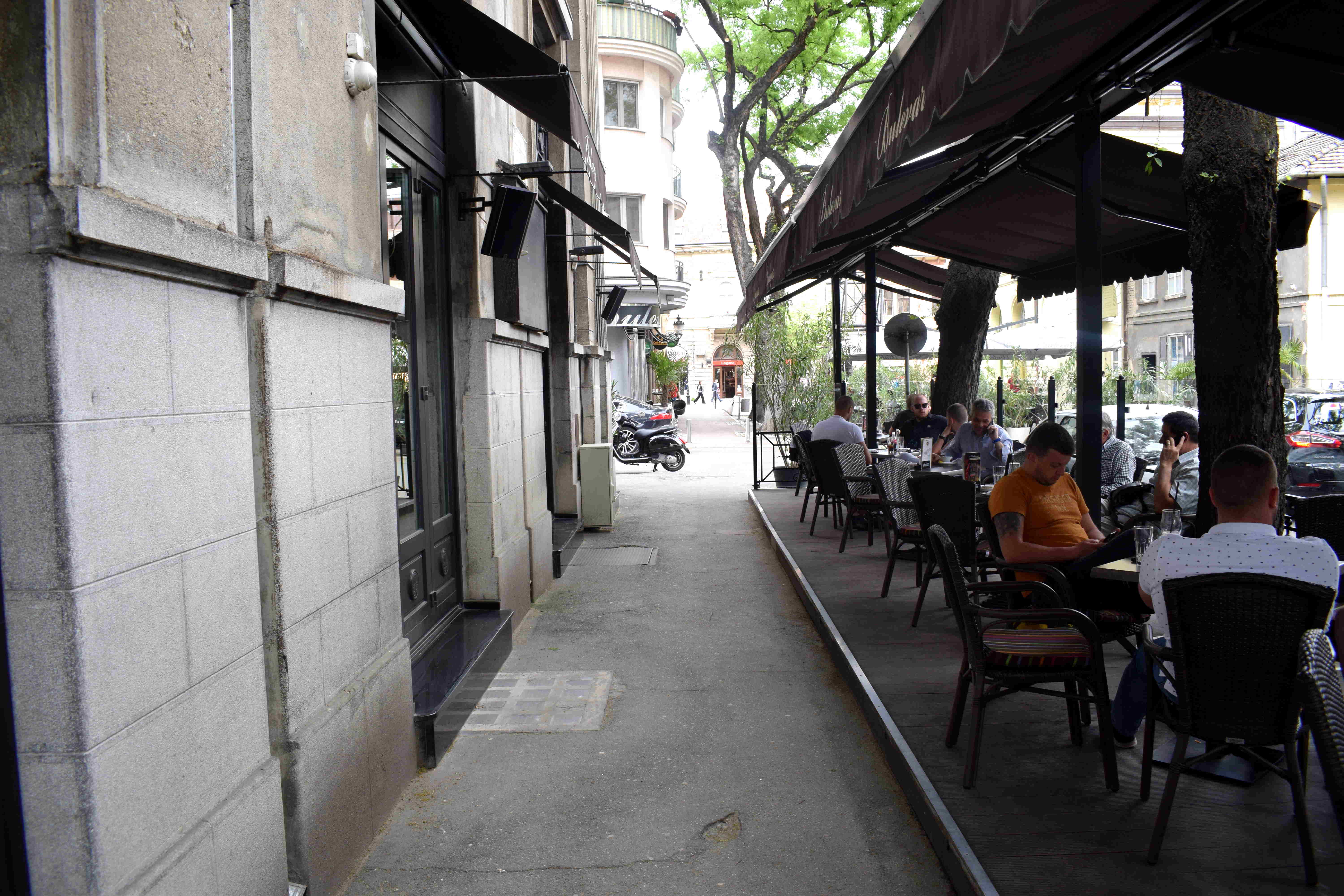 More streets in Subotica’s center which could be pedestrianized.
More streets in Subotica’s center which could be pedestrianized.
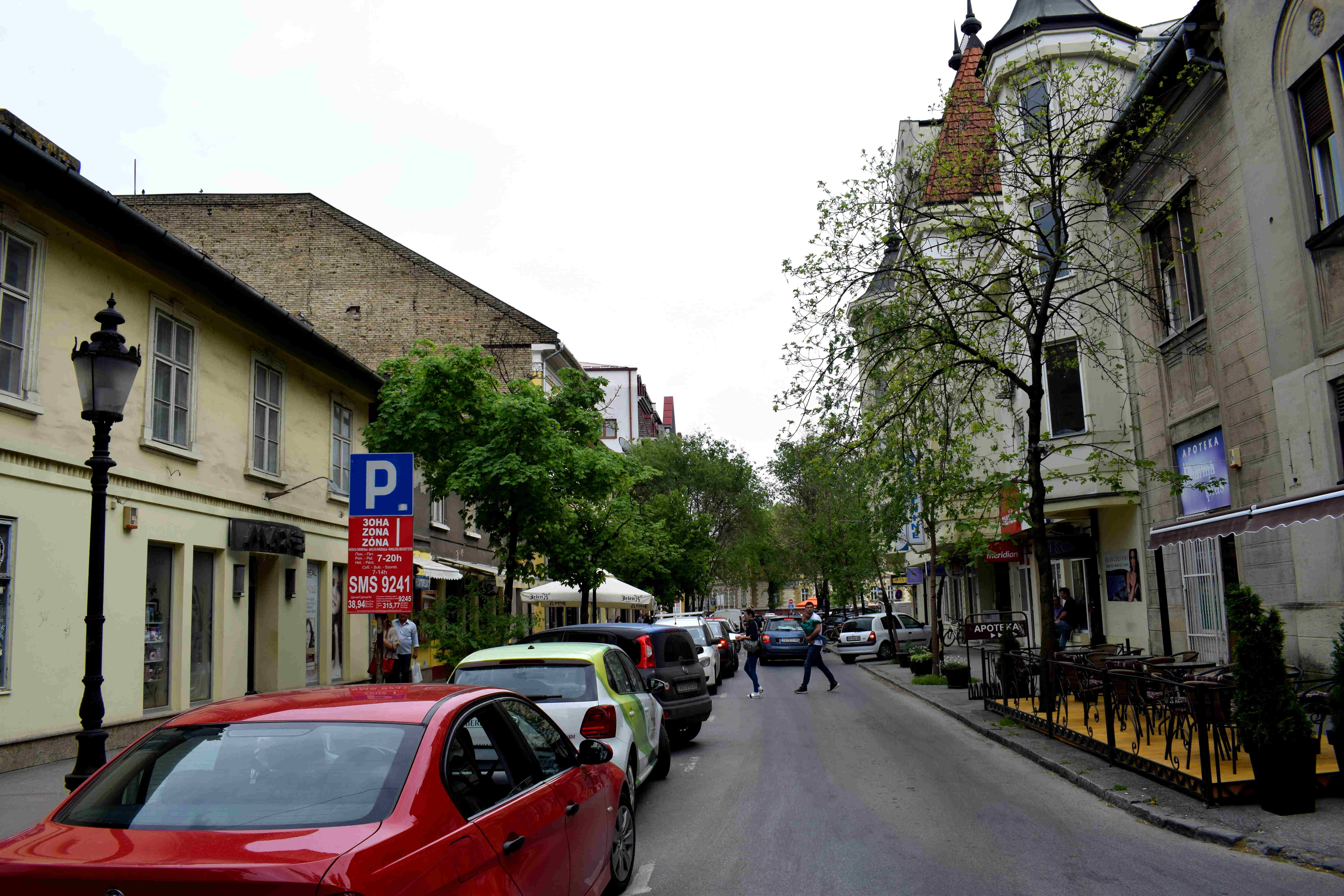 Subotica could also improve the look of its center by banning massive advertisements on old buildings. Take a look at how much space the VIP shop sign covers up of the building’s historical facade.
Subotica could also improve the look of its center by banning massive advertisements on old buildings. Take a look at how much space the VIP shop sign covers up of the building’s historical facade.
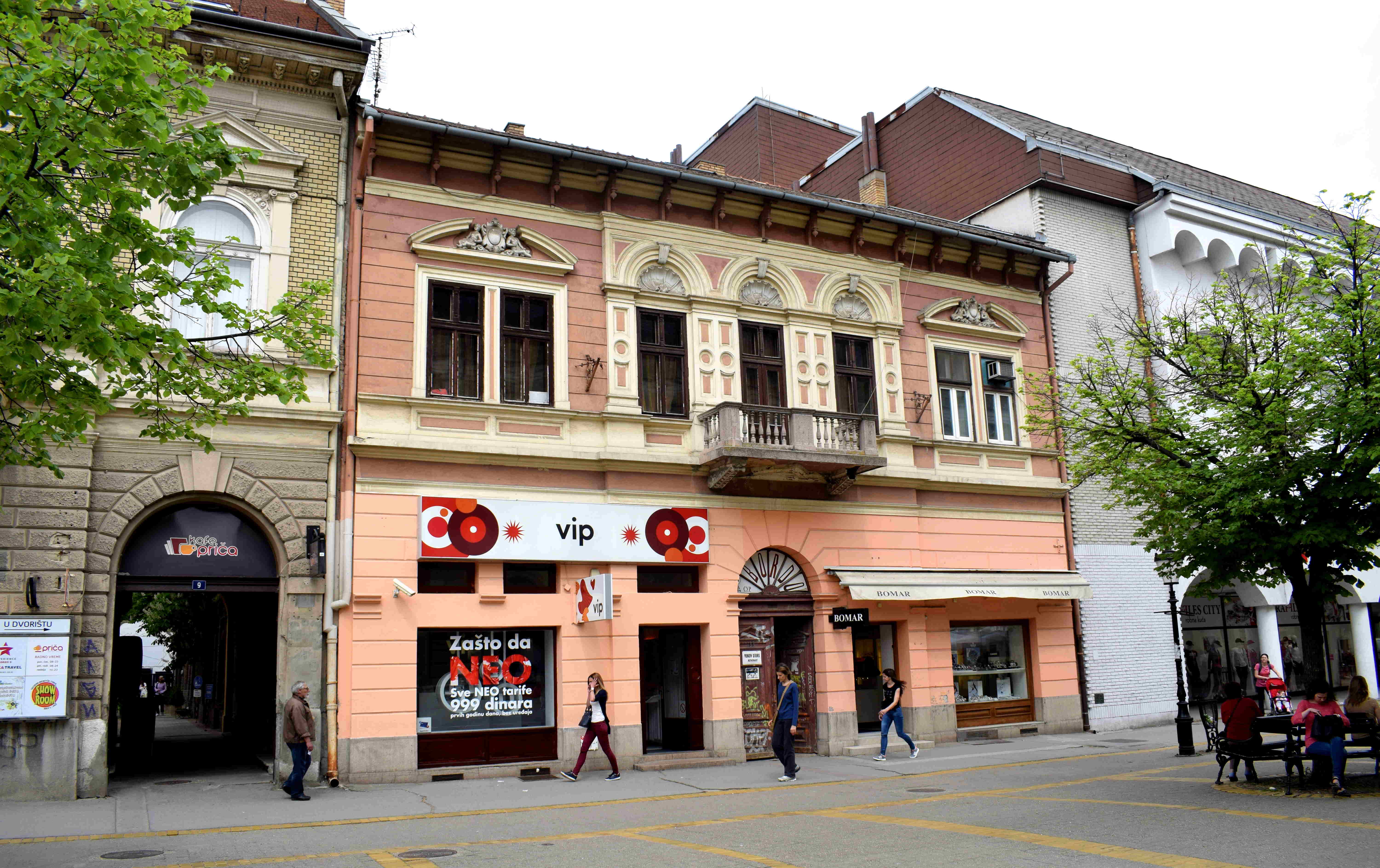 Some trees didn’t manage to bloom this Spring.
Some trees didn’t manage to bloom this Spring.
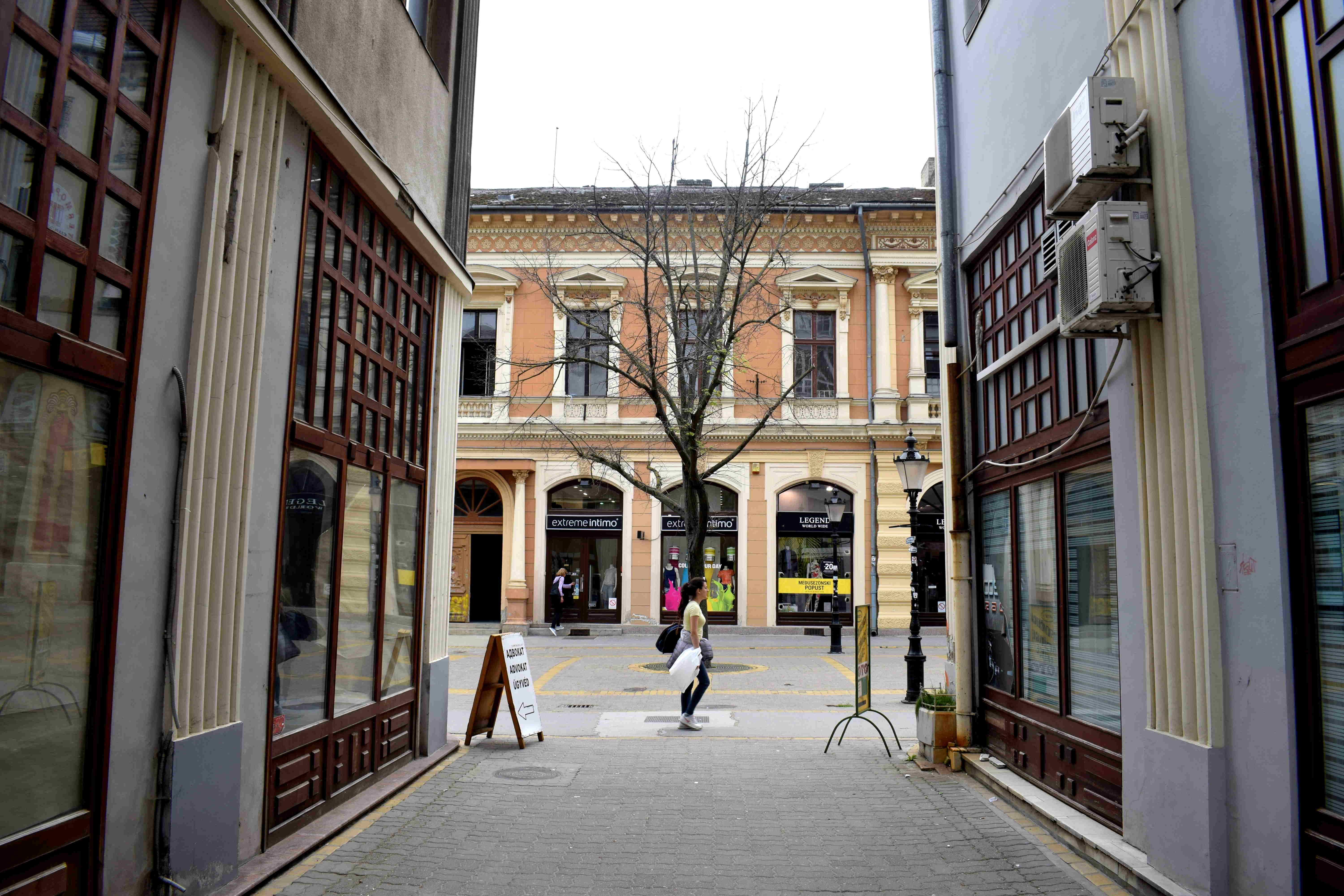 Further down Korzo street you eventually hit Subotica’s main square.
Further down Korzo street you eventually hit Subotica’s main square.
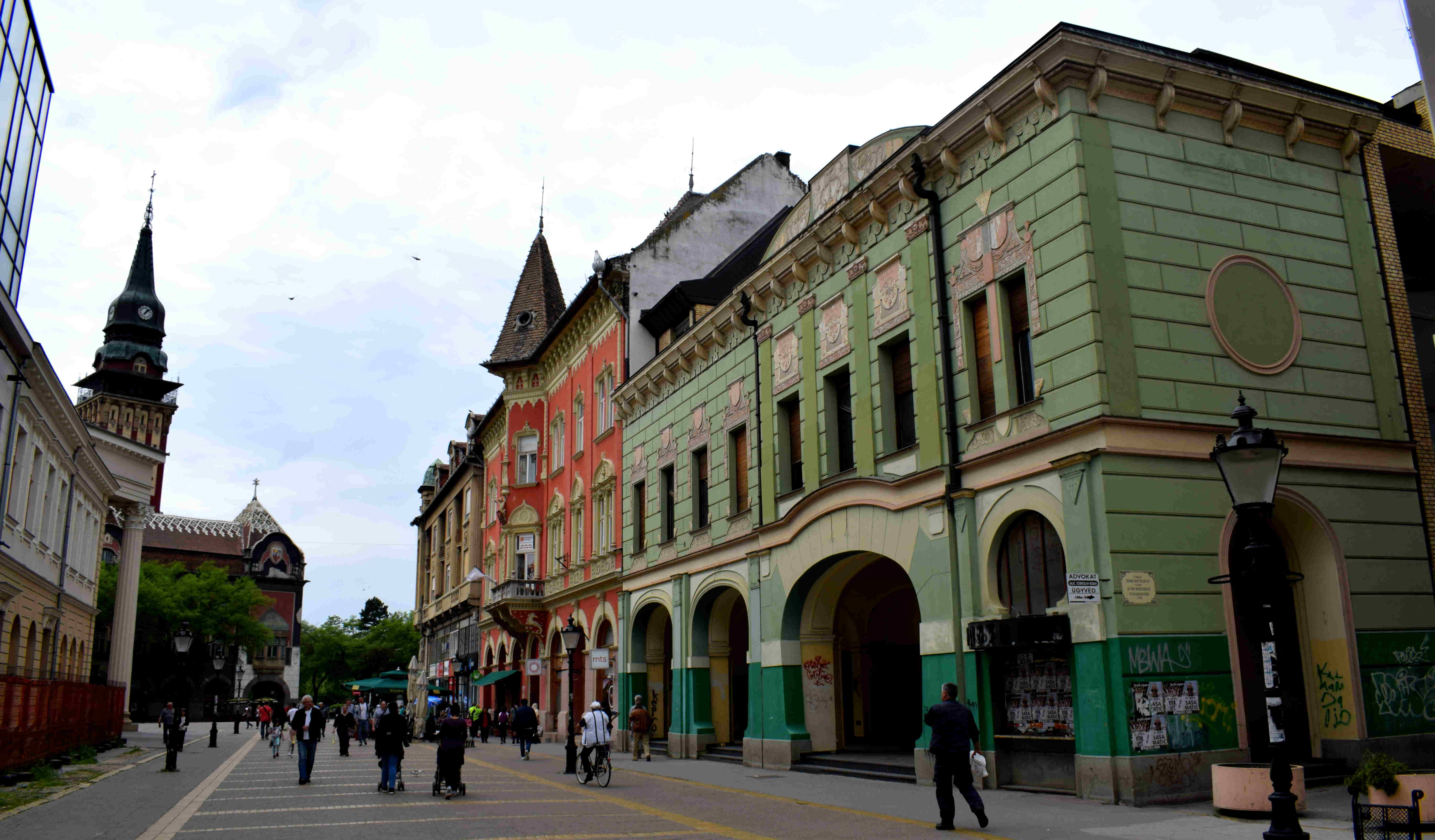
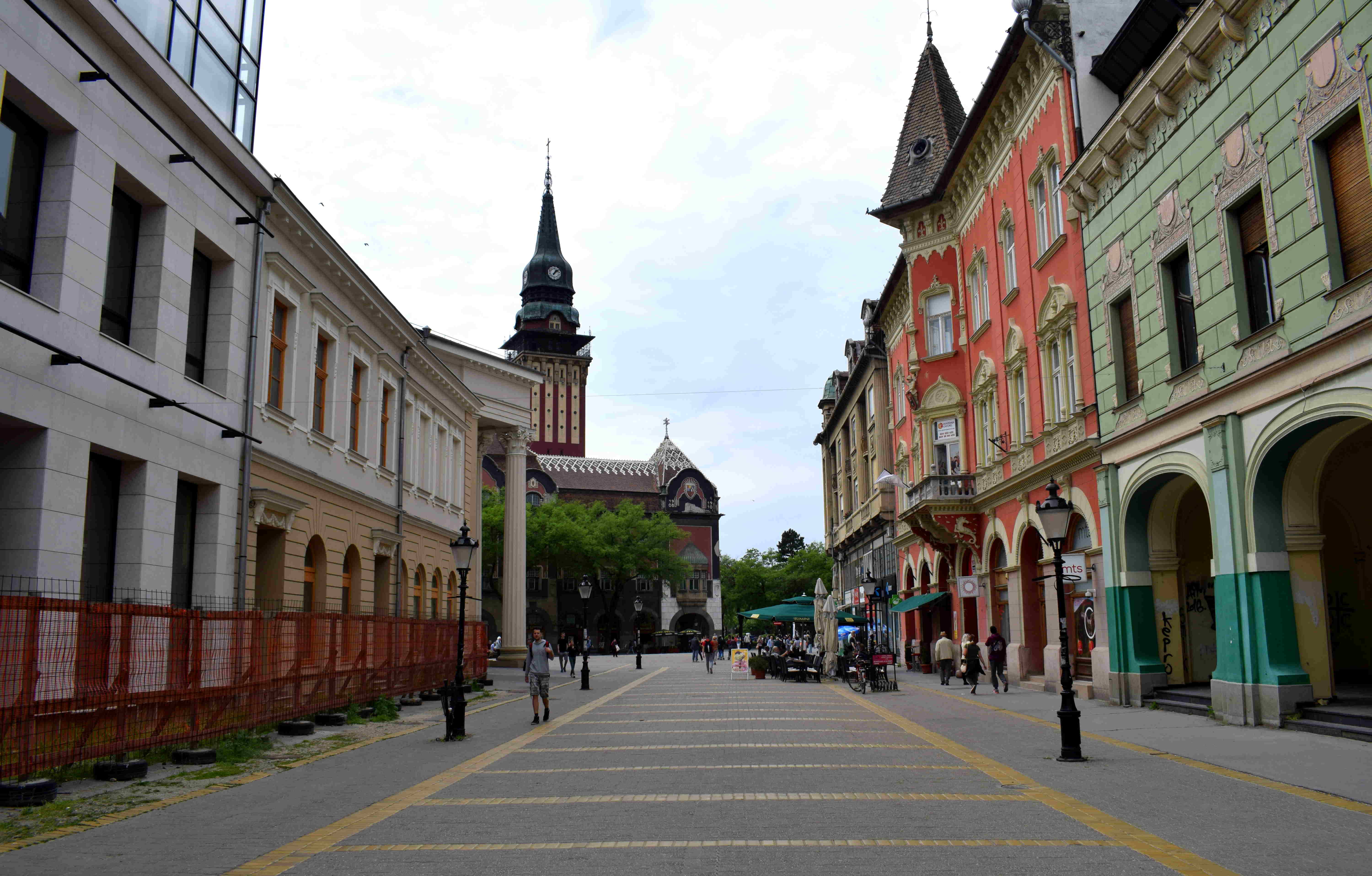 Another beautiful courtyard.
Another beautiful courtyard.
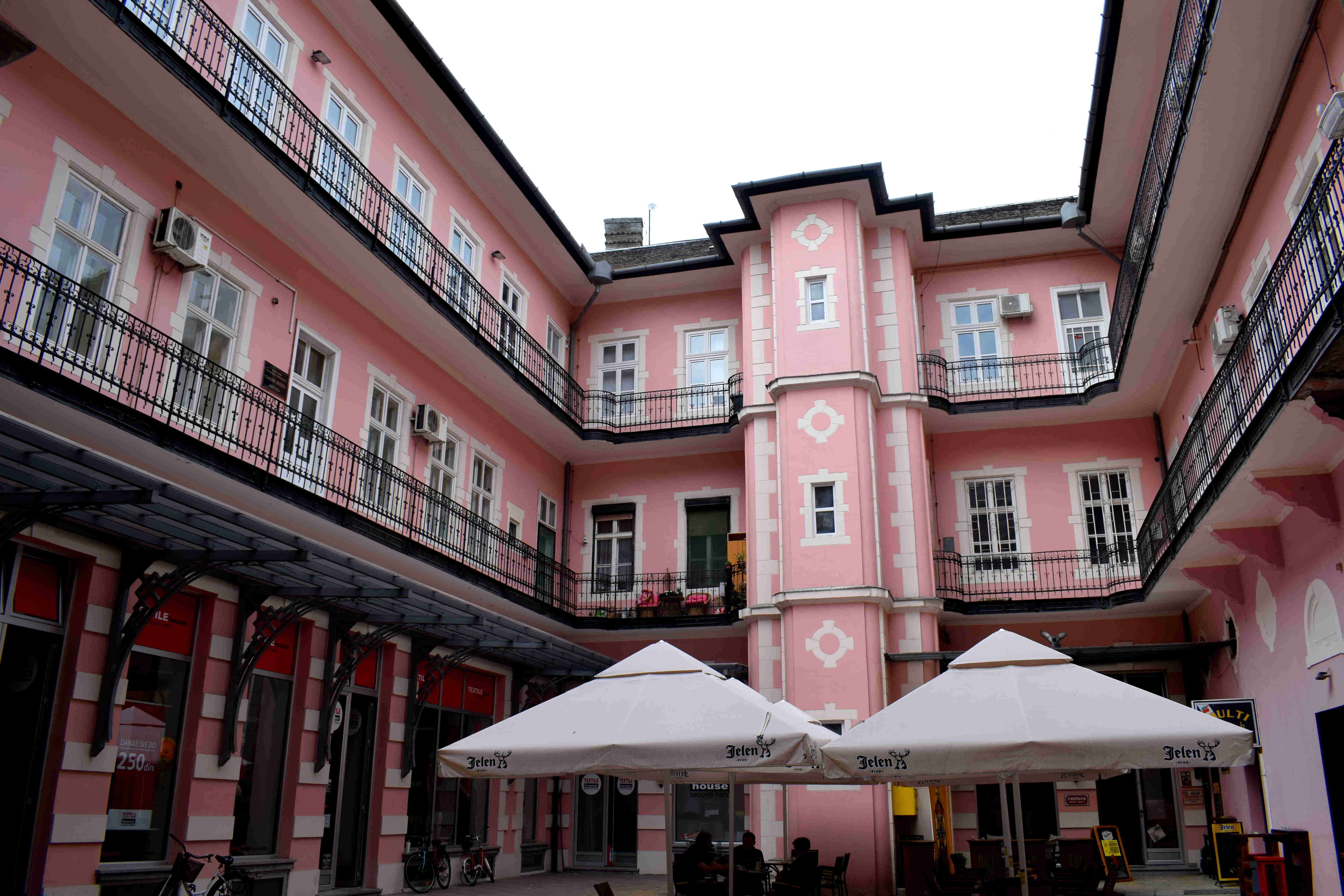 Subotica City Hall, one of the city’s most impressive works of architecture. At 76 meters high, it towers over the other buildings in the city. It was built from 1908-1912 by the Budapest-based architects Komor and Jakob in the Art-Nouveau style. Today it is used for city assemblies, weddings and concerts. There is an observatory deck 45 meters high which offers a nice panorama of the city.
Subotica City Hall, one of the city’s most impressive works of architecture. At 76 meters high, it towers over the other buildings in the city. It was built from 1908-1912 by the Budapest-based architects Komor and Jakob in the Art-Nouveau style. Today it is used for city assemblies, weddings and concerts. There is an observatory deck 45 meters high which offers a nice panorama of the city.
 In the middle of the square is a monument dedicated to Czar Jovan Nenad, who made Subotica his capital in 1527.
In the middle of the square is a monument dedicated to Czar Jovan Nenad, who made Subotica his capital in 1527.
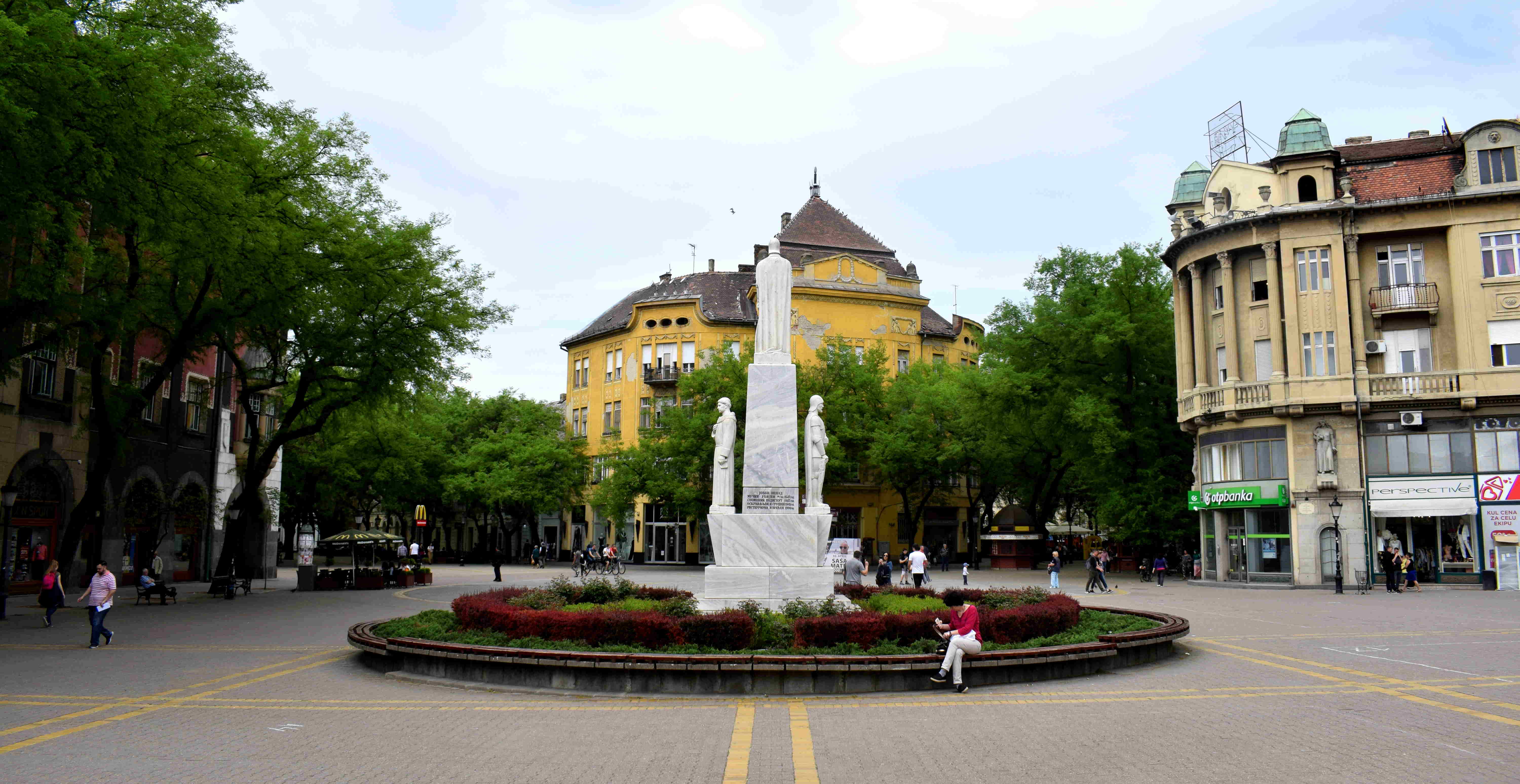 Subotica’s National Theatre is also located on the square. There is a tragic story behind this building. While it may look impressive, do not be fooled. It is a cheap imitation of the original theatre that used to stand here, a theatre that was one of Subotica’s oldest and most famous buildings.
Subotica’s National Theatre is also located on the square. There is a tragic story behind this building. While it may look impressive, do not be fooled. It is a cheap imitation of the original theatre that used to stand here, a theatre that was one of Subotica’s oldest and most famous buildings.
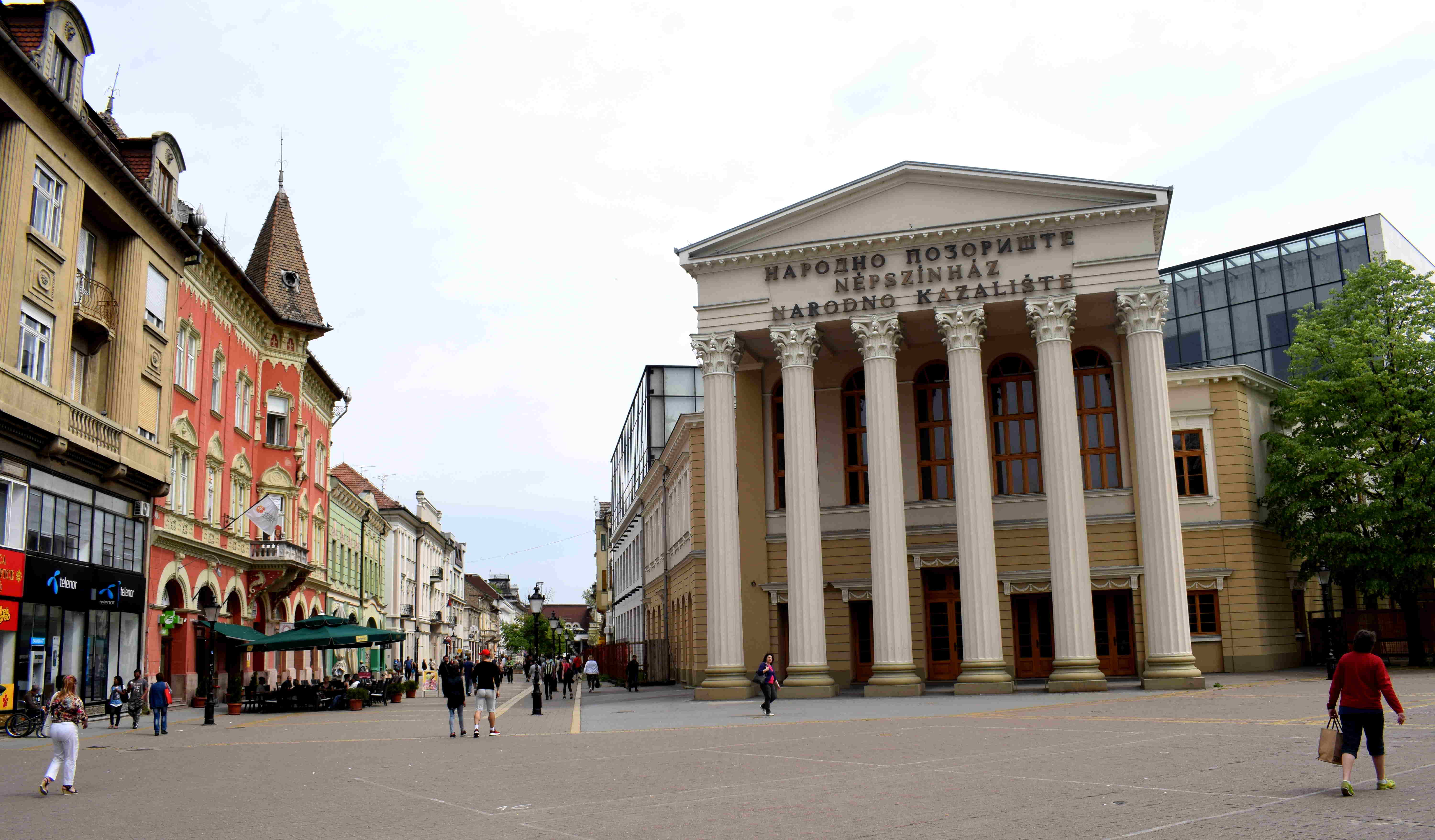 The original national theatre was built in 1854. It was one of the first major public buildings to be constructed in the city. It was Subotica’s central symbol, it could be found on any postcard of the city for over a century. But despite its inclusion as a historic monument under state protection since 1983, local city officials made a barbaric and unforgivable decision to tear the building down in 2007.
The original national theatre was built in 1854. It was one of the first major public buildings to be constructed in the city. It was Subotica’s central symbol, it could be found on any postcard of the city for over a century. But despite its inclusion as a historic monument under state protection since 1983, local city officials made a barbaric and unforgivable decision to tear the building down in 2007.
Protests from international organizations and strong criticism from neighboring Hungary which said that the destruction of the national theatre was a crime failed to save the building.
Here is how the national theatre used to look before its destruction.
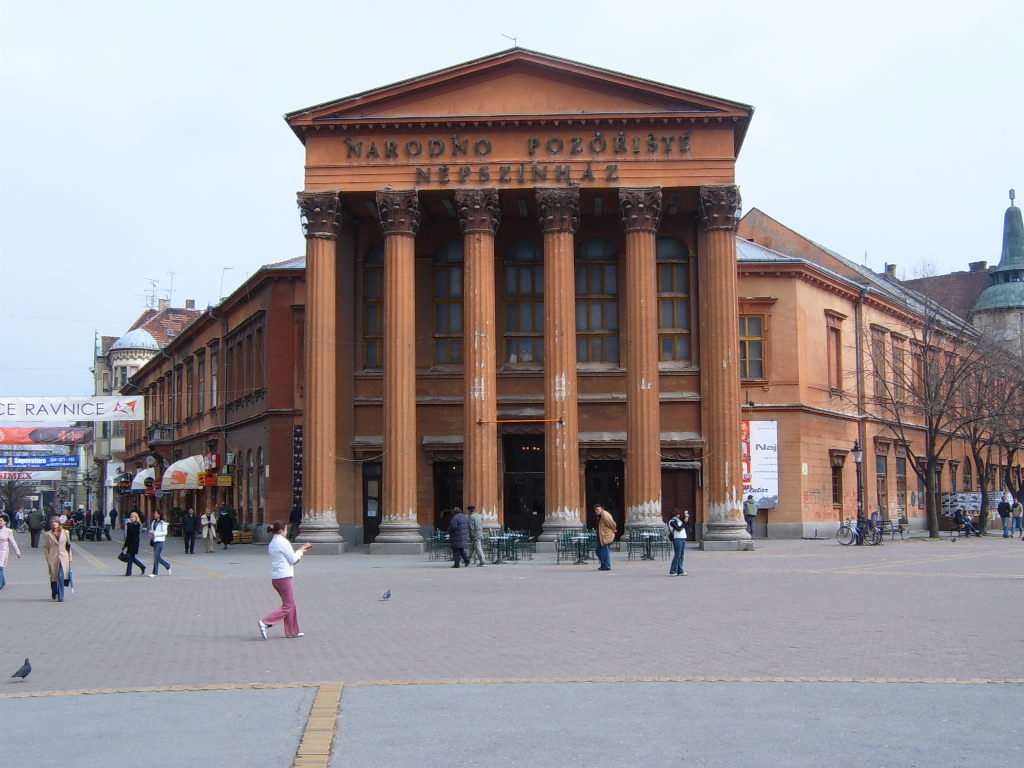
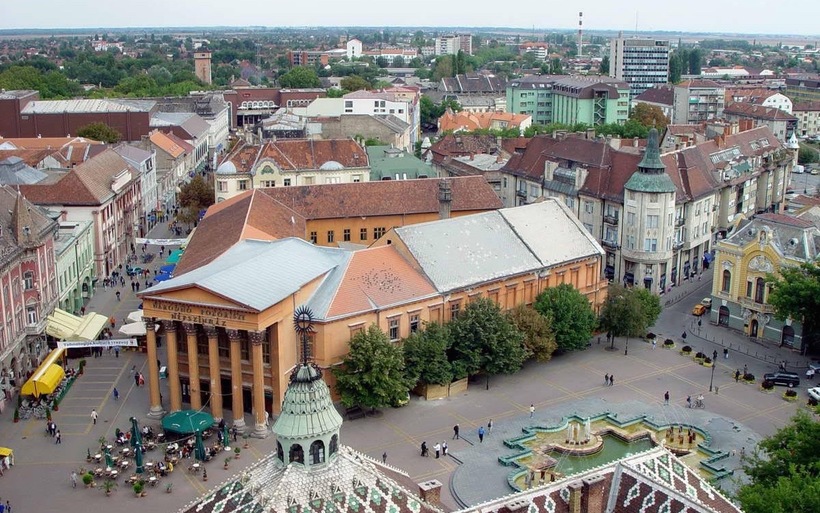
And here is how the theatre looks today.
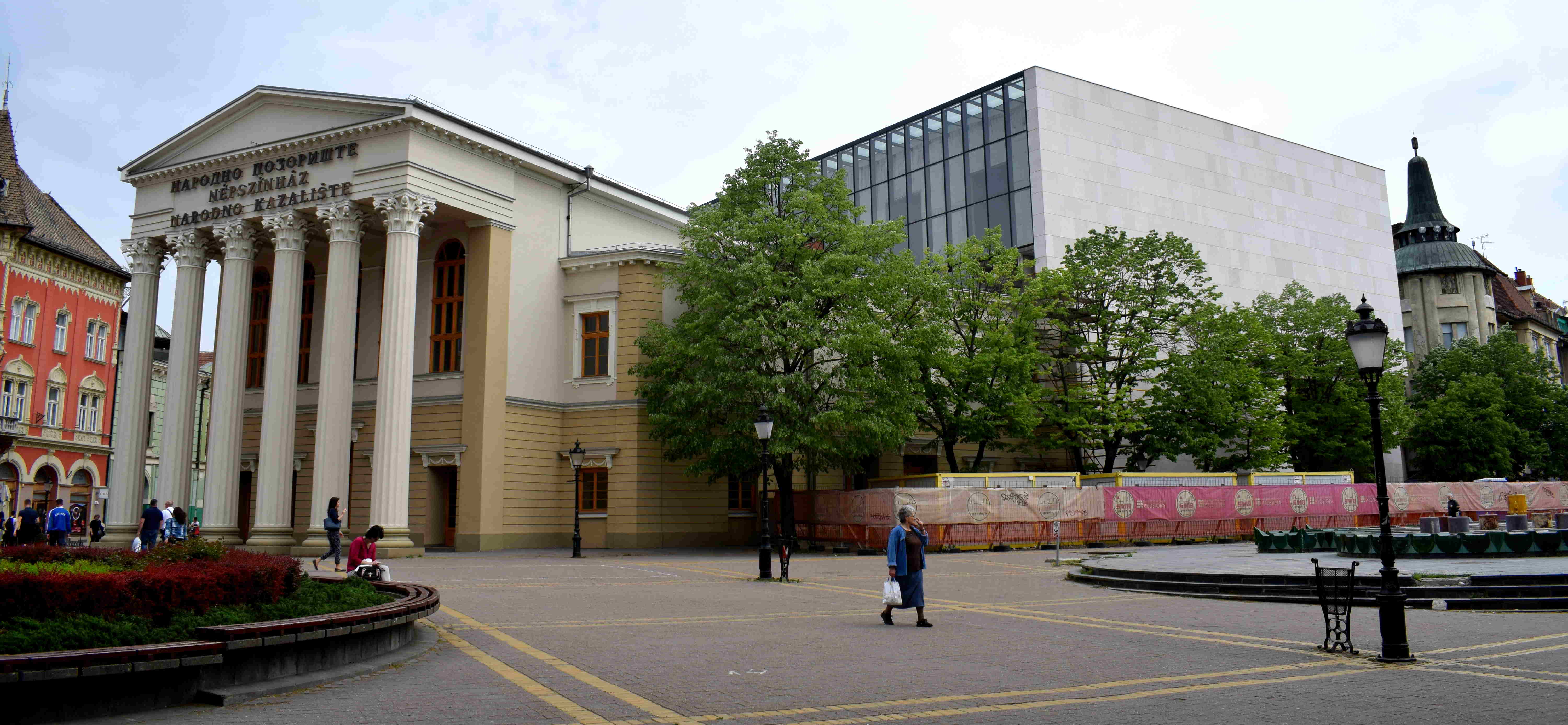 Instead of a historic building that stands in harmony with the surrounding architecture, you get a rectangle box on Subotica’s main square, the most important area of the city.
Instead of a historic building that stands in harmony with the surrounding architecture, you get a rectangle box on Subotica’s main square, the most important area of the city.
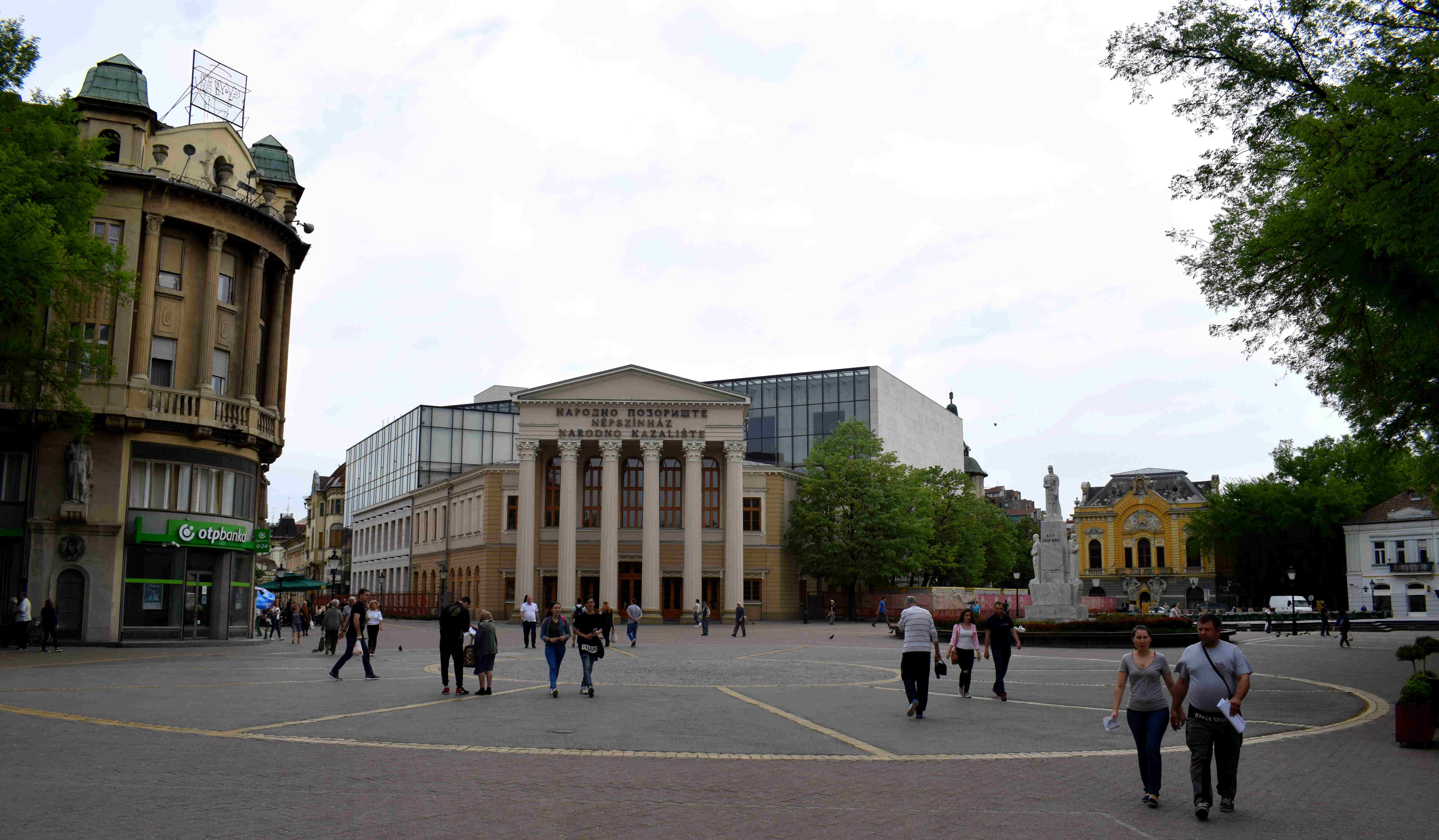 The modern rectangular shape looks completely out of place when contrasted to the old buildings behind it.
The modern rectangular shape looks completely out of place when contrasted to the old buildings behind it.
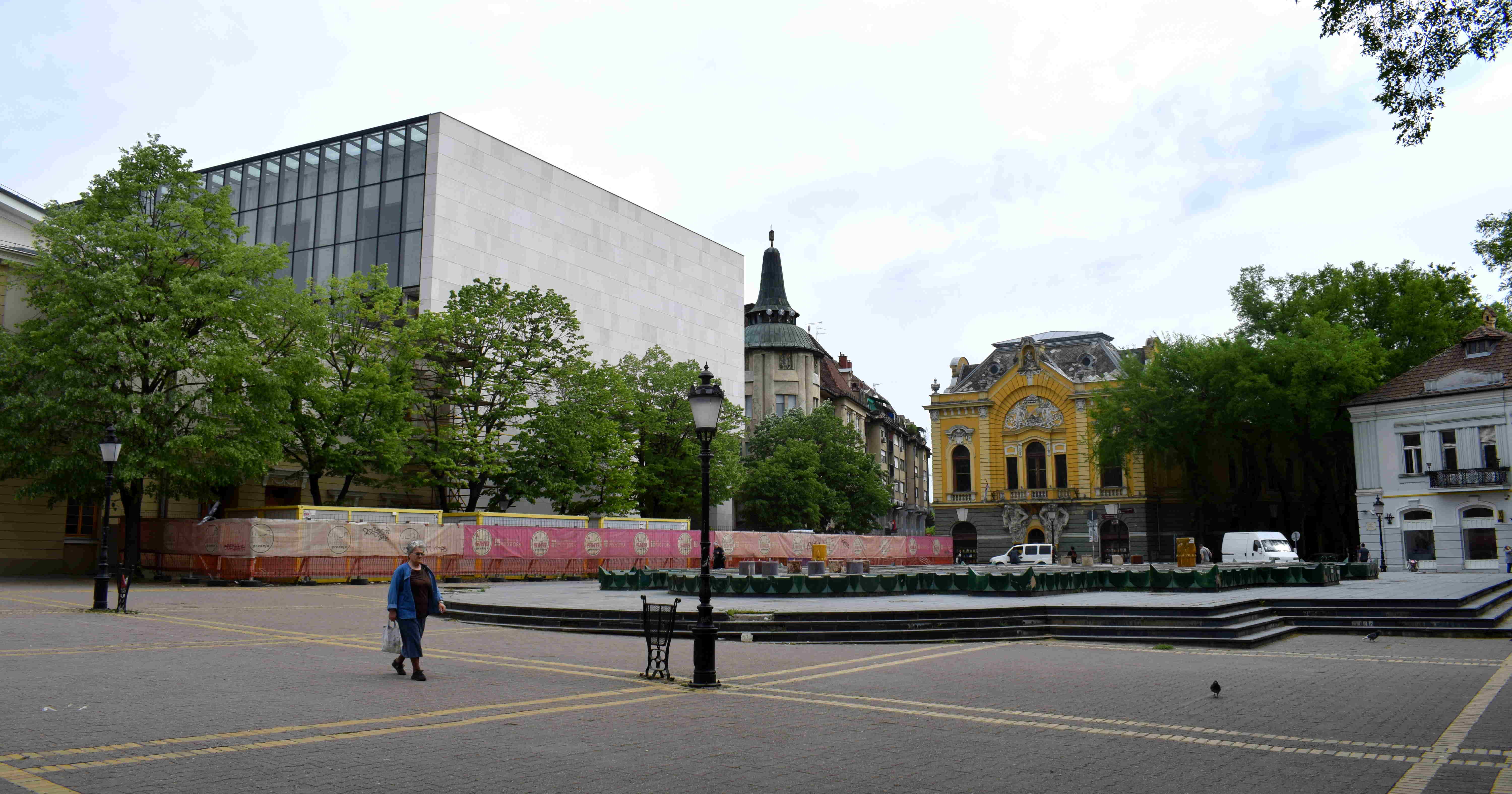 Did the city really have to destroy the its 150-year old theatre to build a piece of garbage like this?
Did the city really have to destroy the its 150-year old theatre to build a piece of garbage like this?
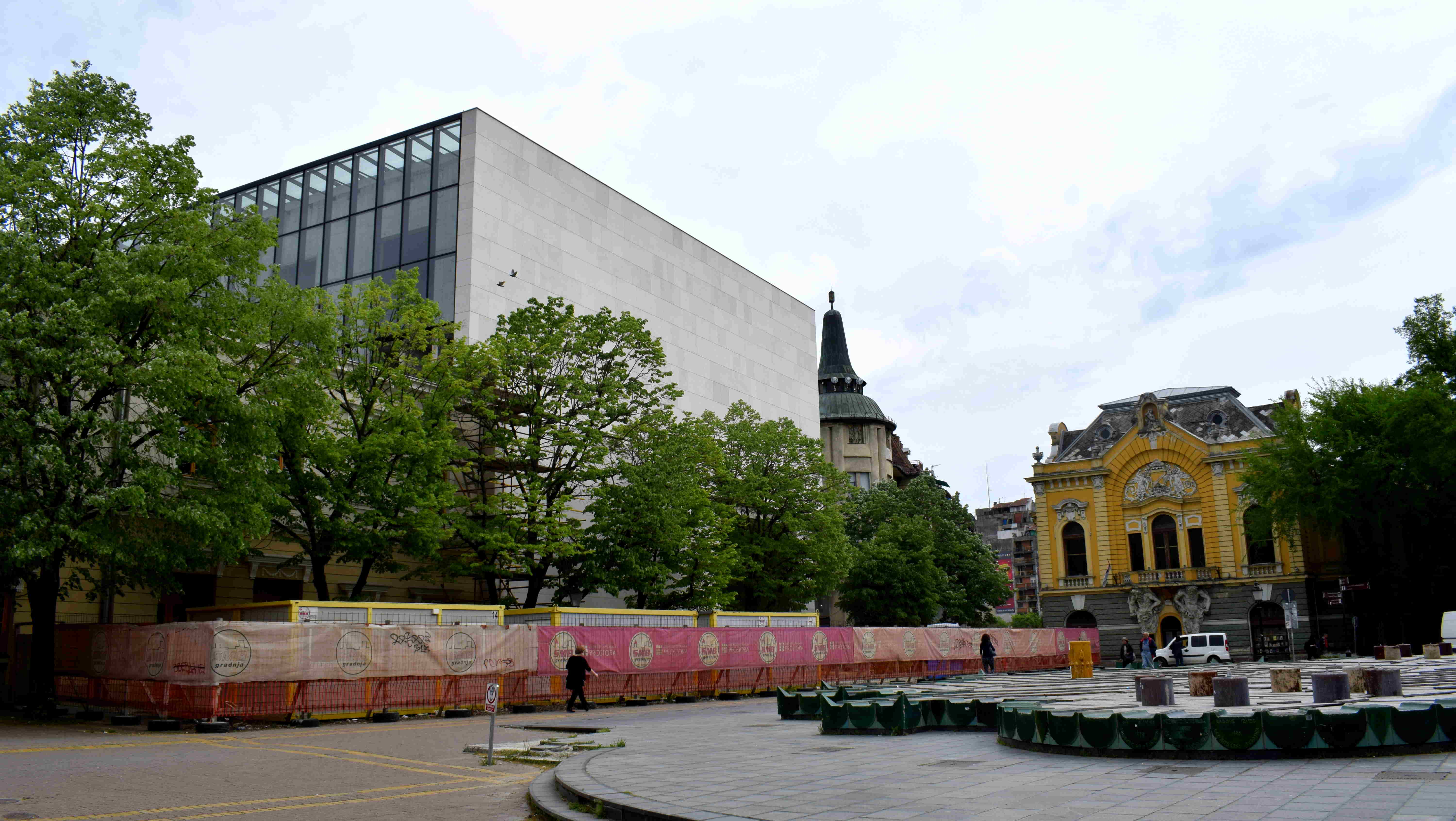 A bland glass facade completely out of harmony with the surrounding infrastructure.
A bland glass facade completely out of harmony with the surrounding infrastructure.
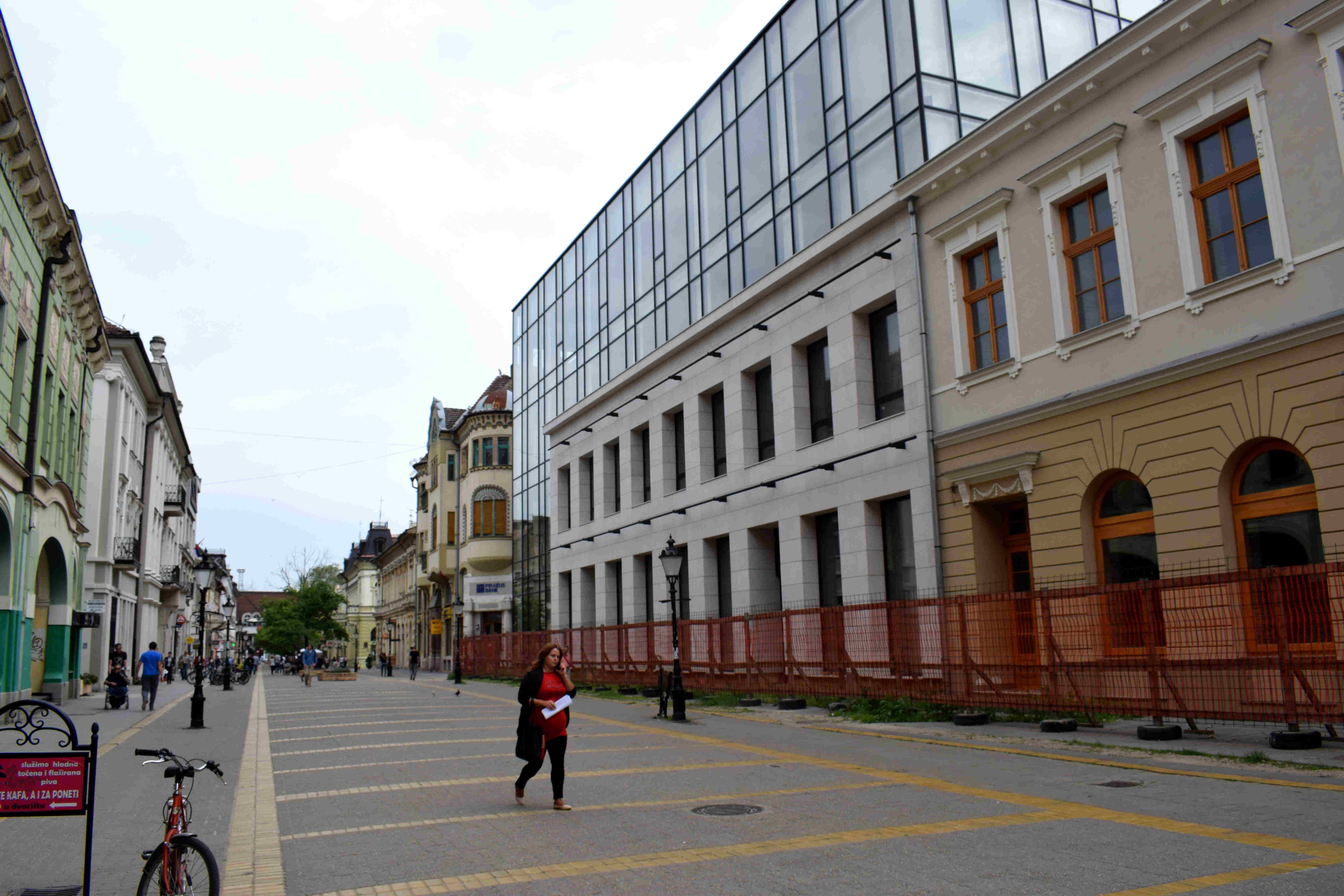 The story of Subotica’s National Theatre is a tragic story of barbarism and incompontence. In 2007 the city’s national theatre was in a catastrophic state. It had gone decades without being renovated. Inside the theatre the main stage and seats were falling apart. Delegates at Subotica’s city assembly approved a plan to tear the building down and build a modern building to replace it. It’s important to note that the ruling party in power when this decision was taken was the SVM (Savez Vojvodjanskih Madjara) or ‘Alliance of Vojvodina Hungarians’.
The story of Subotica’s National Theatre is a tragic story of barbarism and incompontence. In 2007 the city’s national theatre was in a catastrophic state. It had gone decades without being renovated. Inside the theatre the main stage and seats were falling apart. Delegates at Subotica’s city assembly approved a plan to tear the building down and build a modern building to replace it. It’s important to note that the ruling party in power when this decision was taken was the SVM (Savez Vojvodjanskih Madjara) or ‘Alliance of Vojvodina Hungarians’.
Locals were massively against tearing down the building. A petition signed by thousands of Subotica’s citizens was declared invalid by Subotica’s politicians. Neighboring Hungary took a deep interest in the planned destruction of the building, since Subotica was a city with a majority Hungarian population and the theatre had been built when the city was part of Hungary. Politicians in Hungary declared the destruction of the theatre to be a crime and appealed to international organizations to save the building.
In 2007 the bulldozers came and tore it down. Citizens in the city were promised that the new building would include elements of the old building’s structure while incorporating a new modern look. People were promised that construction would end in just five years, but the construction did not begin until 2014. For seven years the main square in Subotica was a construction site.
As of 2018 the new theatre is almost finished, but judging by the comments left by people online who live in Subotica, they categorically hate the building.
Here are some of them translated below:
“It is impossible to assess the damage caused by this demolition. How many people have passed through our city and seen this disgrace? How many people then decided to never return to our city afterward? I signed the petition against the destruction, but I somehow still had hope that if they did destroy it, they would not be so crazy as to never finish it. Now I know that we are not only crazy, but stupid. How could we succeed in destroying a symbol of the city without any plan for what to do after? We truly are idiots.”
“It would have been much better if they had left the theatre the way it was. They promised us everything, they convinced people that it was necessary to carry this out. But it turns out that this is a perfect example and symbol of how scums are destroying the whole country.”
“The city mayor at the time and his deputies (the cultural deputies Ljub-Kis-Zivka) are going to be remembered as the biggest enemies of this city. To destroy the symbol of our city, a landmark like that, has no justification. The theatre could have easily been renovated, and not torn down.”
“The University of Belgrade uses Subotica as an example of how not to manage your cultural heritage. Since books about protecting cities are rarely updated, we have earned oursevles a century-long disgrace and shame.”
“What kind of words can be used for those who made that disgraceful decision to tear down the theatre? Are those sick minds? The city of Subotica has been destroyed in these 15 years more than it ever was during the war.”
“Only in Serbia can you destroy buildings that are of cultural importance. In Sweden you cannot even change a door on a building without getting approval first.”
“That’s what you deserve when you [citizens] are sheep. Go out next time and vote, before they destroy your whole city, while you just peacefully look on.”
“Let you never forget this! What you politicians did, in the eyes of the city, Kasa, Kucera, Vucinic and the rest of you. You destroyed the symbol of everything that was ever worth anything in Subotica!”
I can only hope that this is the end of such barbaric destruction and that the city will learn to respect its historic architecture in the future. R.I.P. Subotica’s National Theatre.
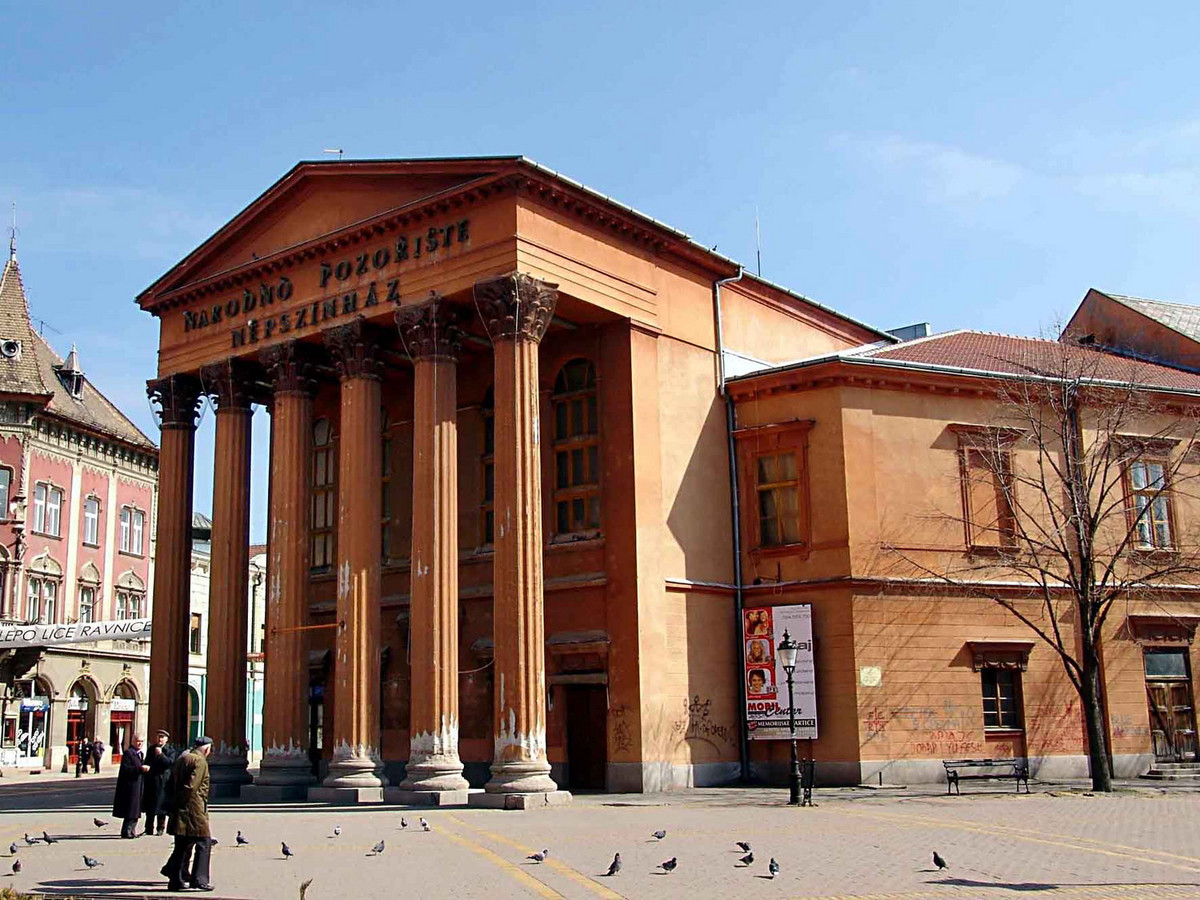 Thankfully, it is not all sad news in Subotica. The trees, which give the city its distinct character, have so far been spared destruction.
Thankfully, it is not all sad news in Subotica. The trees, which give the city its distinct character, have so far been spared destruction.
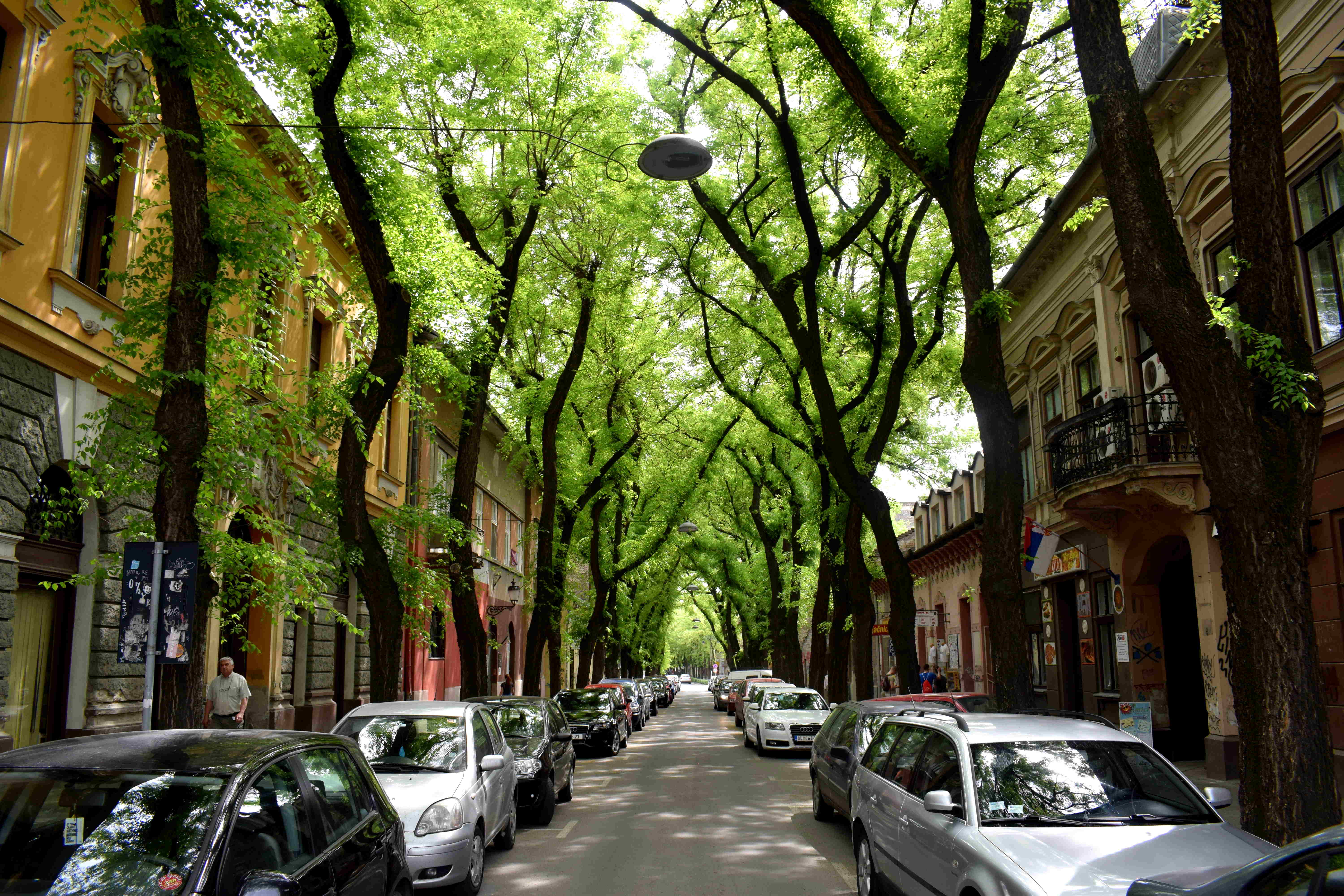 Hopefully the city never decides to tear them down. They make even a bland parking lot in the center look vibrant and alive.
Hopefully the city never decides to tear them down. They make even a bland parking lot in the center look vibrant and alive.
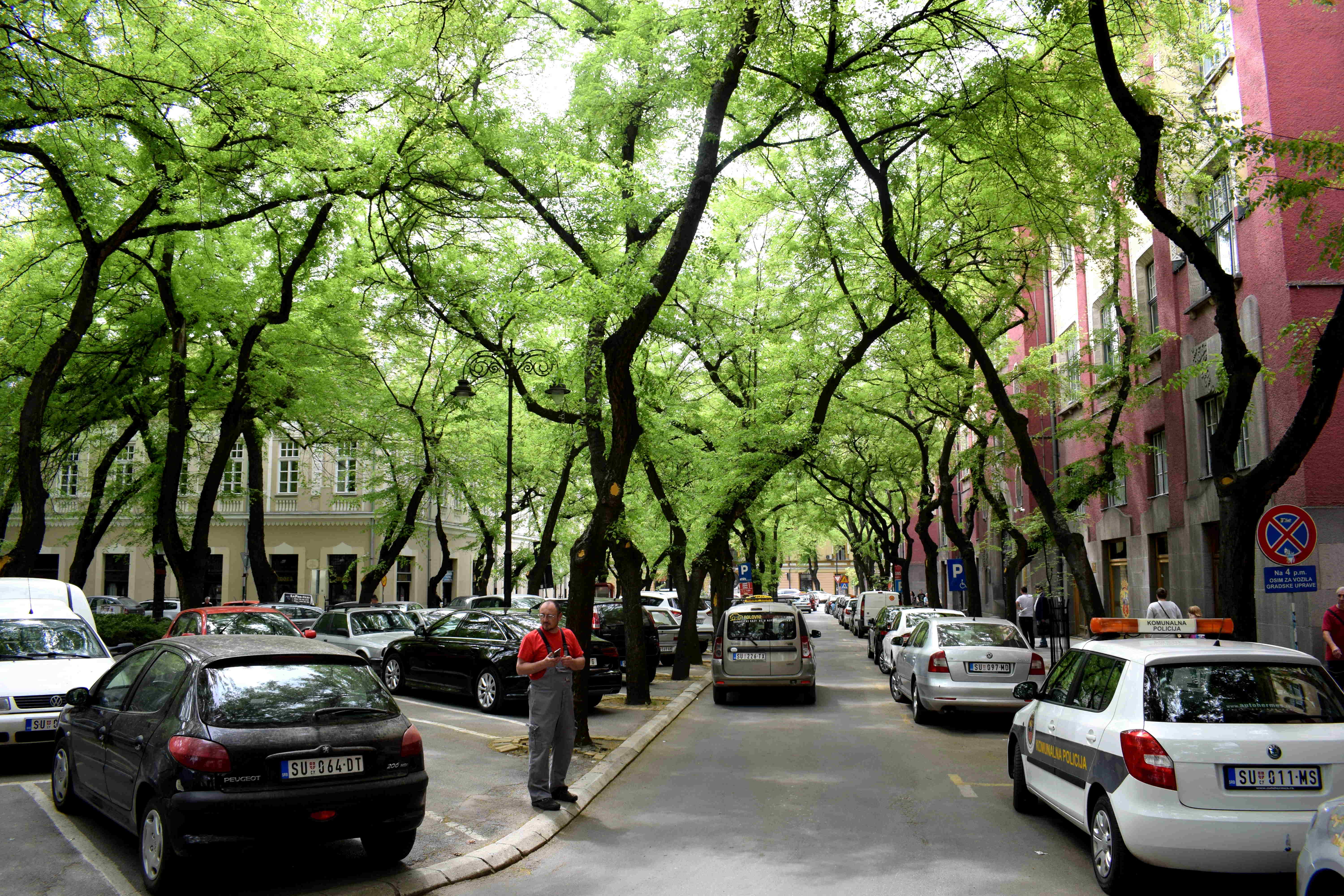 Of course, it would probably be better to close this area off for cars as well. I recognize this cannot be done for the whole city, but you can do it for most of the city’s historic core.
Of course, it would probably be better to close this area off for cars as well. I recognize this cannot be done for the whole city, but you can do it for most of the city’s historic core.
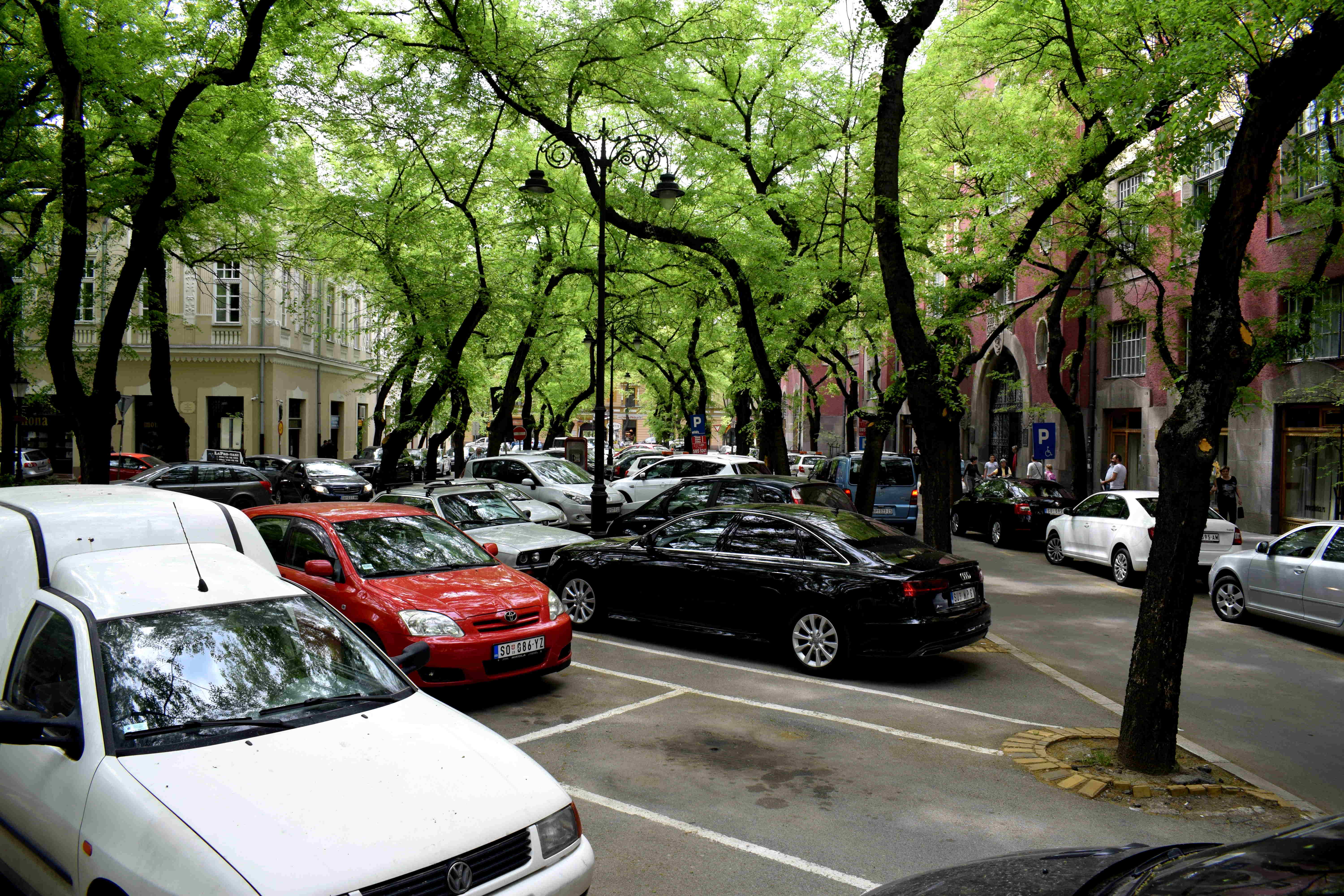 Getting rid of the cars opens up the center for areas like this.
Getting rid of the cars opens up the center for areas like this.
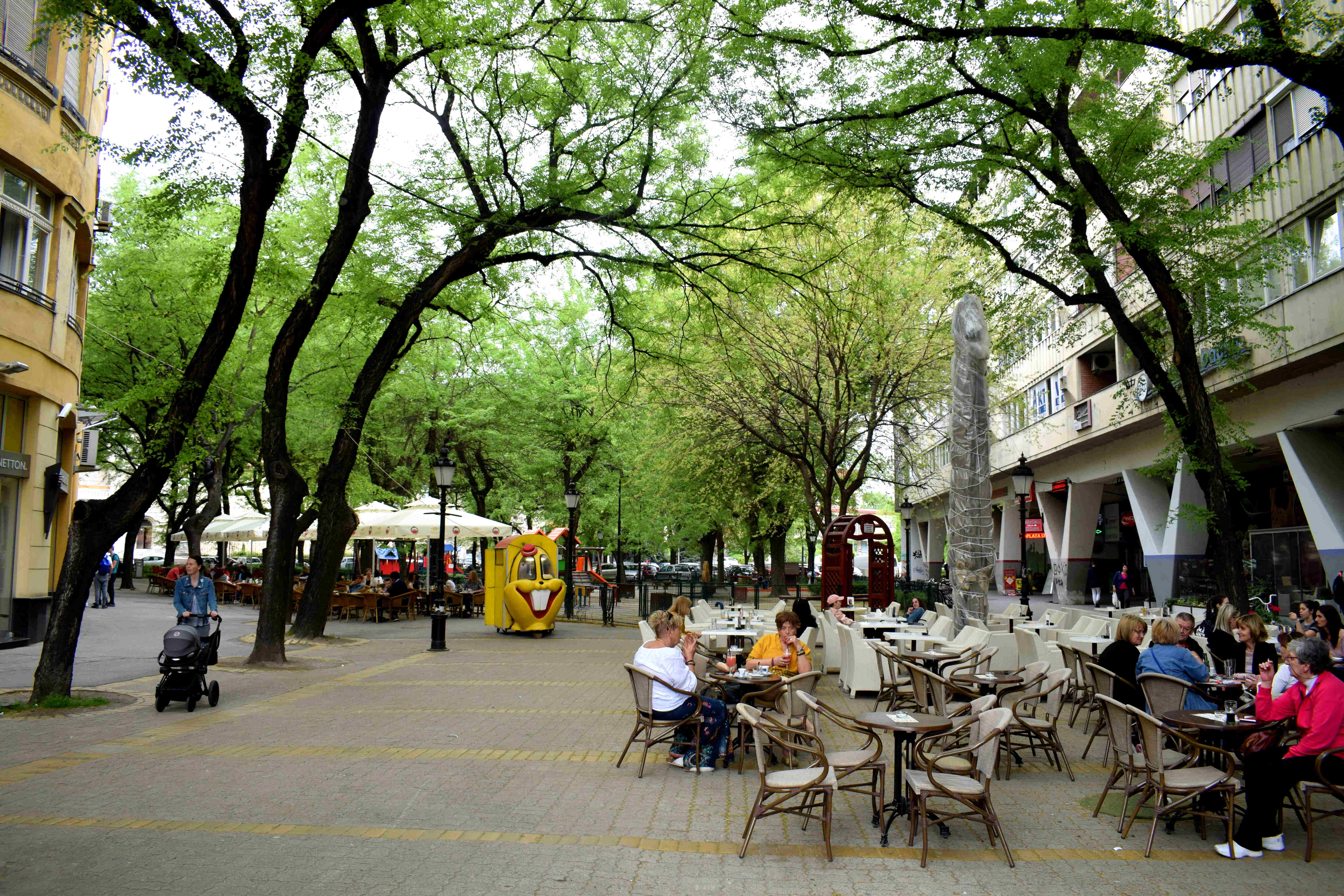 It’s hard to imagine that at one point this pedestrianized zone was open to traffic.
It’s hard to imagine that at one point this pedestrianized zone was open to traffic.
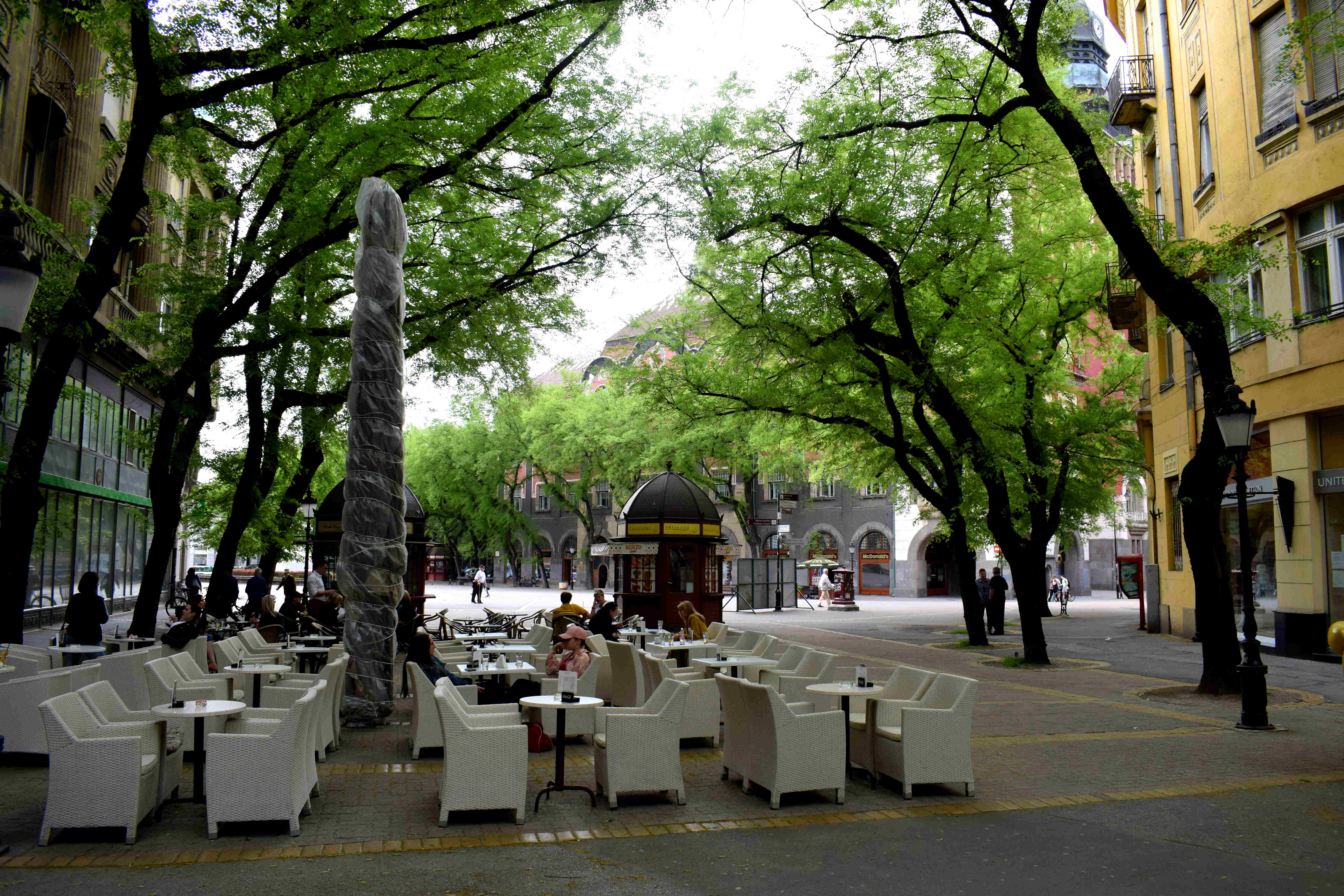 Subotica’s main square is an oasis of greenery dominated by cafes, tall leafy trees, green grass and a blue fountain in the very center.
Subotica’s main square is an oasis of greenery dominated by cafes, tall leafy trees, green grass and a blue fountain in the very center.
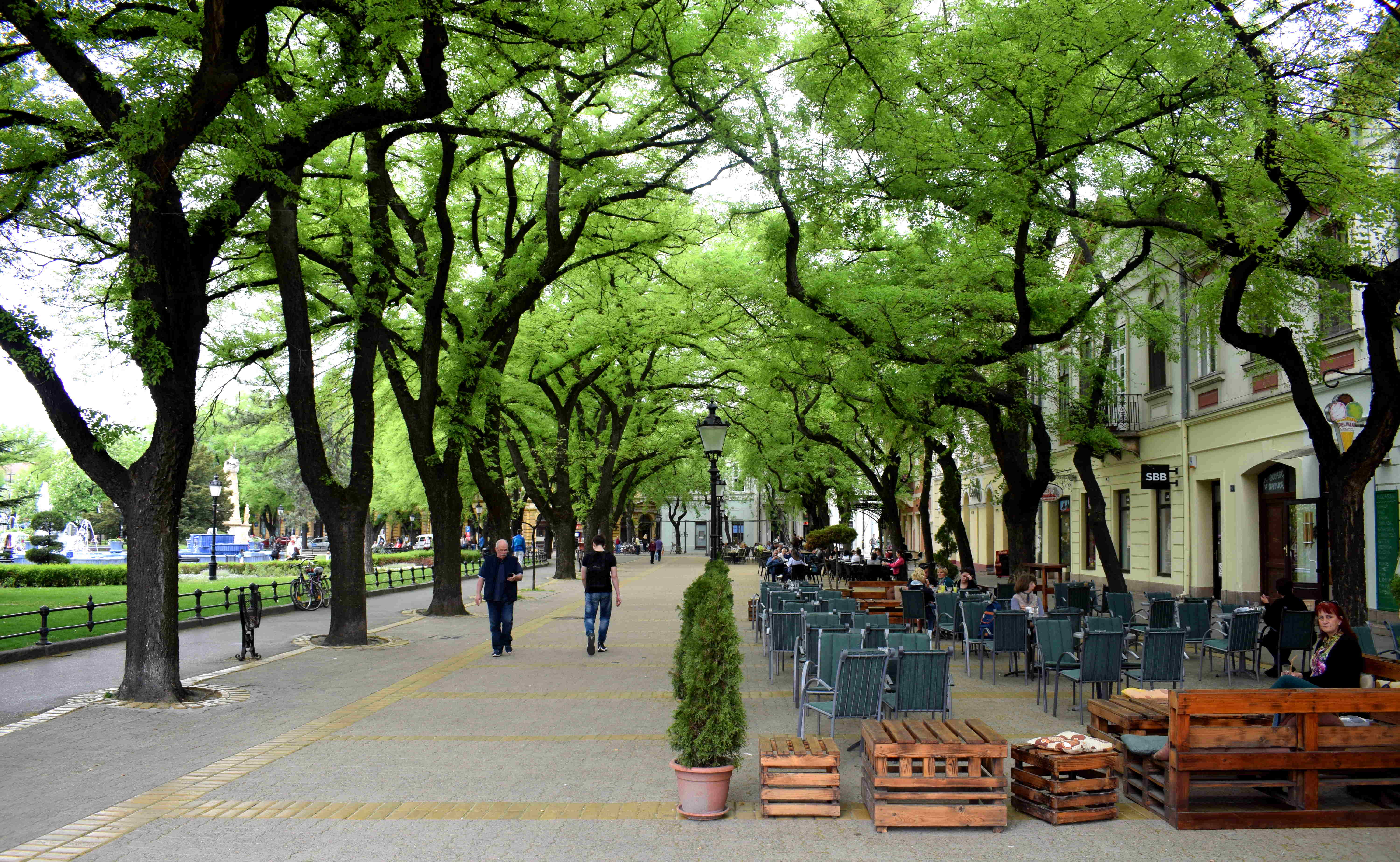 A scaled-down model of the city’s historic core.
A scaled-down model of the city’s historic core.
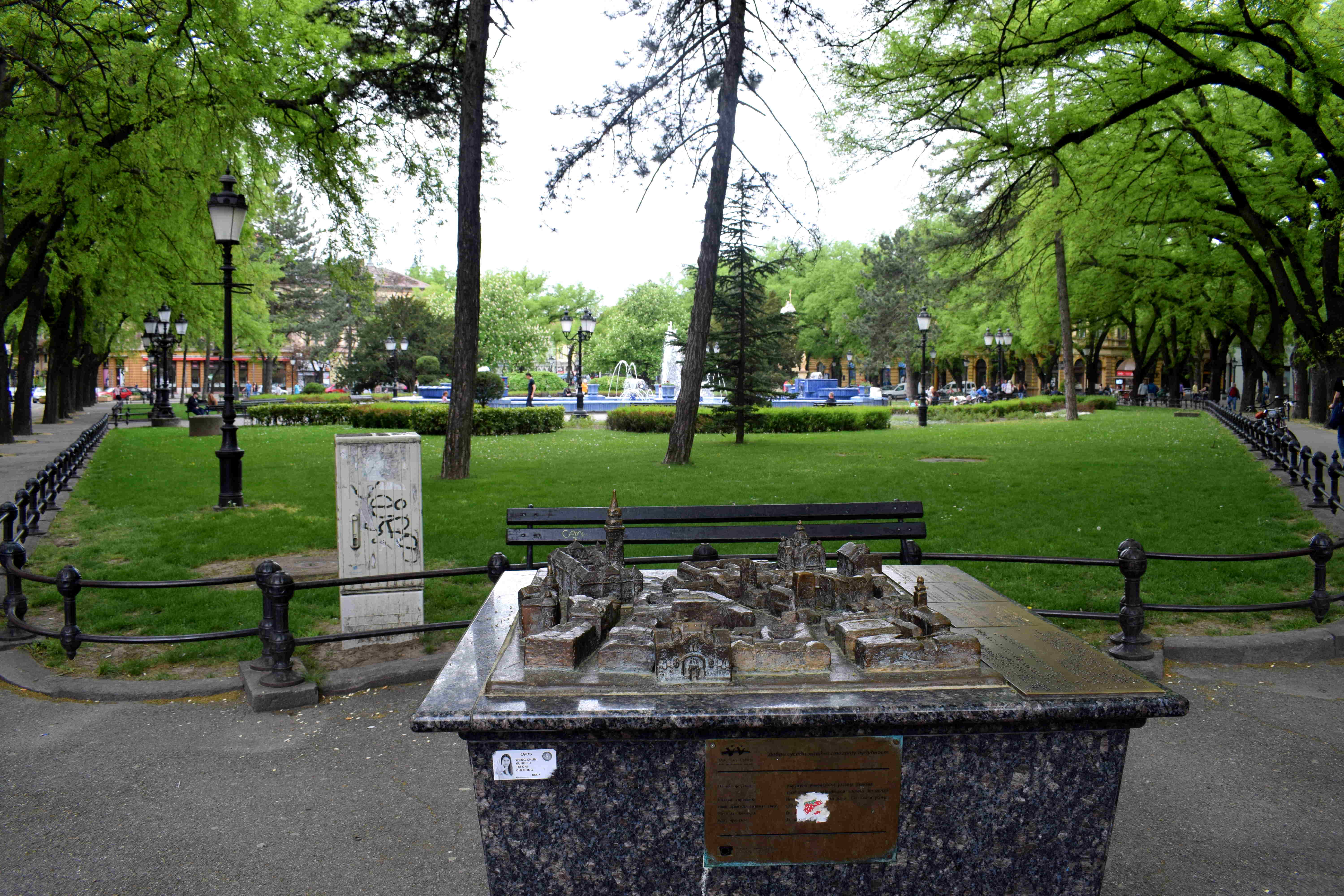 Some might complain that having so many trees on the city’s main square makes it impossible to take a good photo of any of the buildings. I think it makes the area look even better, distinguishing it from other similar squares in Europe.
Some might complain that having so many trees on the city’s main square makes it impossible to take a good photo of any of the buildings. I think it makes the area look even better, distinguishing it from other similar squares in Europe.
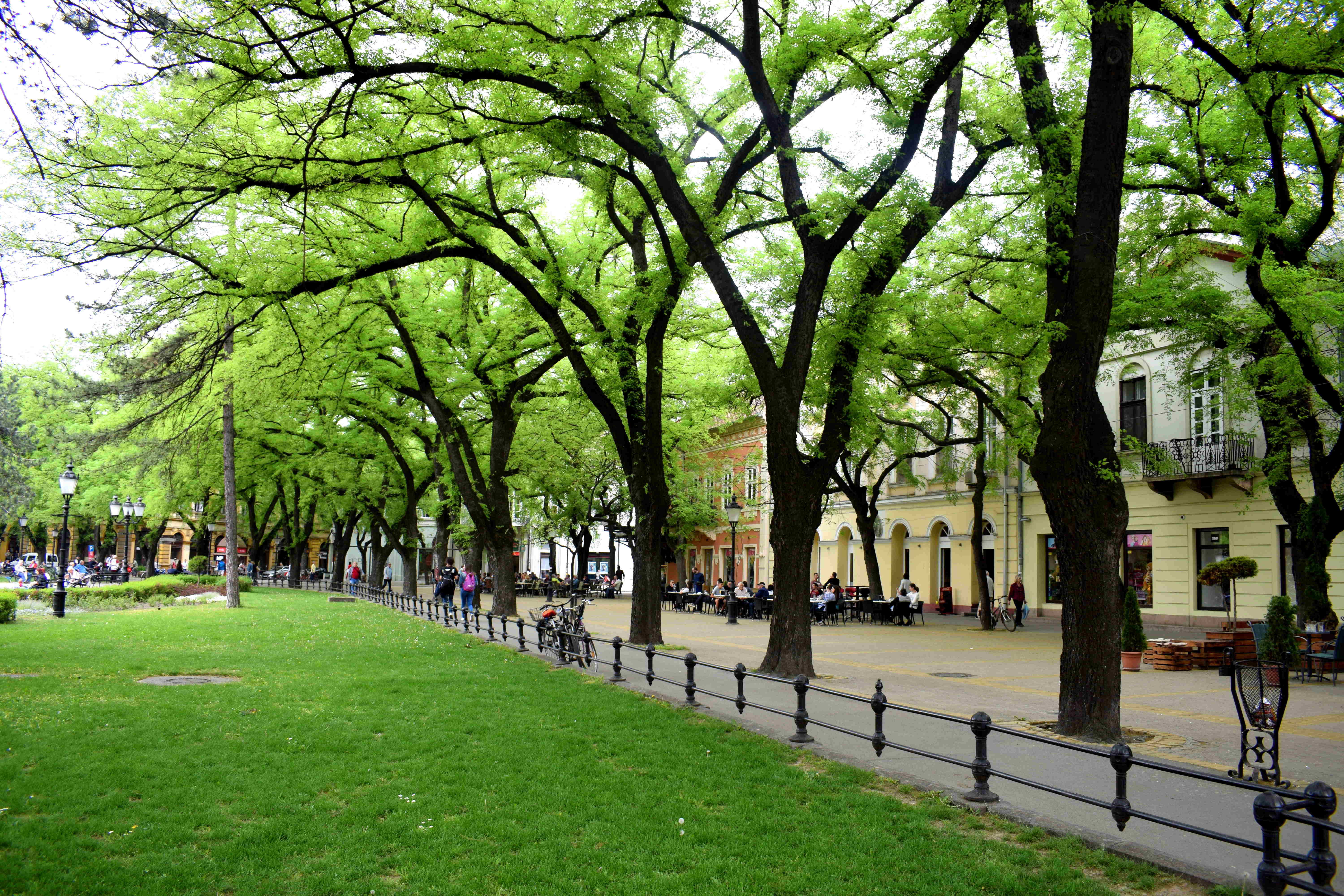 In the center of the city is Subotica’s Blue Fountain (that’s literally the name). It’s a nice area to sit on a bench and read a book while listening to the sound of running water.
In the center of the city is Subotica’s Blue Fountain (that’s literally the name). It’s a nice area to sit on a bench and read a book while listening to the sound of running water.
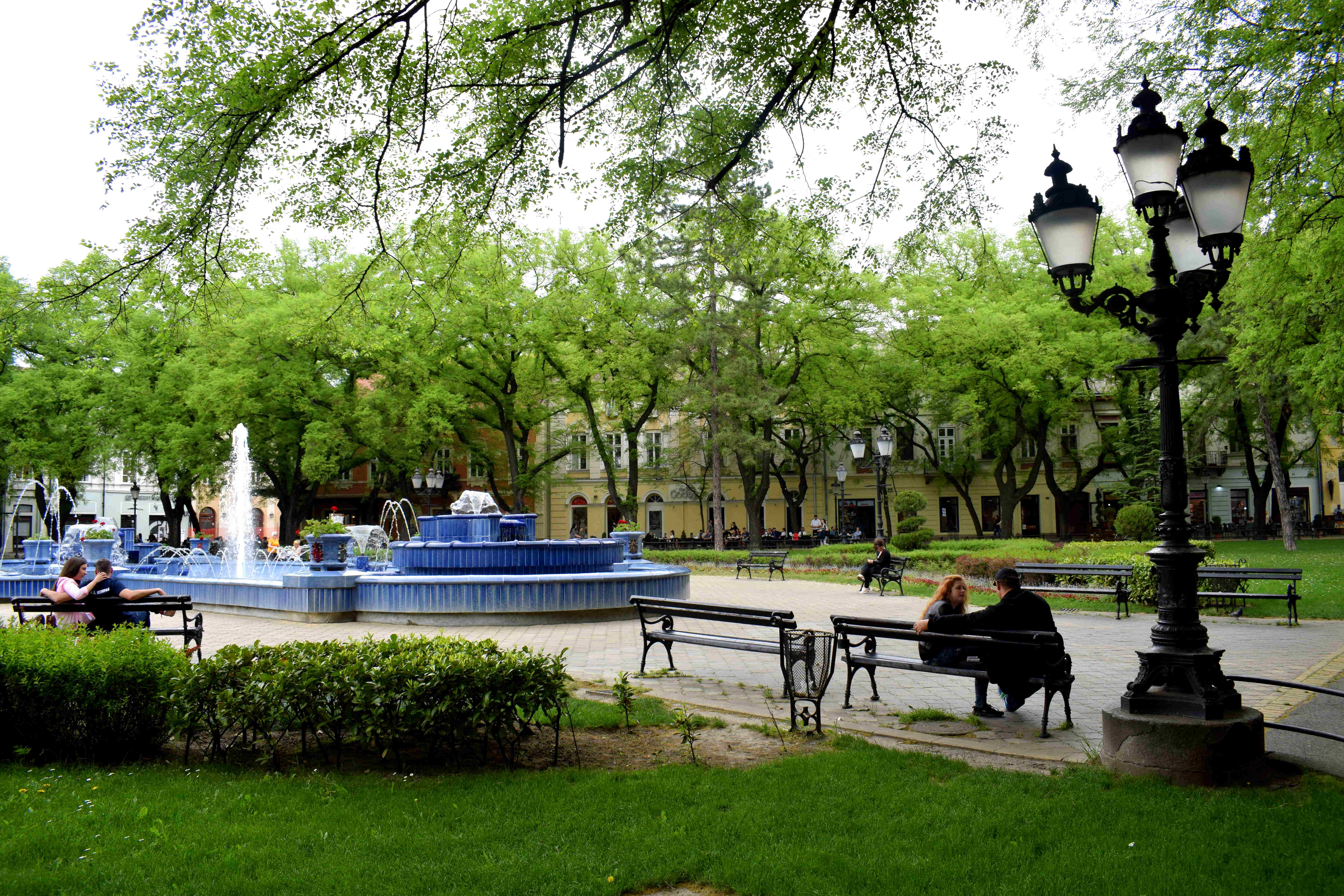 The main building on the main square is Subotica’s Town Hall which towers over the rest of the city.
The main building on the main square is Subotica’s Town Hall which towers over the rest of the city.
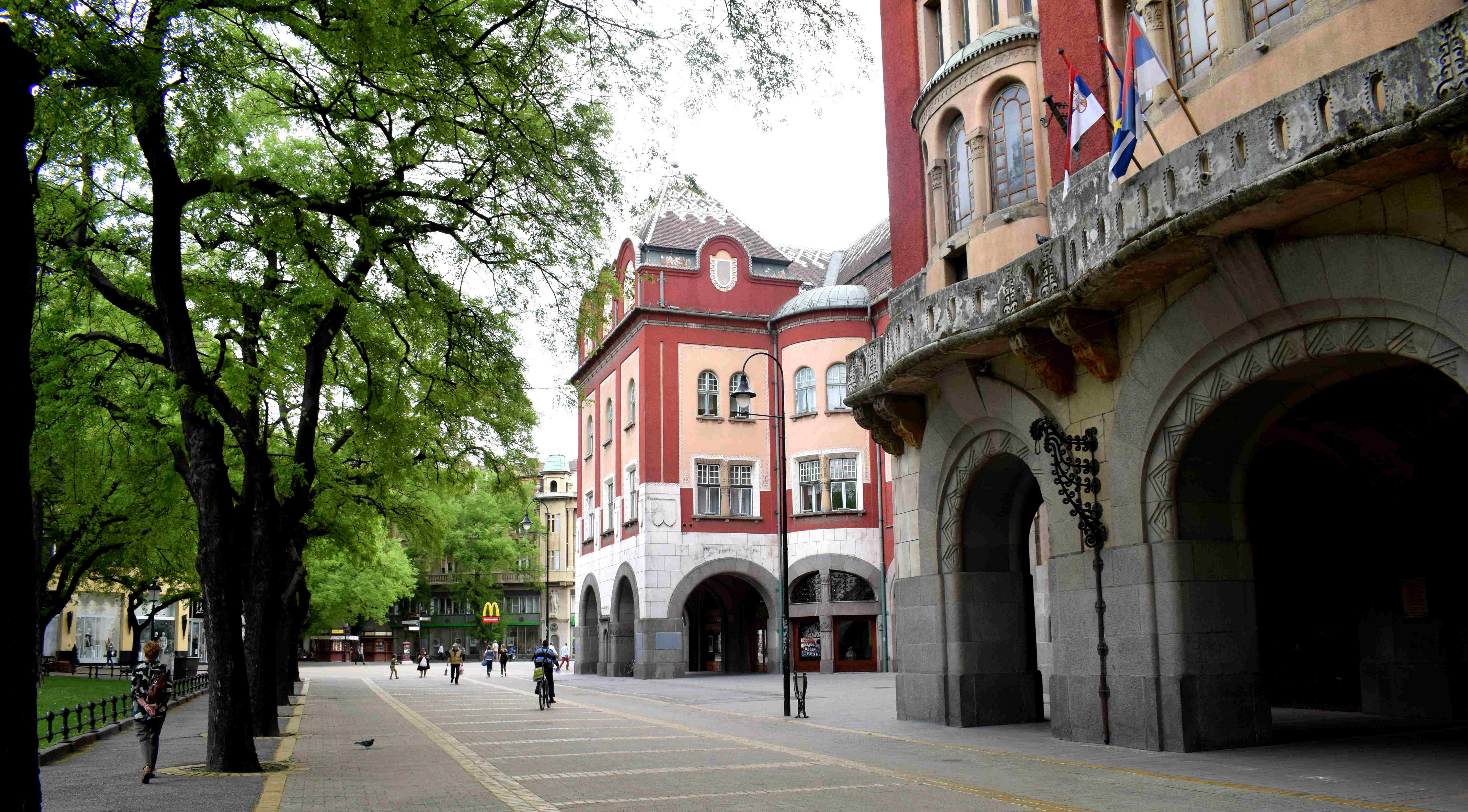 You know that cycling is a popular means of transport in a city when you get elderly folks riding around on two wheels.
You know that cycling is a popular means of transport in a city when you get elderly folks riding around on two wheels.
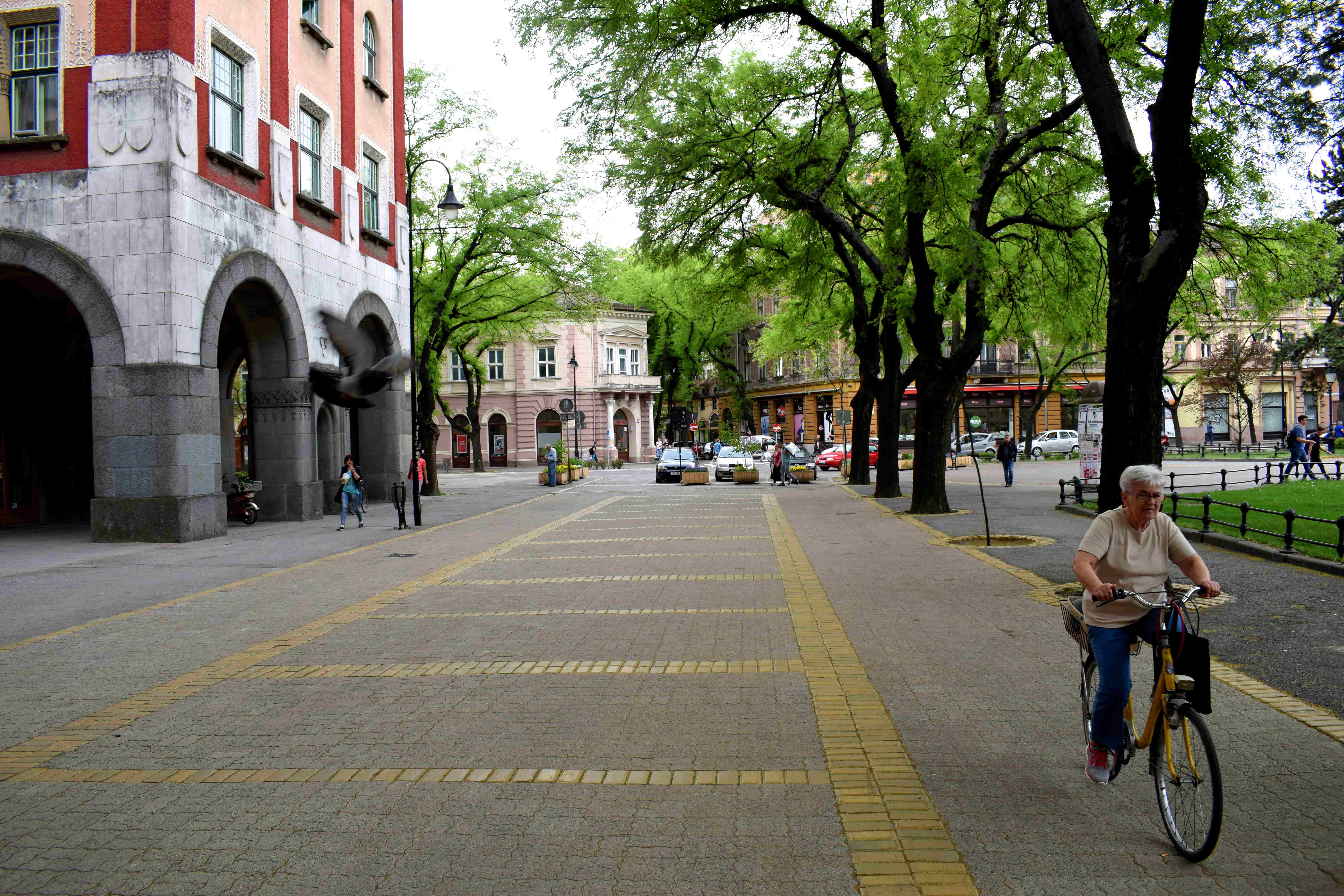 In some places the city has simply been taken over by greenery, with Subotica’s buildings barely visible through all the bushes and grass and trees and leaves.
In some places the city has simply been taken over by greenery, with Subotica’s buildings barely visible through all the bushes and grass and trees and leaves.
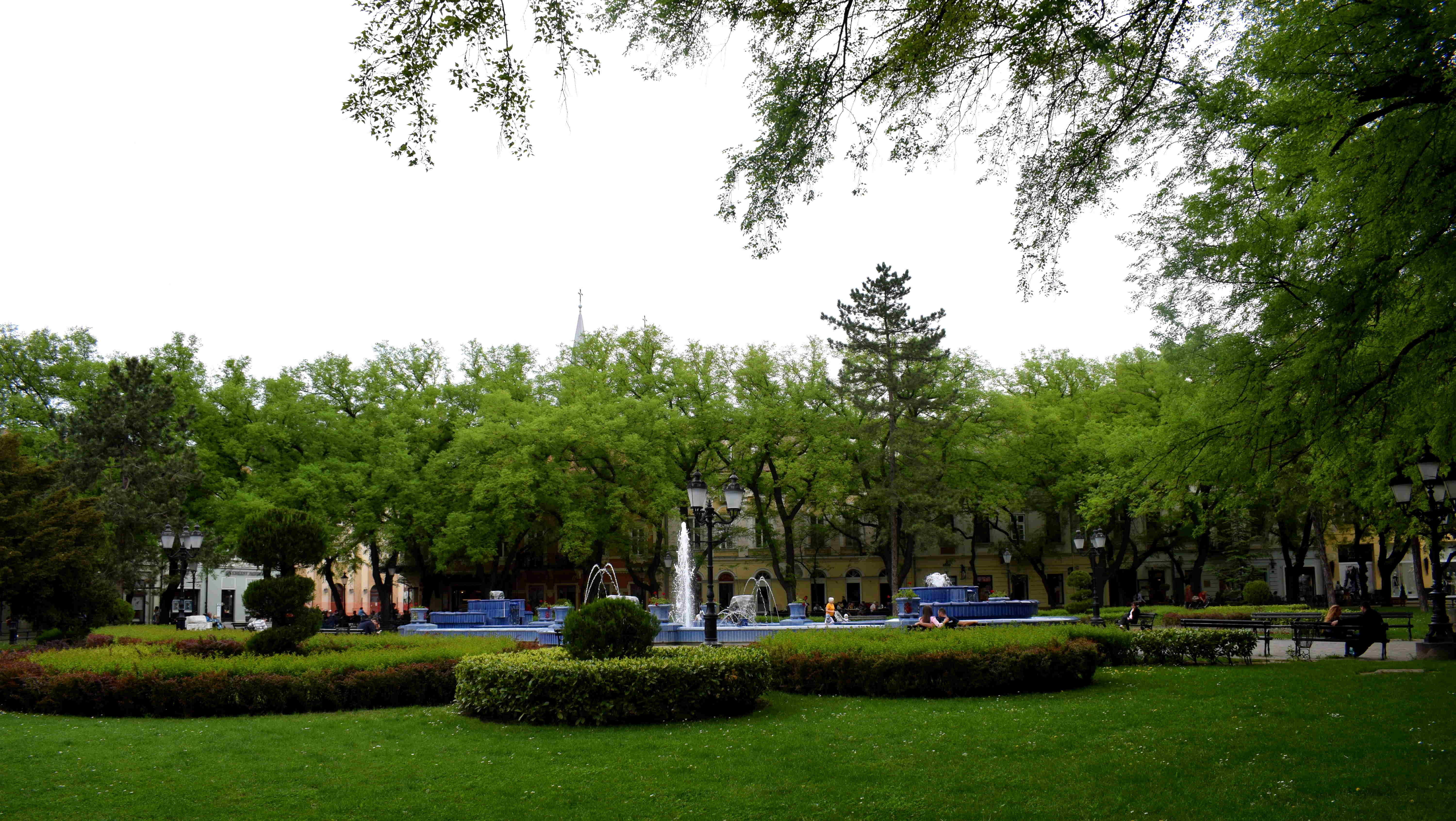 A monument to the Holy Trinity, located on the main square.
A monument to the Holy Trinity, located on the main square.
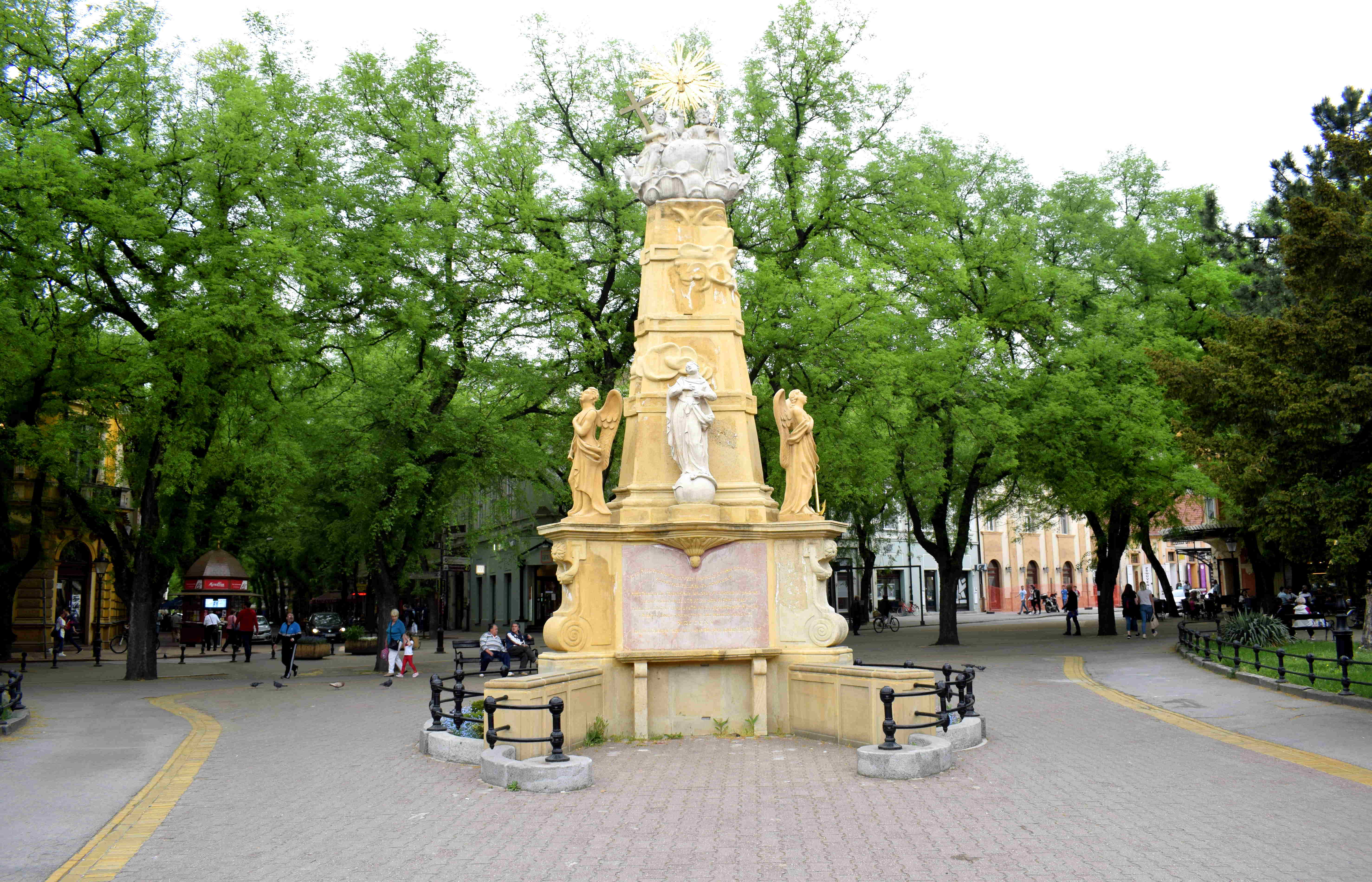 More old buildings.
More old buildings.
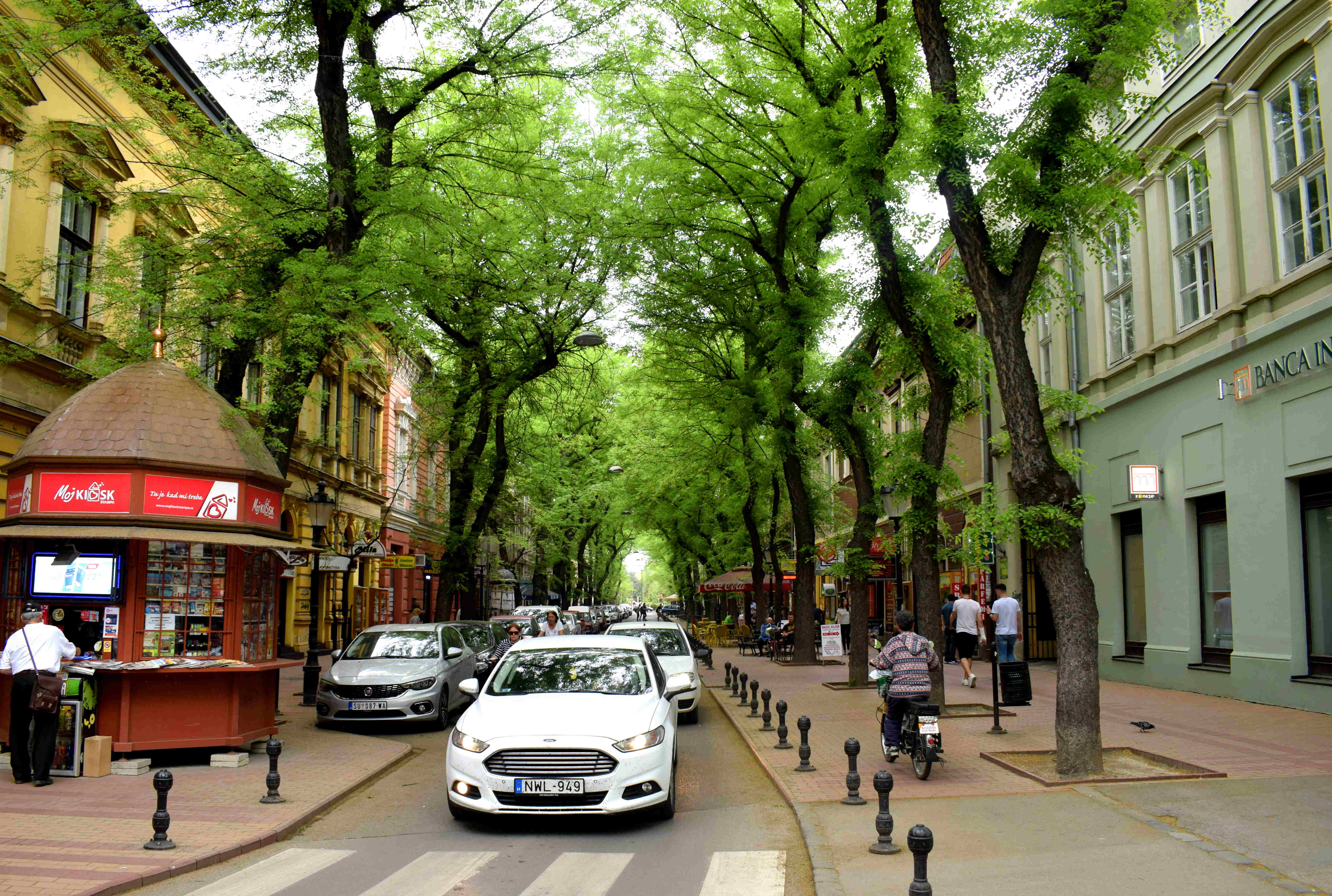 More trees.
More trees.
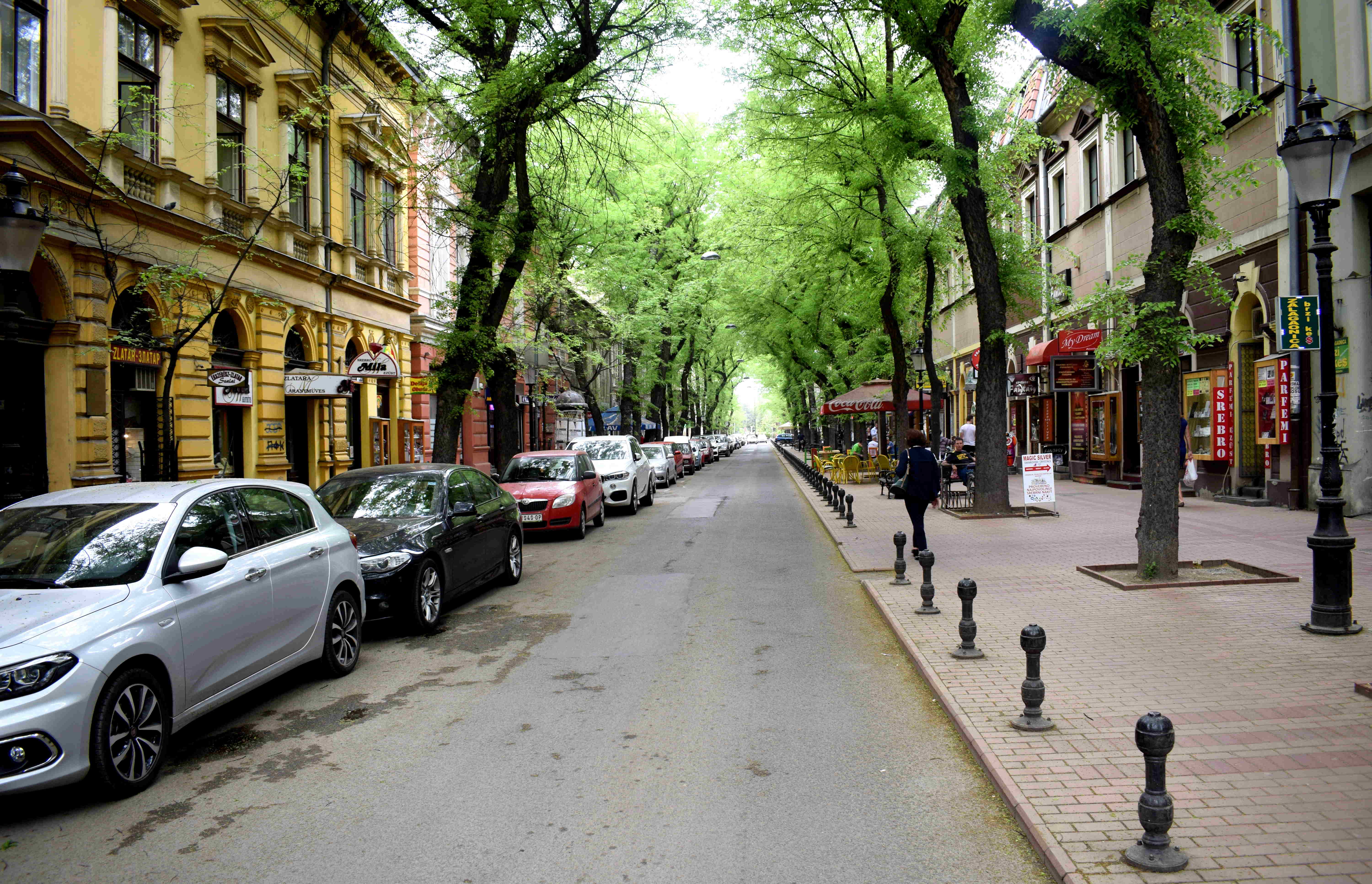 This is what cities should aspire to look like.
This is what cities should aspire to look like.
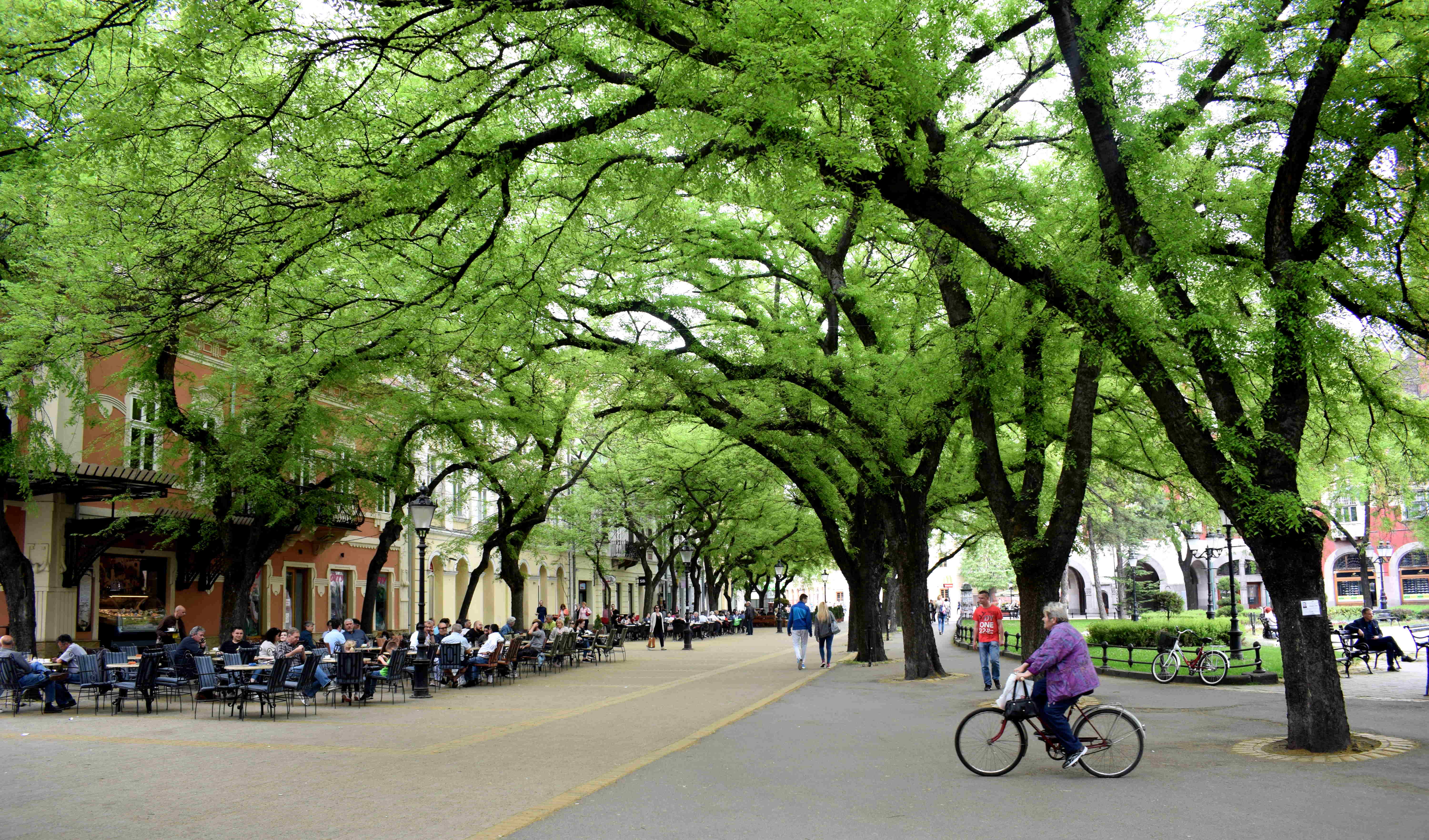 Just like in the rest of the Balkans, cafe culture is alive and well in Subotica. Throughout the entire day the cafes are filled with locals drinking coffee, smoking cigarettes, chatting with friends and reading the newspaper.
Just like in the rest of the Balkans, cafe culture is alive and well in Subotica. Throughout the entire day the cafes are filled with locals drinking coffee, smoking cigarettes, chatting with friends and reading the newspaper.
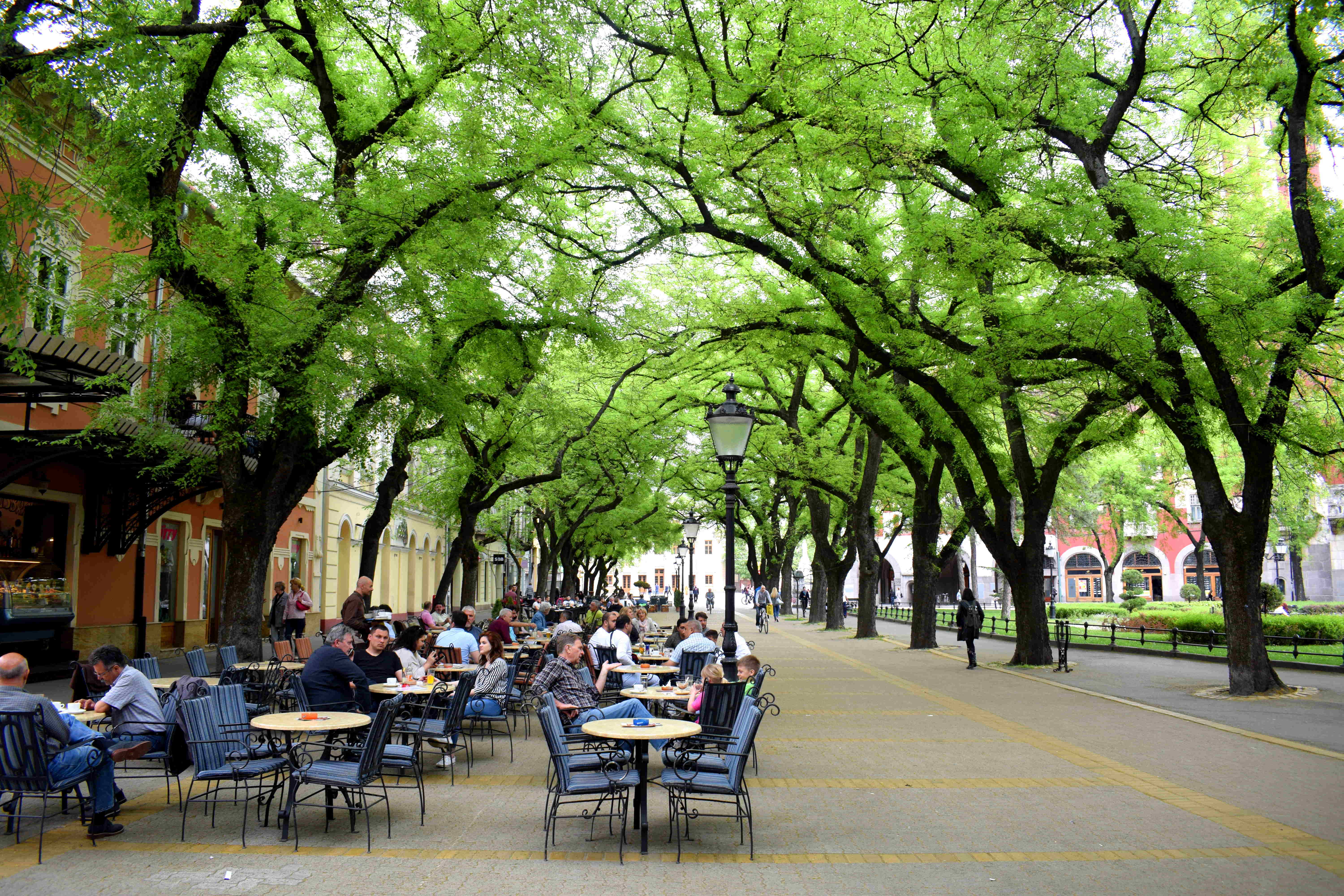 In areas of the center where there are still cars, the streets have been narrowed to only one lane with a low speed limit.
In areas of the center where there are still cars, the streets have been narrowed to only one lane with a low speed limit.
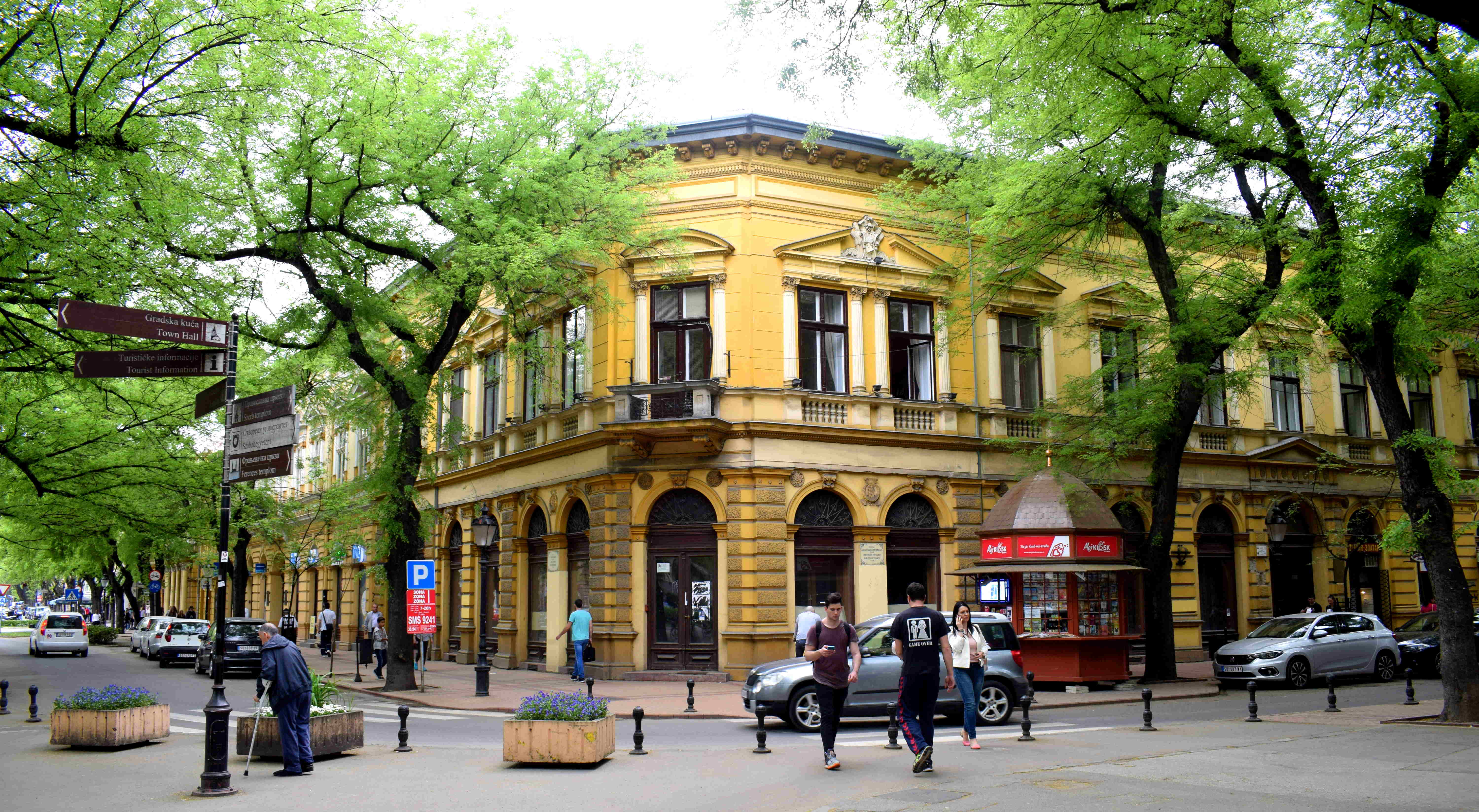 Wide sidewalks make the city accessible for the least mobile of residents.
Wide sidewalks make the city accessible for the least mobile of residents.
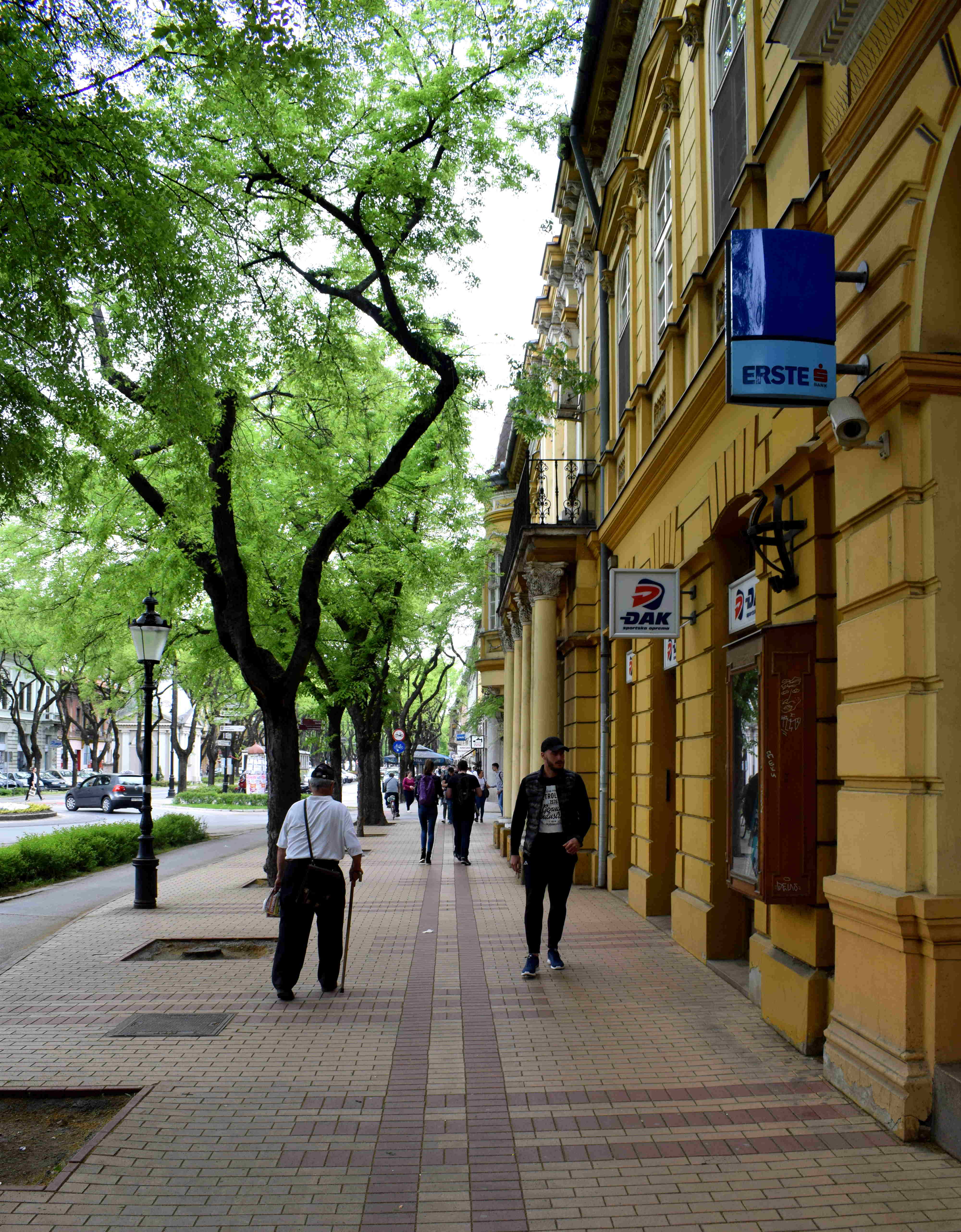 A small chapel further away from the main square.
A small chapel further away from the main square.
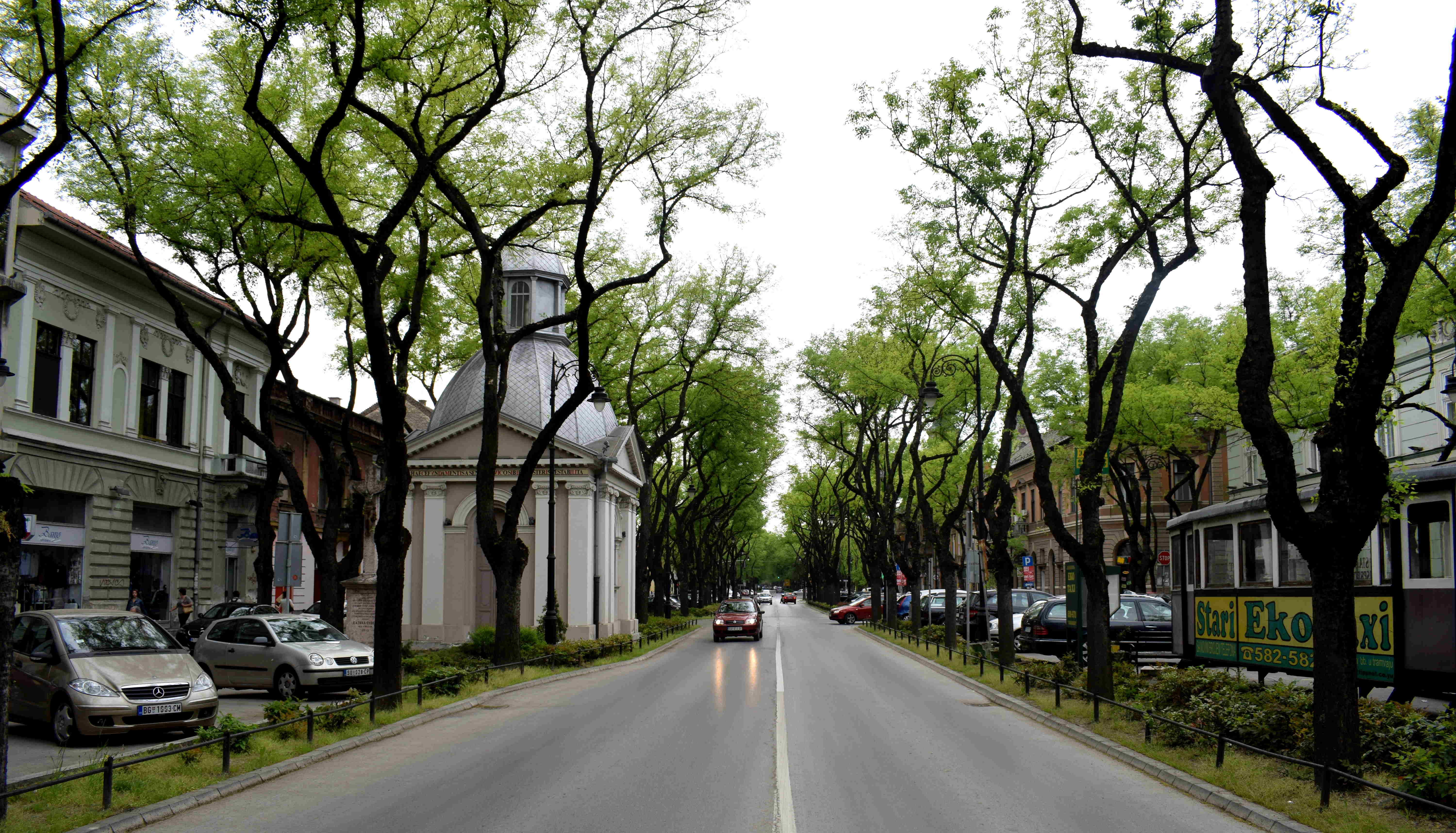 Almost all of Subotica’s center is dominated by historic two-story buildings. The city has yet to be ruined by developers.
Almost all of Subotica’s center is dominated by historic two-story buildings. The city has yet to be ruined by developers.
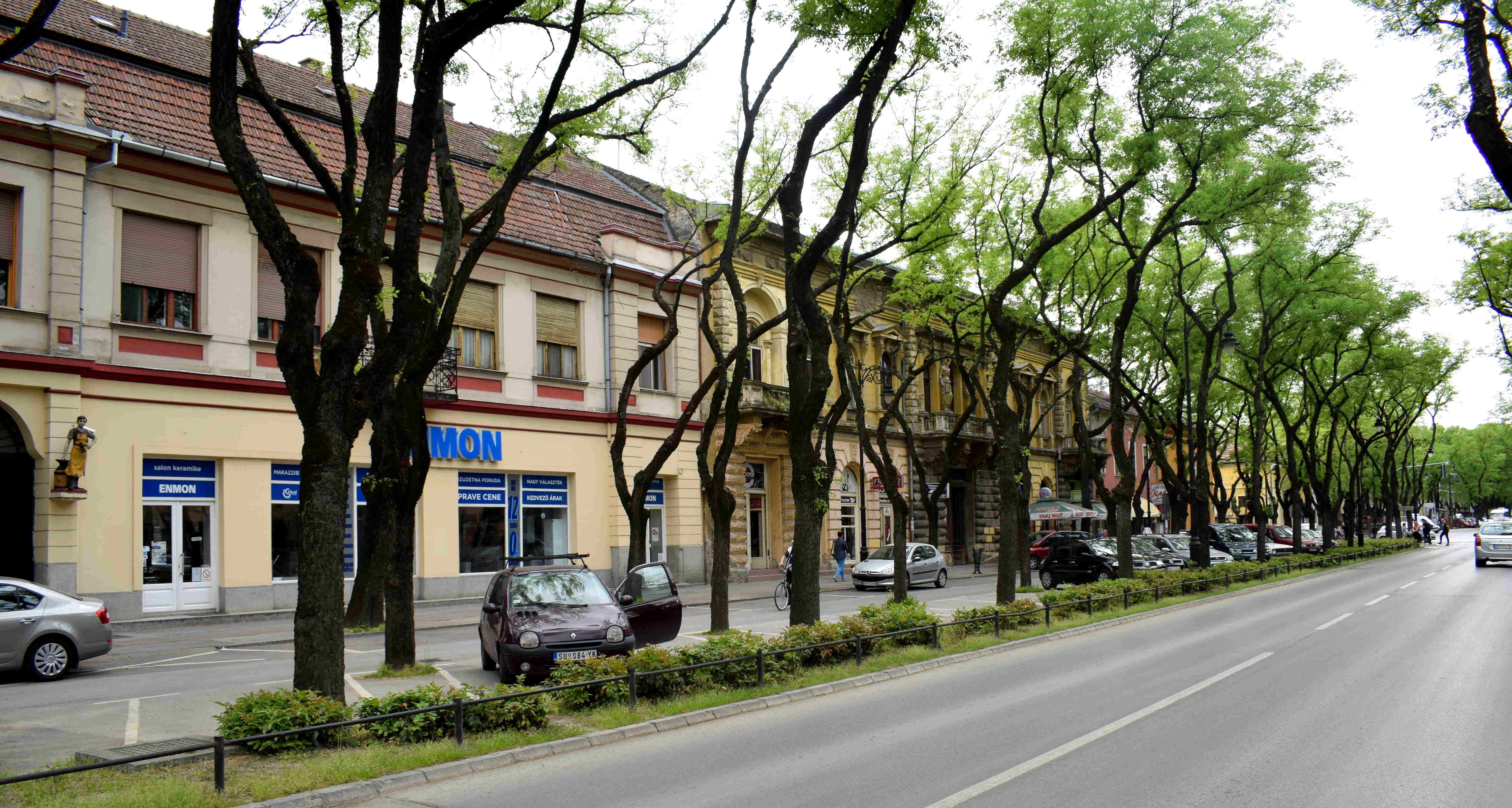 Hopefully the city will continue to pedestrianize more and more streets like these and promote walking and cycling and public transportation over driving.
Hopefully the city will continue to pedestrianize more and more streets like these and promote walking and cycling and public transportation over driving.
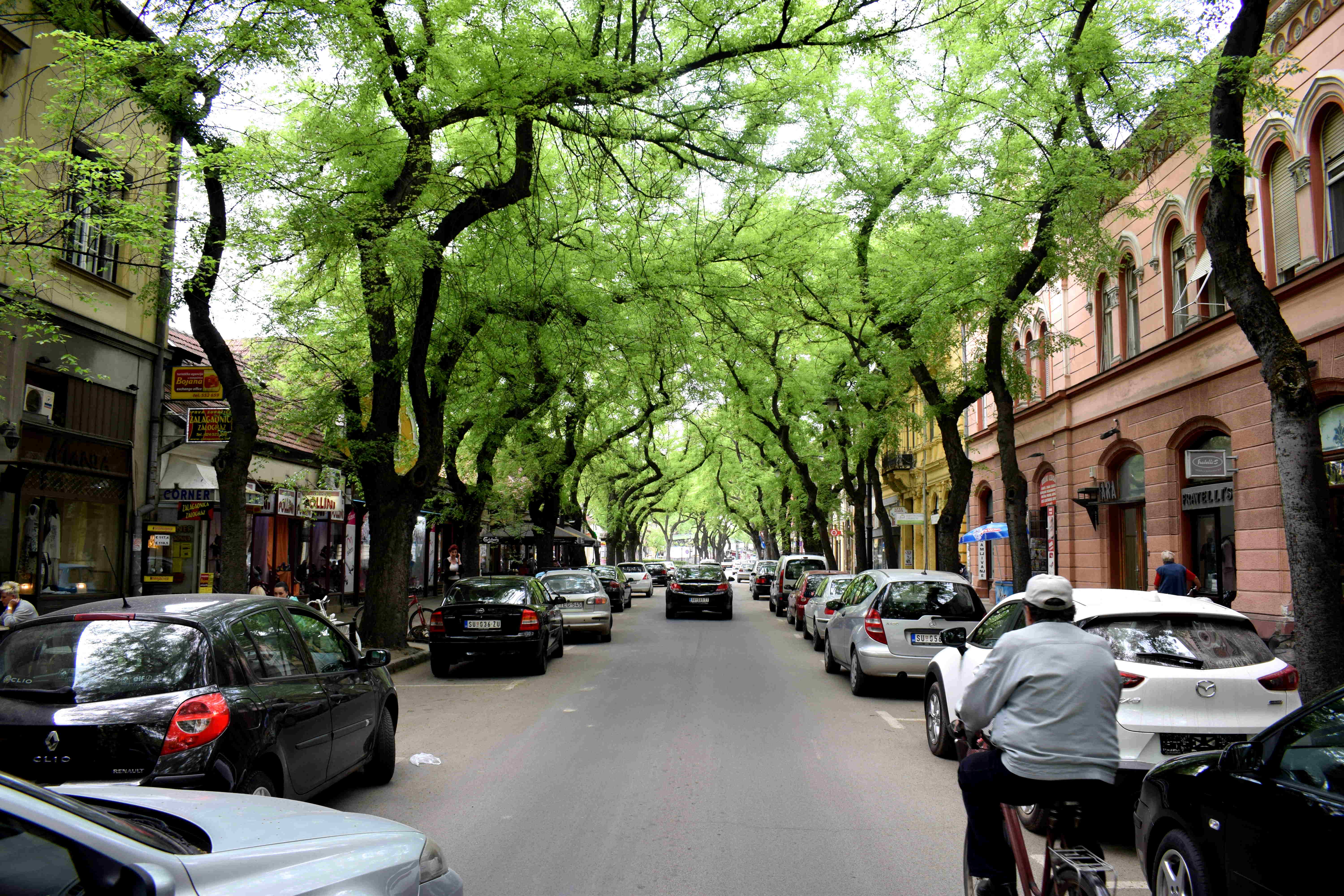 One important sight to see in Subotica is the city’s synagogue. I would have never guessed that the second largest synagogue in all of Europe can be found in this small Serbian city of 100,000 people. Built in 1902 in the art nouveau style by the same Hungarian architects that constructed Subotica’s impressive town hall, the synagogue is the only surviving Hungarian art nouveau Jewish place of worship in the world. The building is a reflection of the dual Jewish-Hungarian nature of Subotica in the early 20th century, a city that was the tenth largest city in the Austro-Hungarian Empire and a major economic center. Miraculously the synagogue survived WWII in tact, unlike most Jewish heritage which was wiped out on the continent.
One important sight to see in Subotica is the city’s synagogue. I would have never guessed that the second largest synagogue in all of Europe can be found in this small Serbian city of 100,000 people. Built in 1902 in the art nouveau style by the same Hungarian architects that constructed Subotica’s impressive town hall, the synagogue is the only surviving Hungarian art nouveau Jewish place of worship in the world. The building is a reflection of the dual Jewish-Hungarian nature of Subotica in the early 20th century, a city that was the tenth largest city in the Austro-Hungarian Empire and a major economic center. Miraculously the synagogue survived WWII in tact, unlike most Jewish heritage which was wiped out on the continent.
 More trees.
More trees.
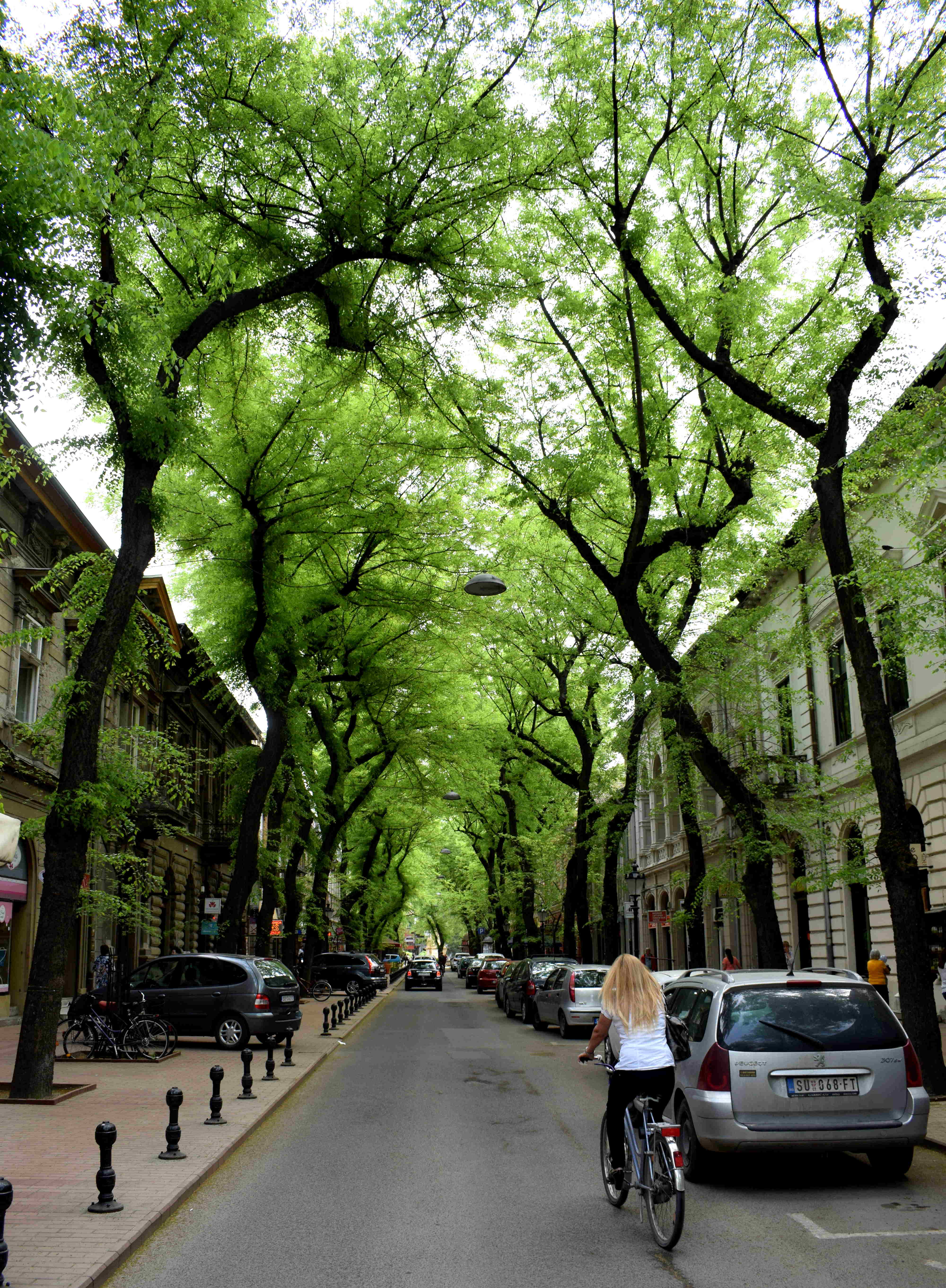 I really hope nobody ever decides to cut them down. Subotica would not be the same without them.
I really hope nobody ever decides to cut them down. Subotica would not be the same without them.
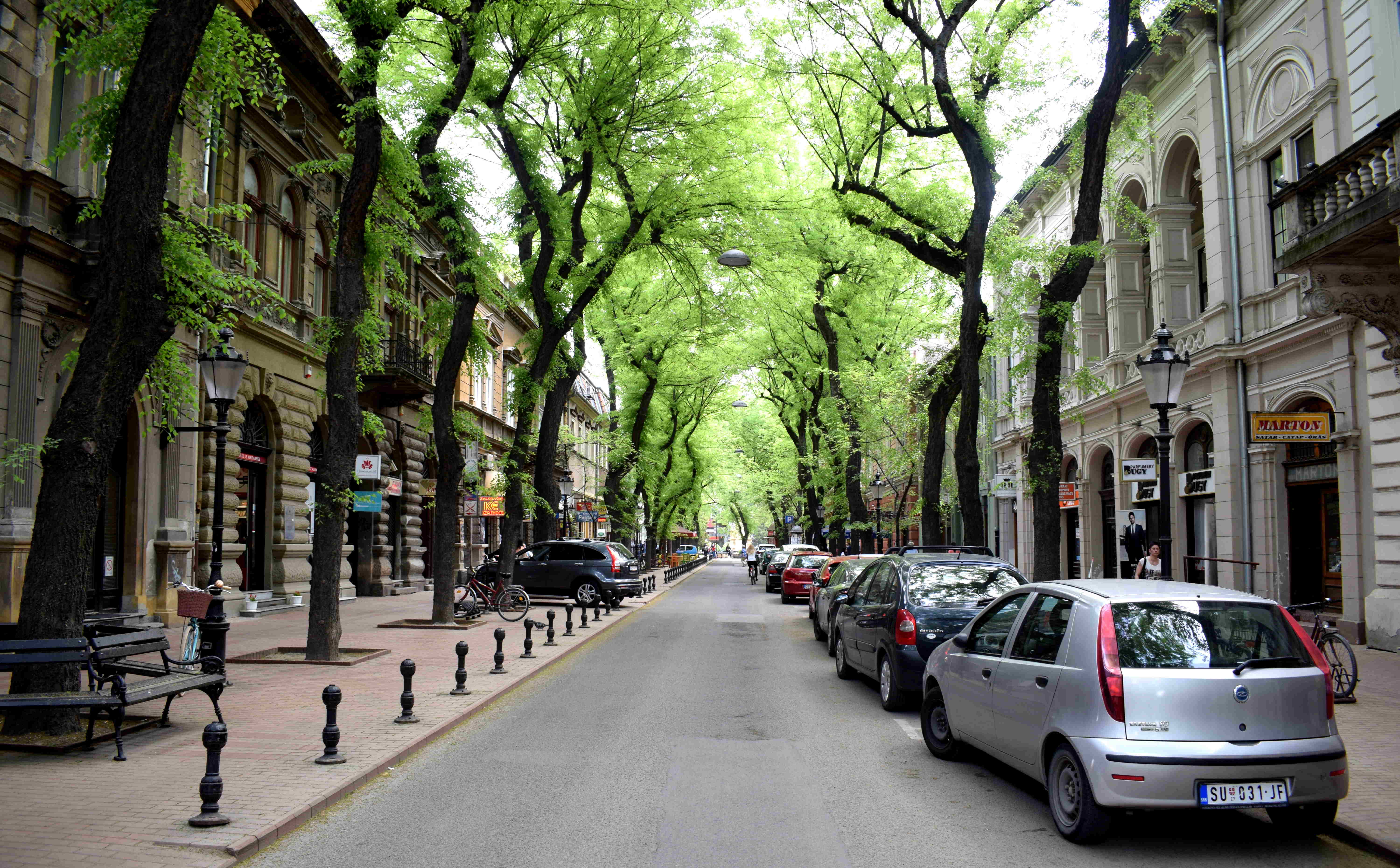 How many other cities are there that can boast of such a balanced blend of outdoor greenery and historic architecture?
How many other cities are there that can boast of such a balanced blend of outdoor greenery and historic architecture?
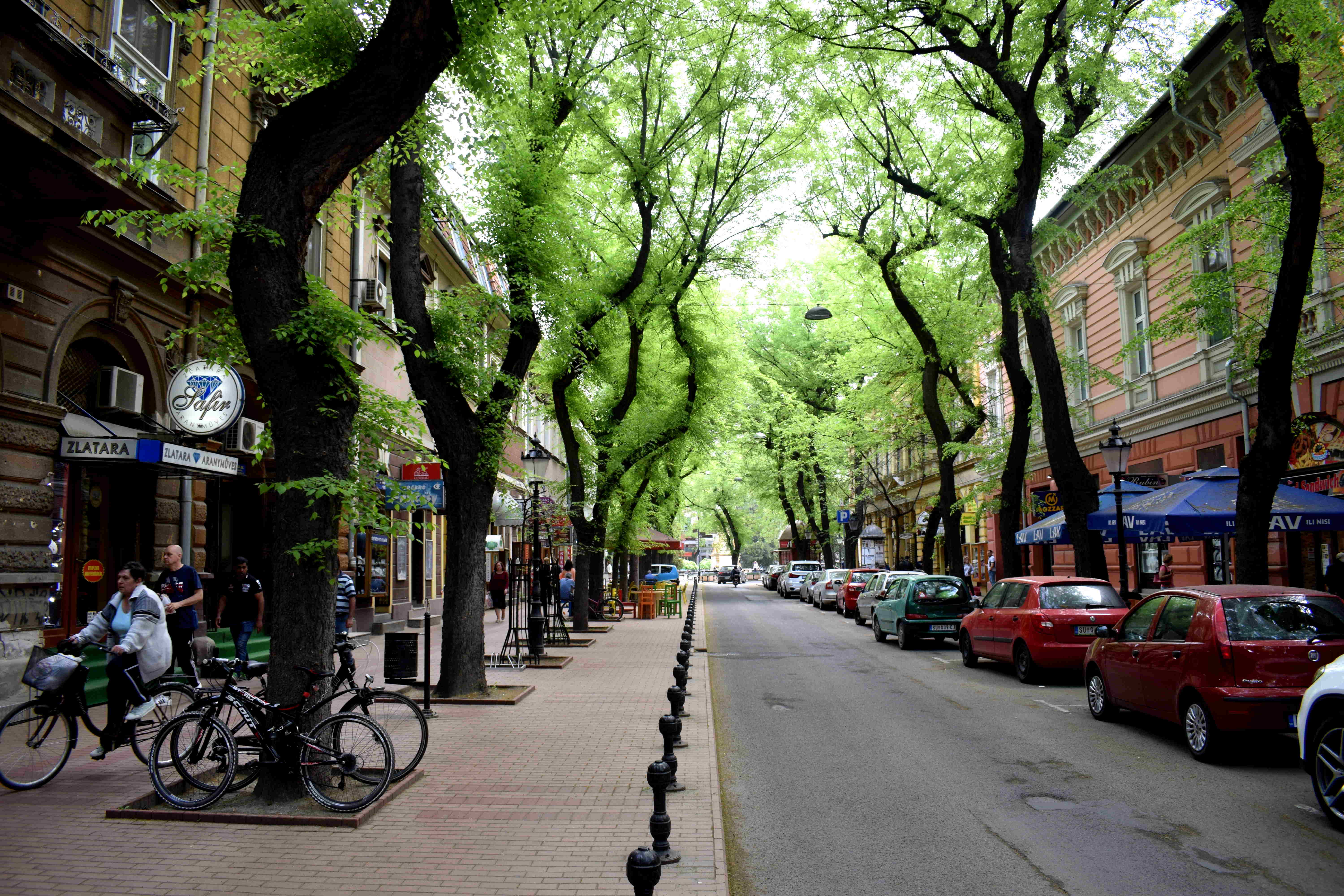 A beautiful balcony above a restaurant in the center.
A beautiful balcony above a restaurant in the center.
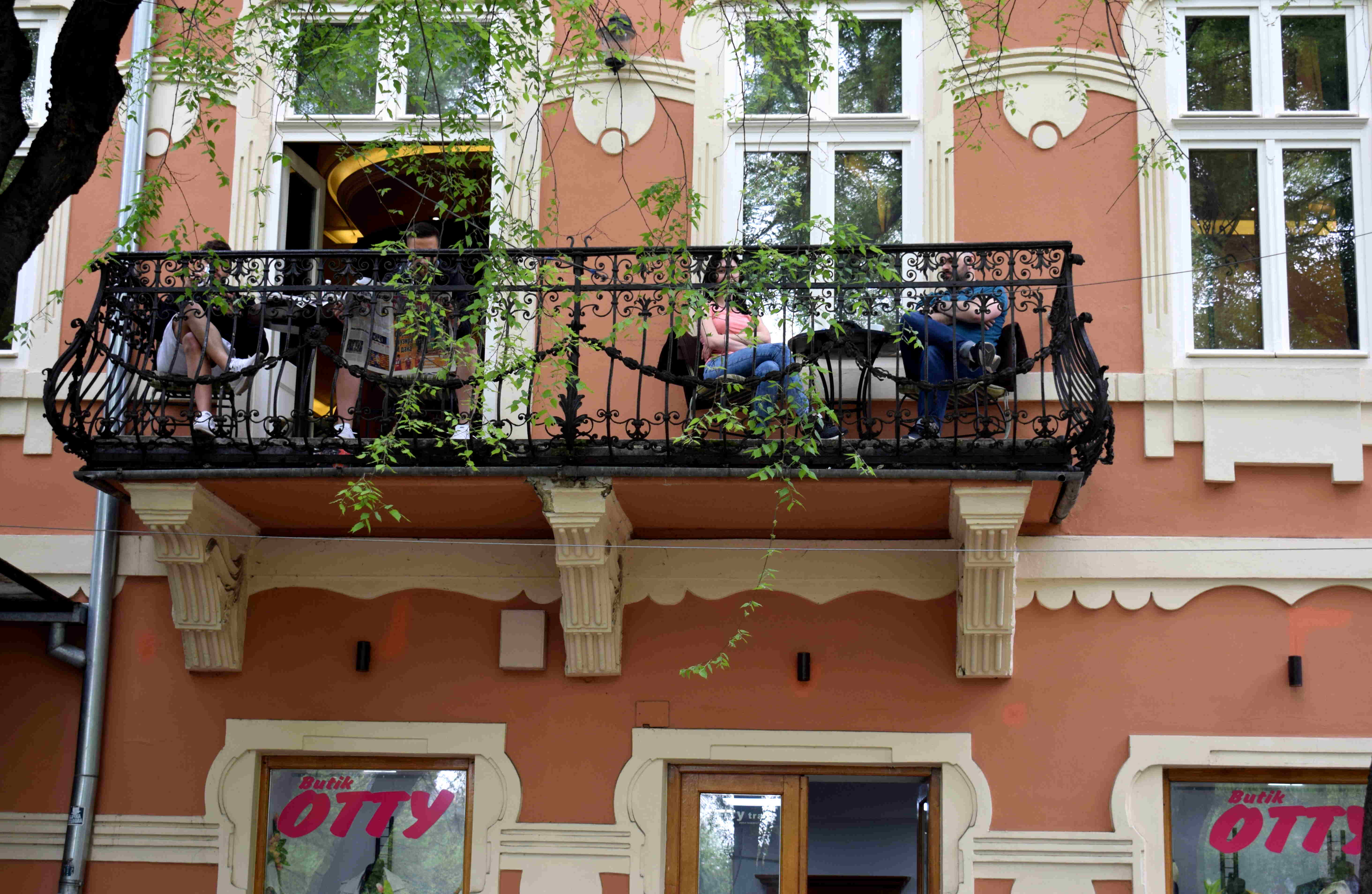 How can you not love a city like this?
How can you not love a city like this?
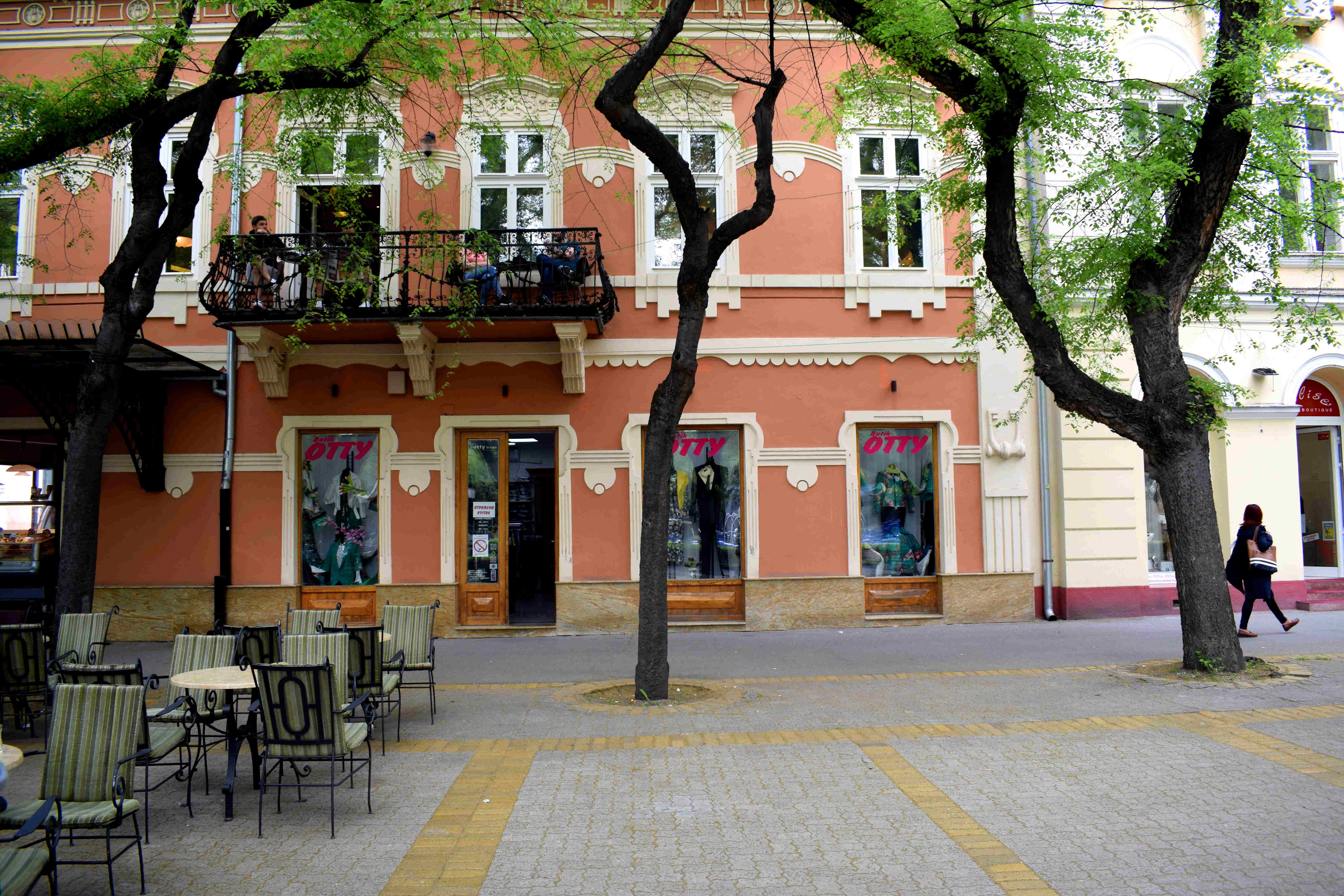 I will admit, before I visited Subotica I did not truly appreciate the importance of trees in cities.
I will admit, before I visited Subotica I did not truly appreciate the importance of trees in cities.
In fact, I even sometimes advocated to chop them down. As an avid biker, I value cities that have dedicated bike lanes. When an old tree planted over 100 years ago takes up a significant portion of the sidewalk, and narrowing the street where cars drive is not an option, the logical solution for me was to cut down the tree.
Now I realize how wrong I was. Now I realize that trees are an integral part of a city.
They breathe life into the urban landscape. They make it more comfortable to walk down the street. The air is fresher. The air is cooler. They make a city more vibrant, closer to nature.
My original plan was to get from Budapest to Belgrade as fast as possible. I ended up in Subotica by accident.
But how happy I am that I set aside a few hours to visit this city.
It’s a shame that Belgrade and Budapest swallow up all the tourists visiting this corner of Europe. Because its cities like Subotica that lose out. Everyone just wants to go to the most popular destinations in guidebooks. Nobody wants to go off the beaten track. I can’t imagine what other gems lie hidden in the fields of southern Hungary and northern Serbia.
So if you ever find yourself in this corner of Europe, do yourself a favor and stop by a smaller city like Subotica. You will be glad that you did. It is a city that offers a perfect blend of outdoor greenery and historic architecture. The locals are friendly, the food is good, and the buildings are beautiful. And it hasn’t yet been discovered by tourists. Stop by before it becomes too popular.
